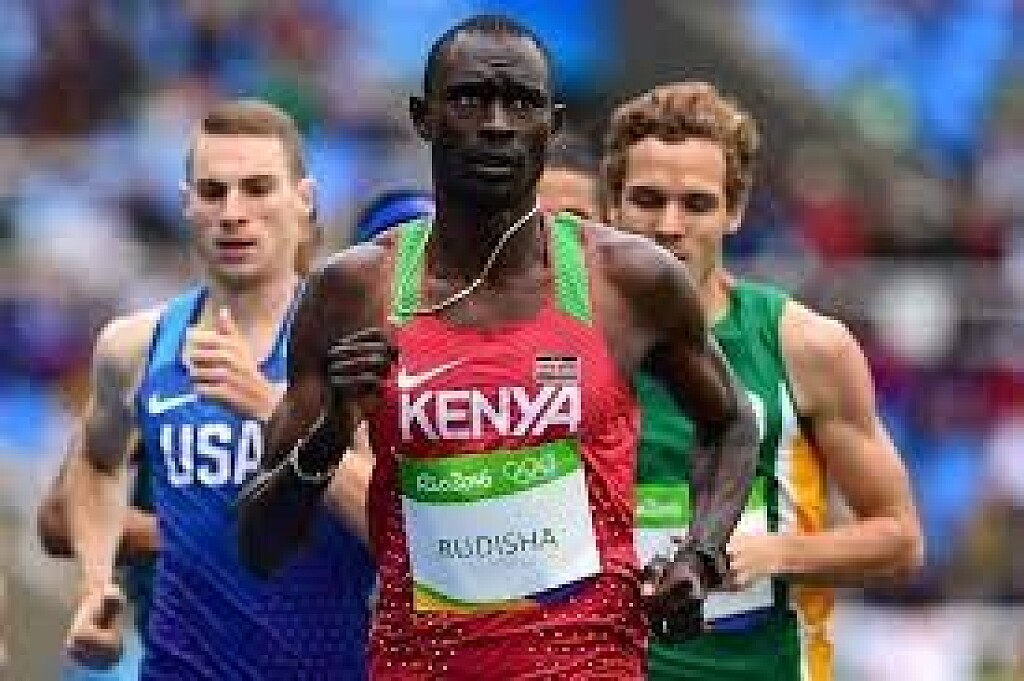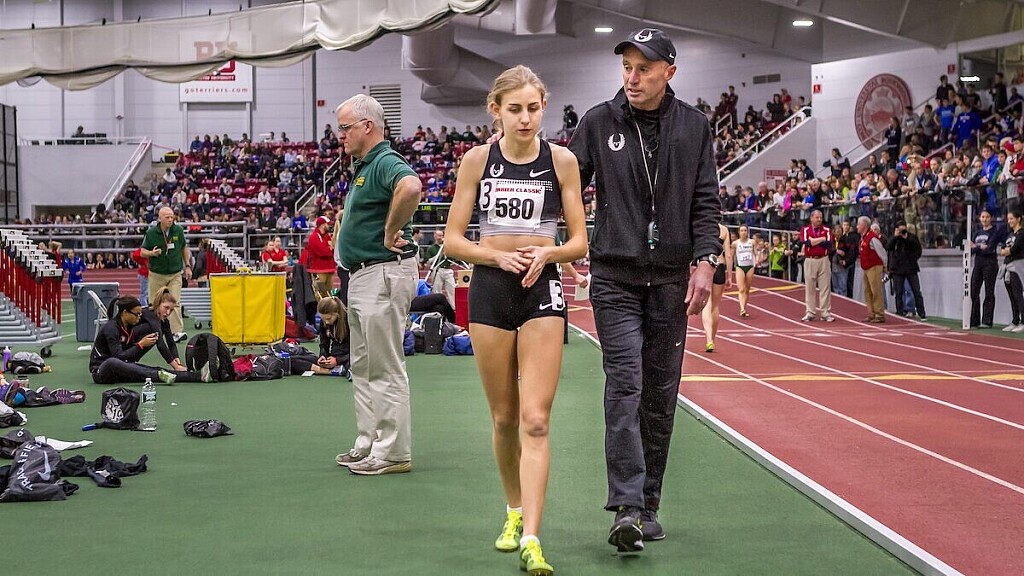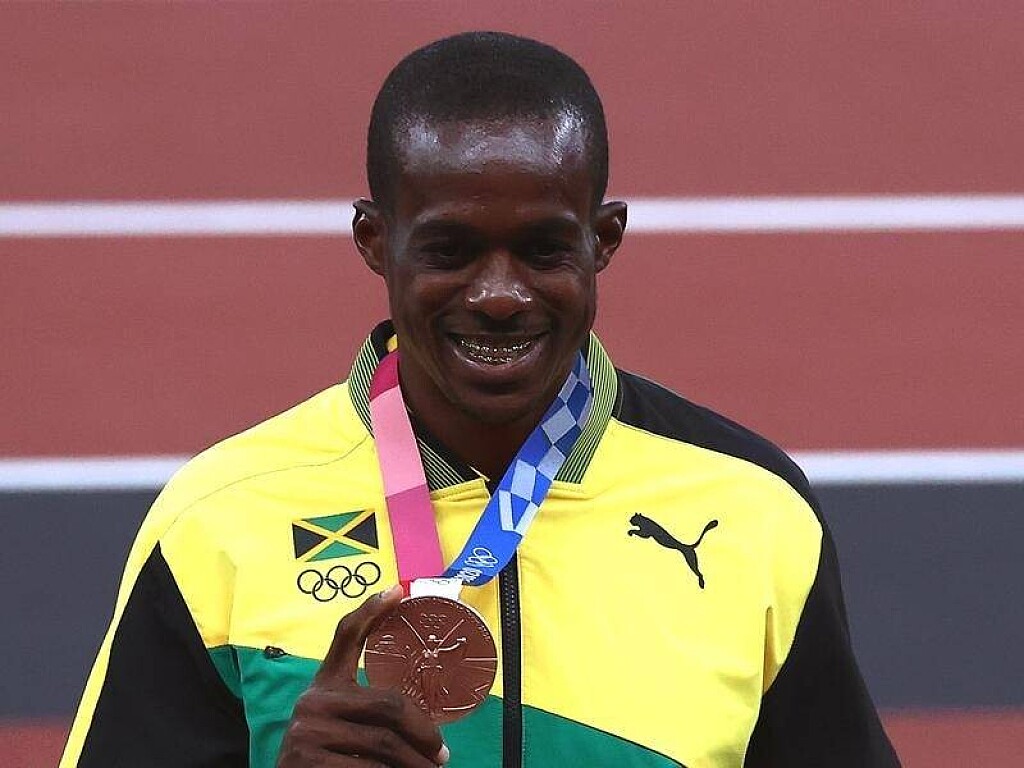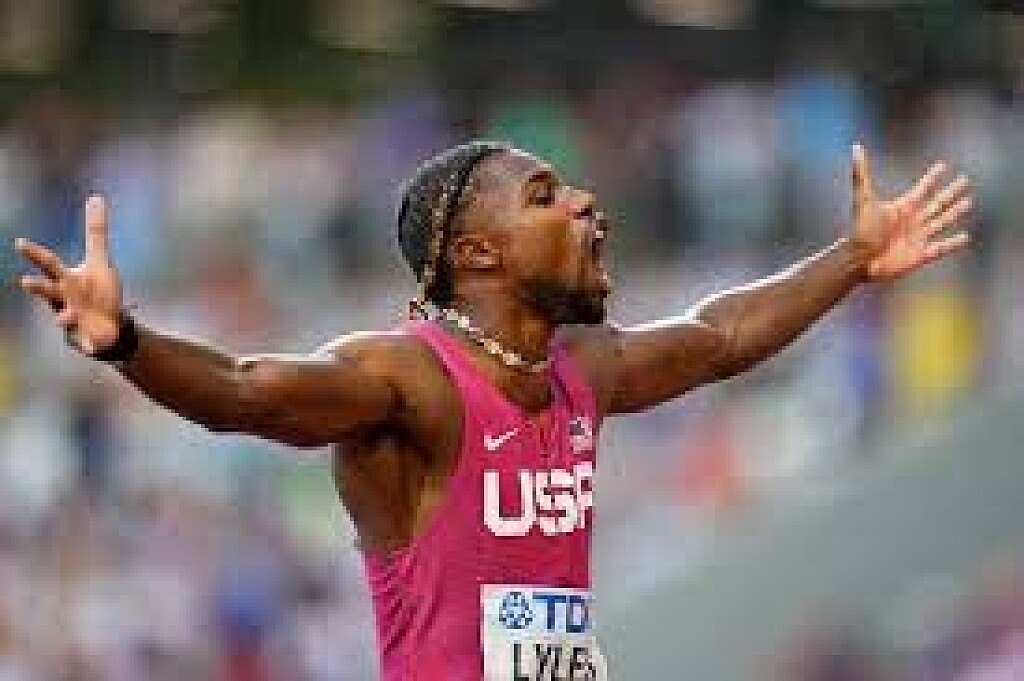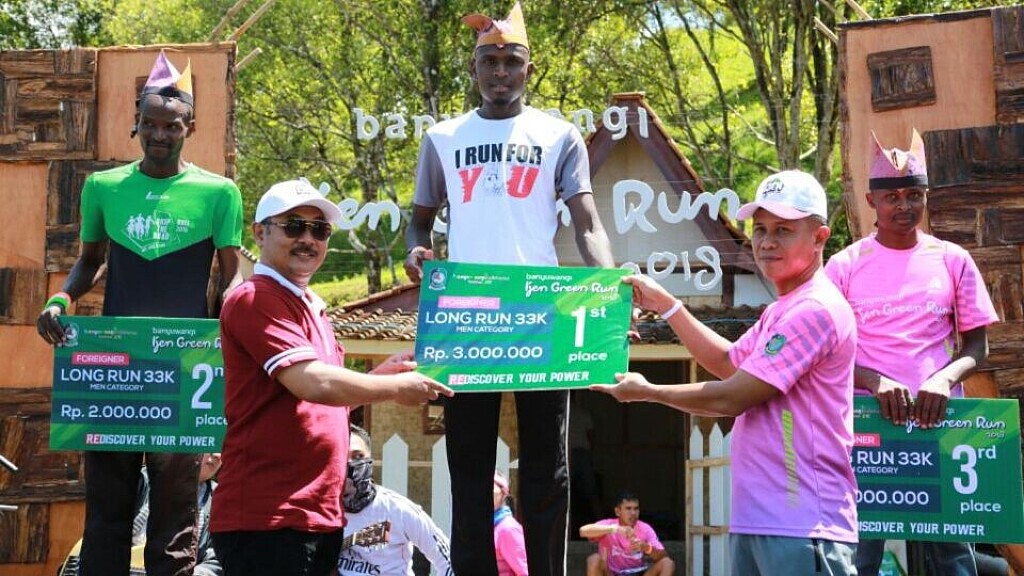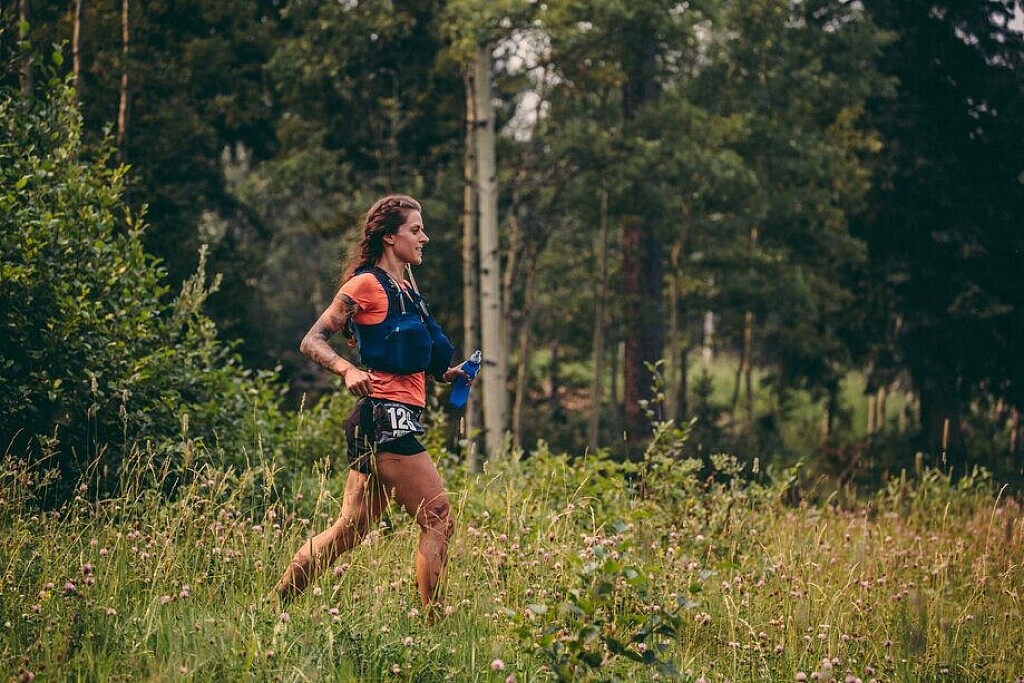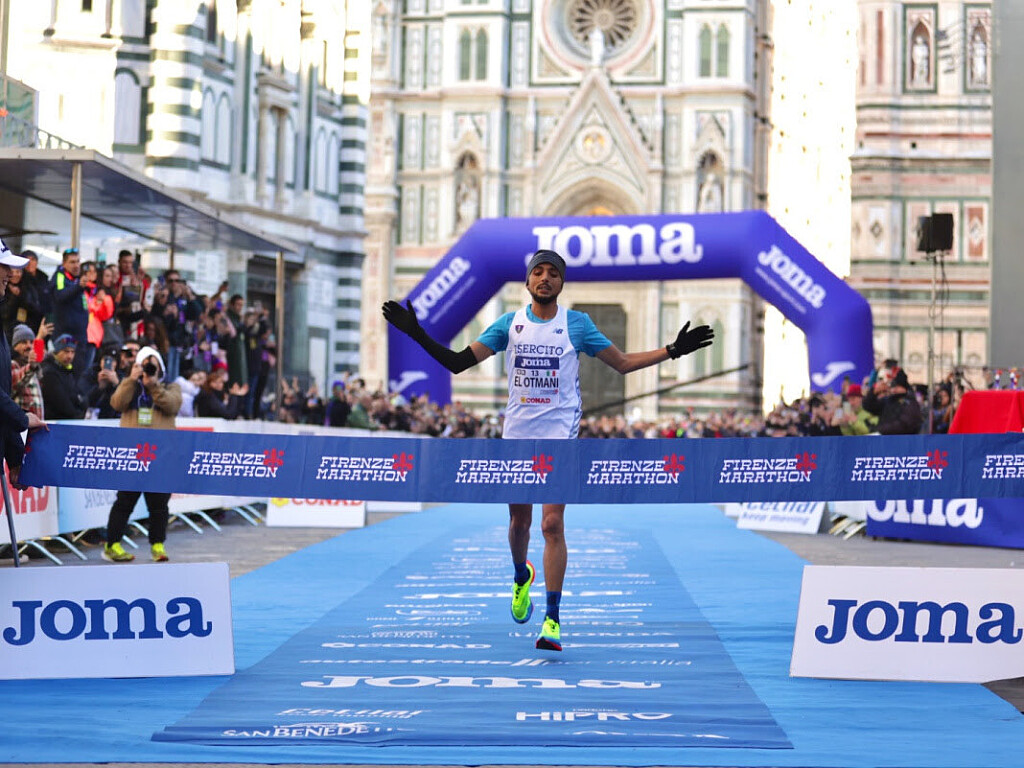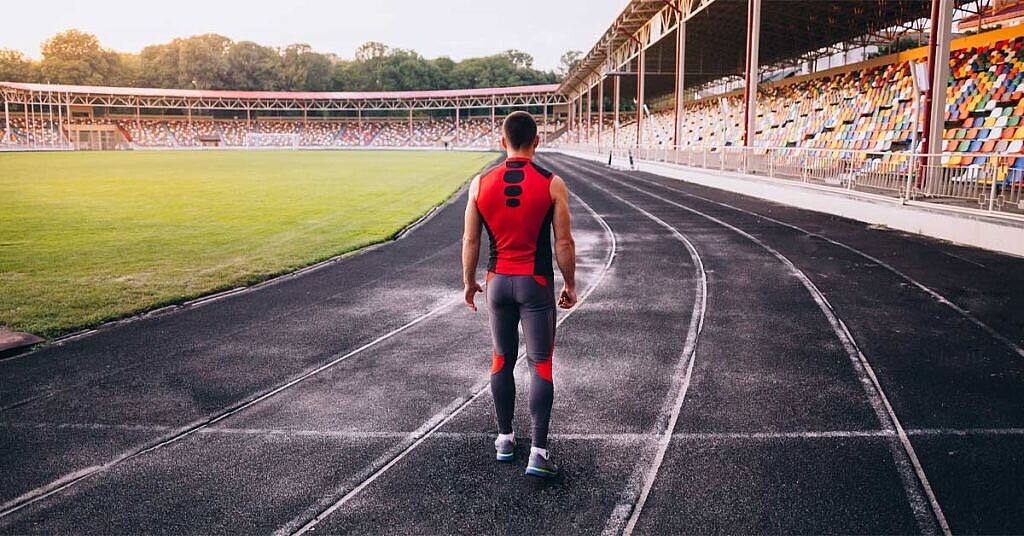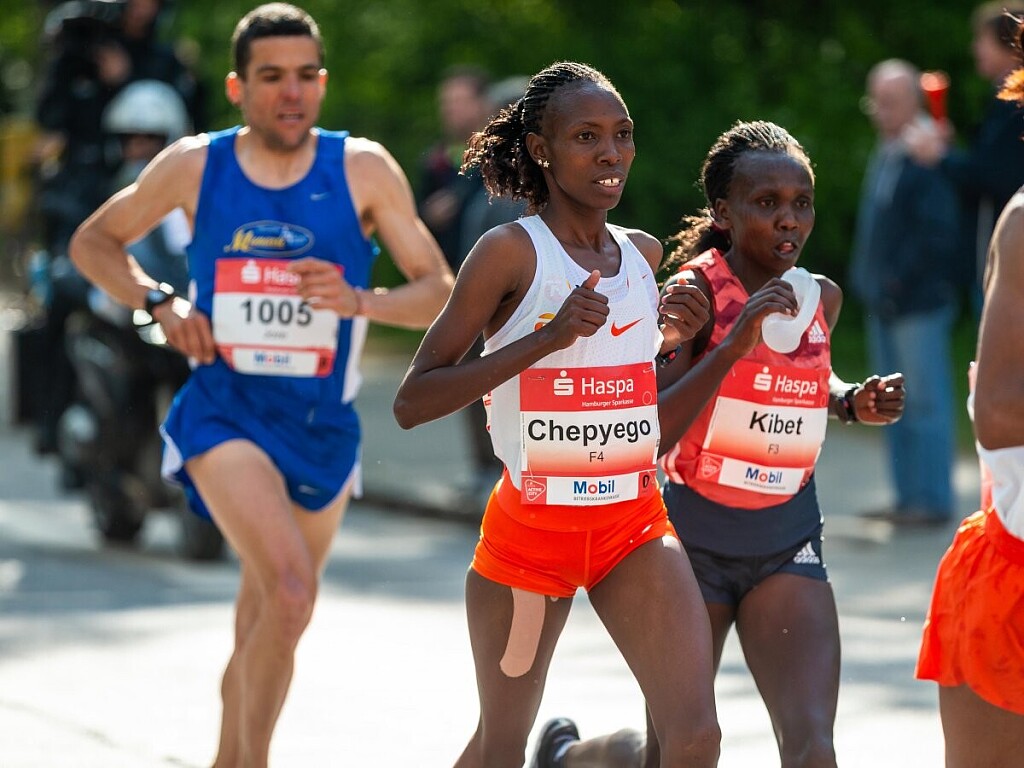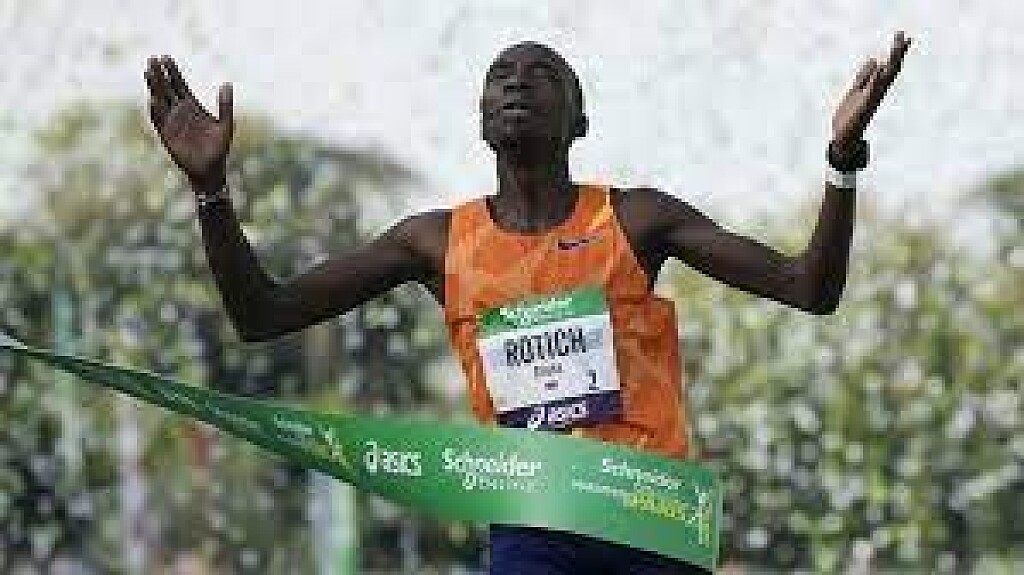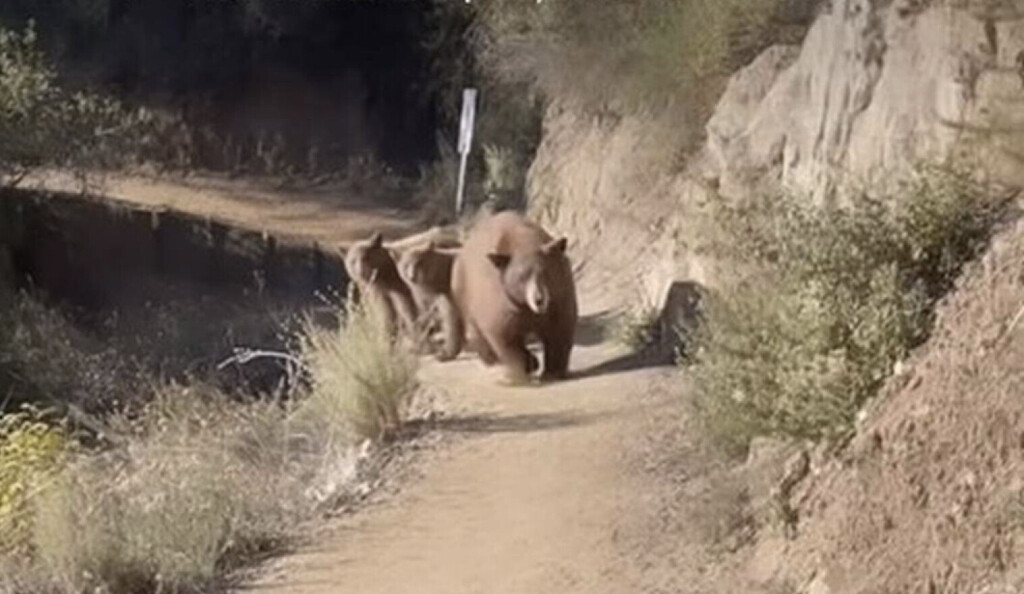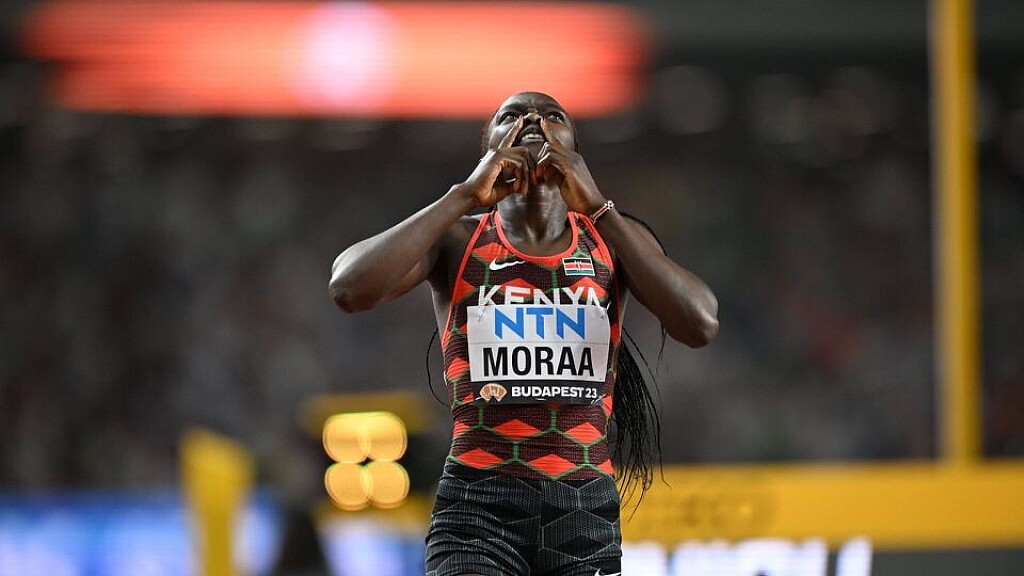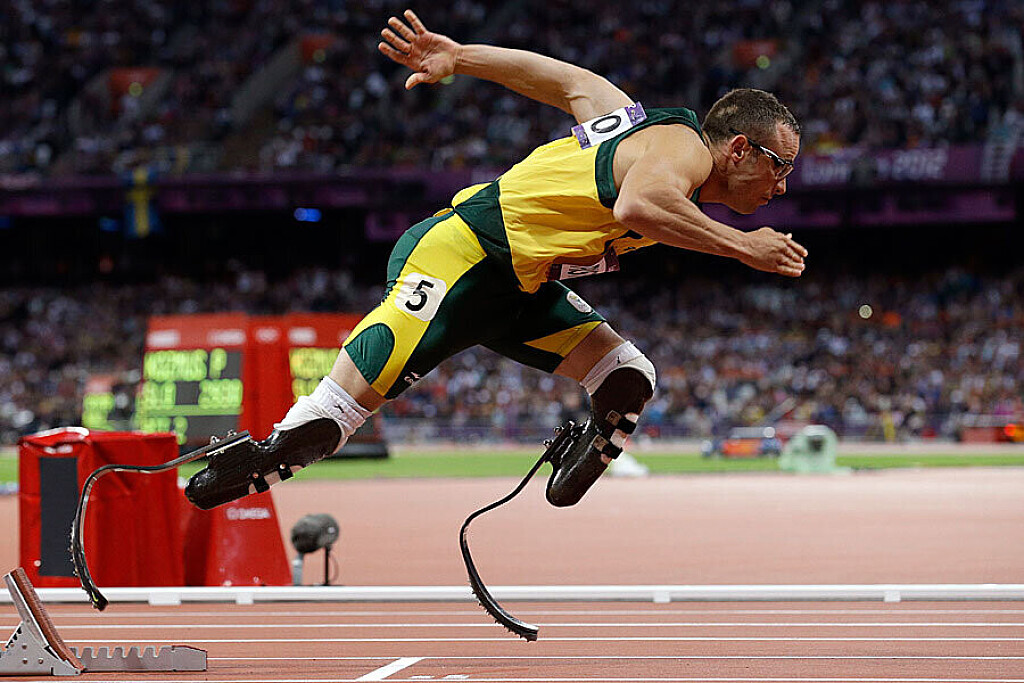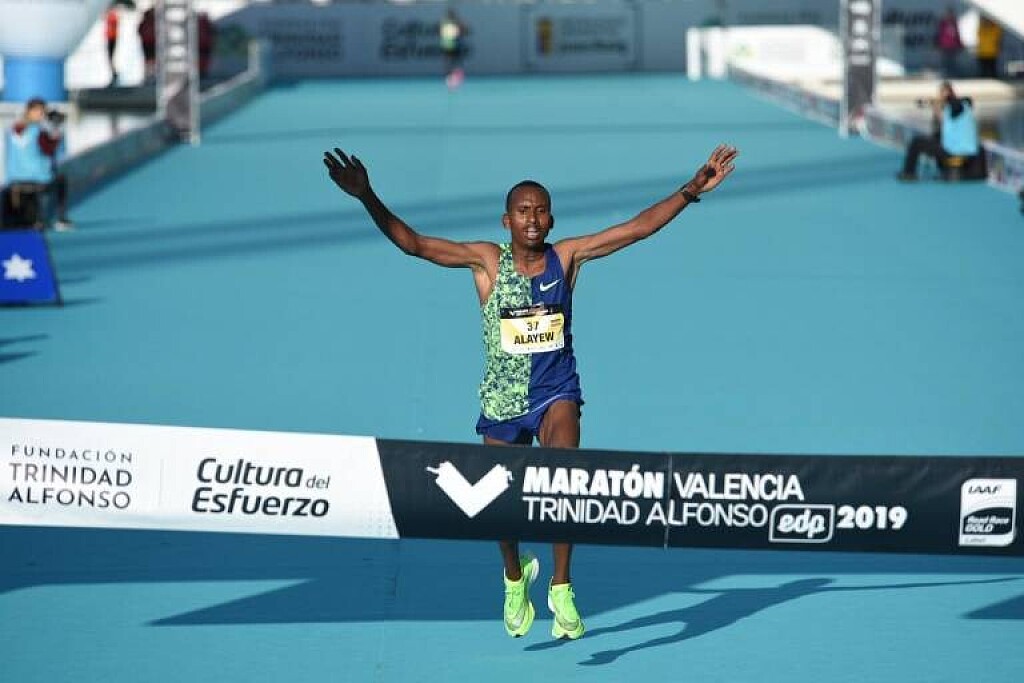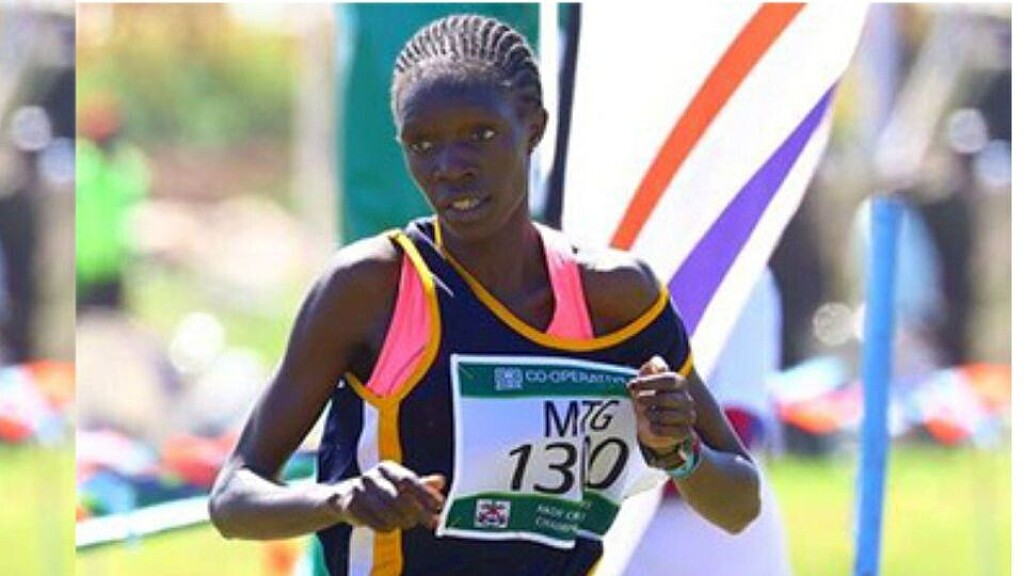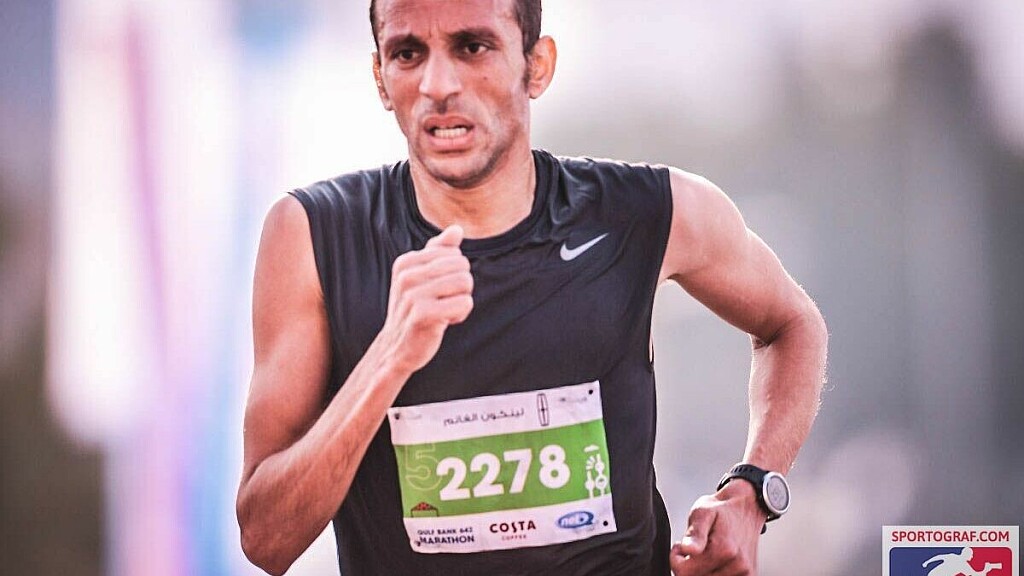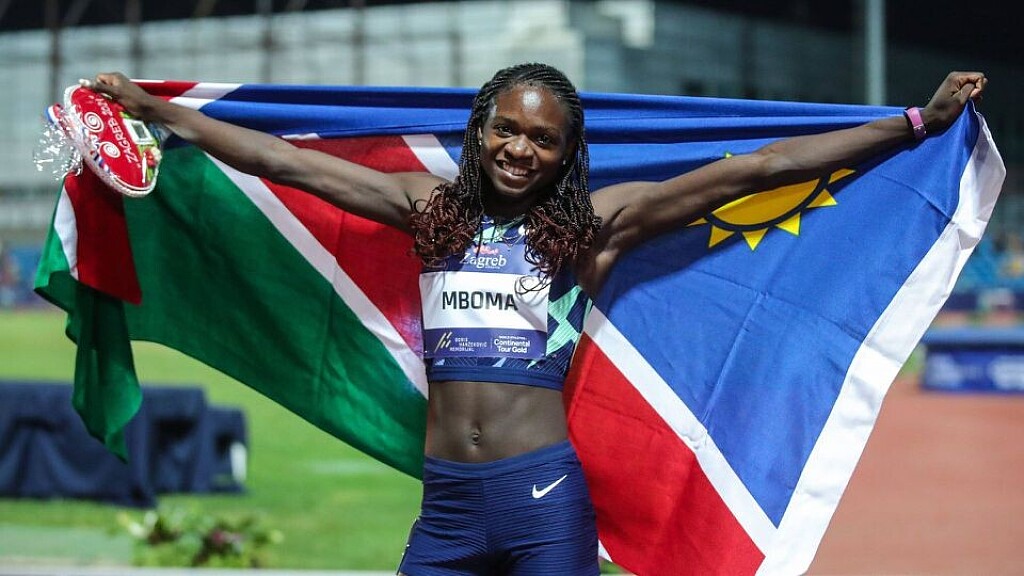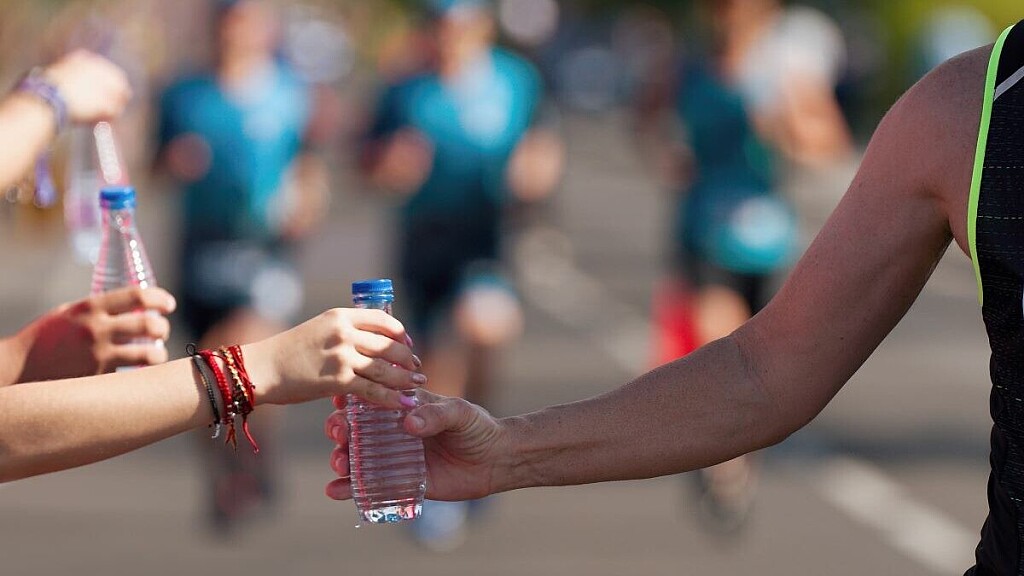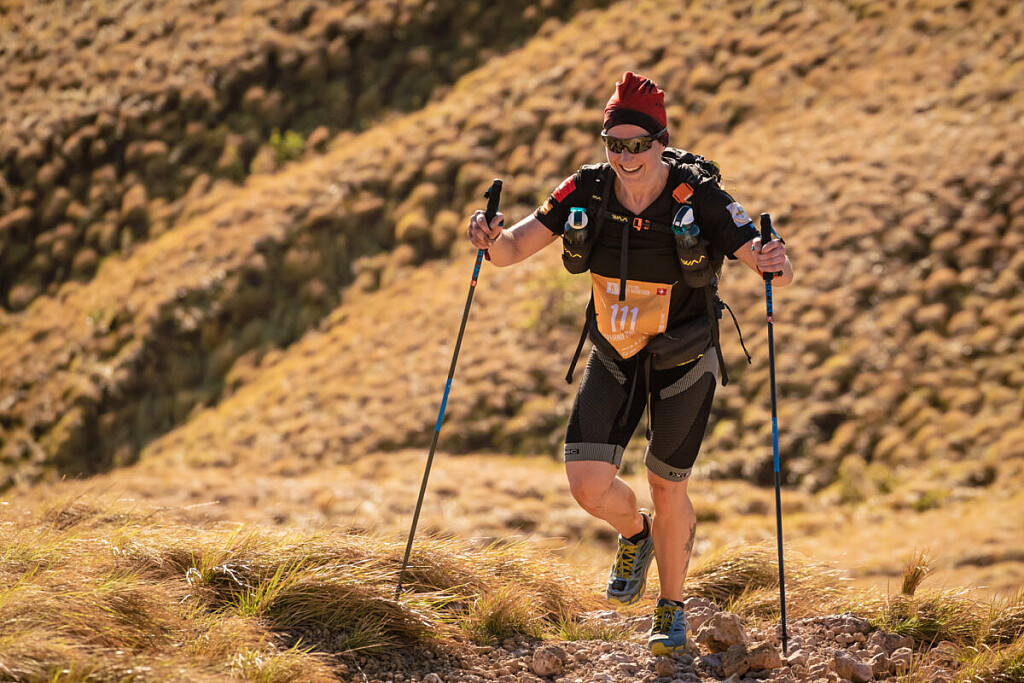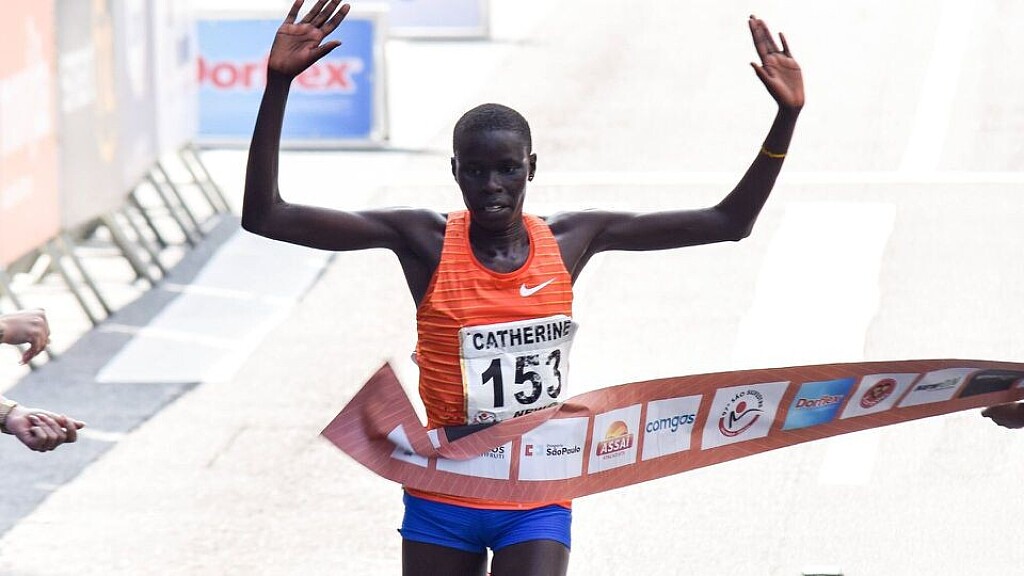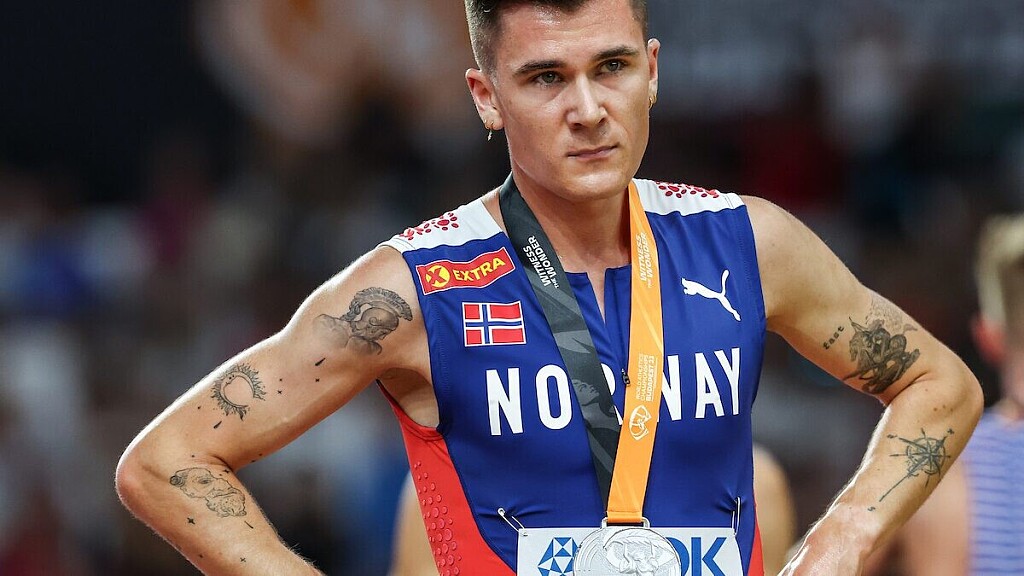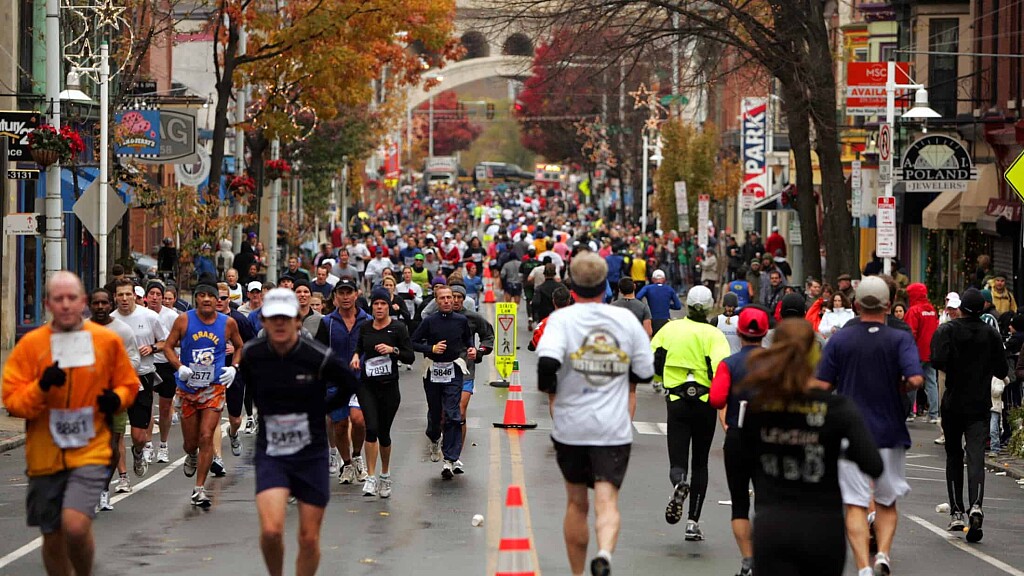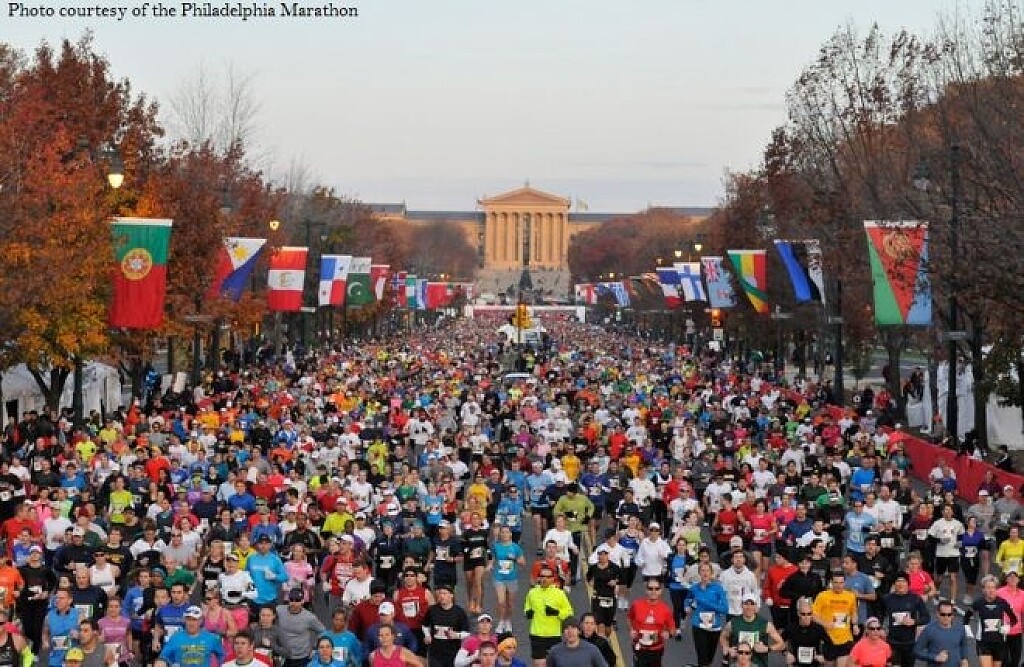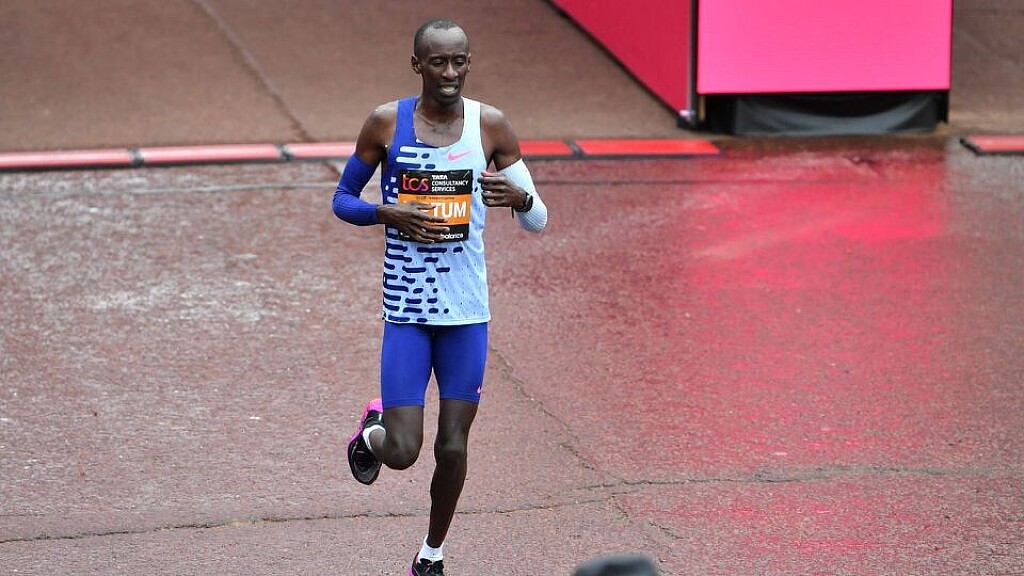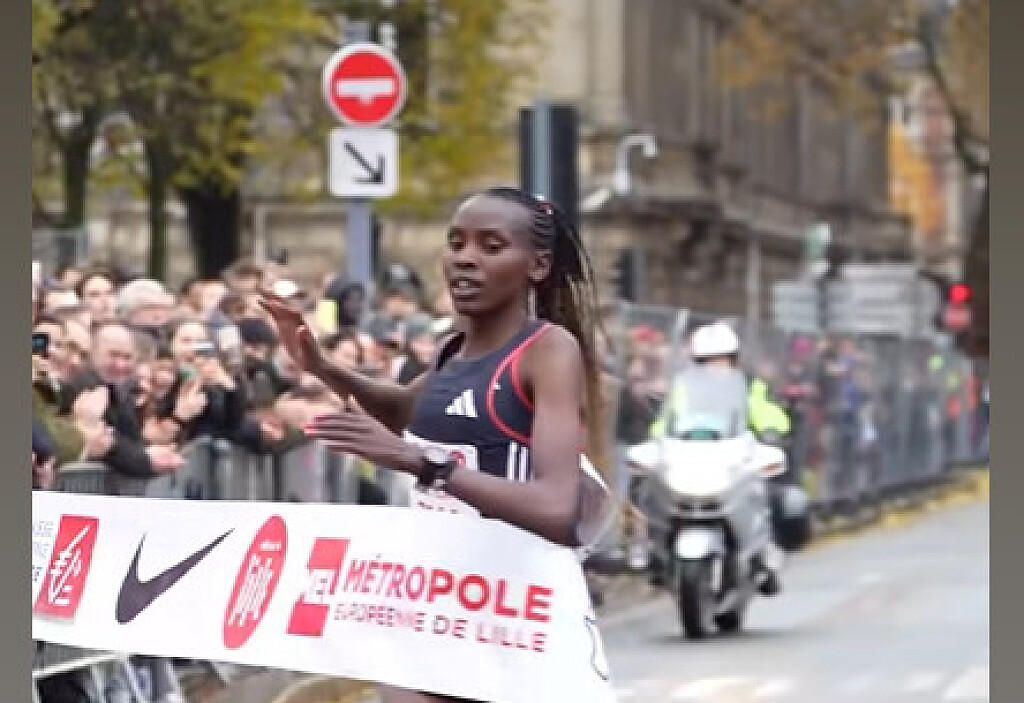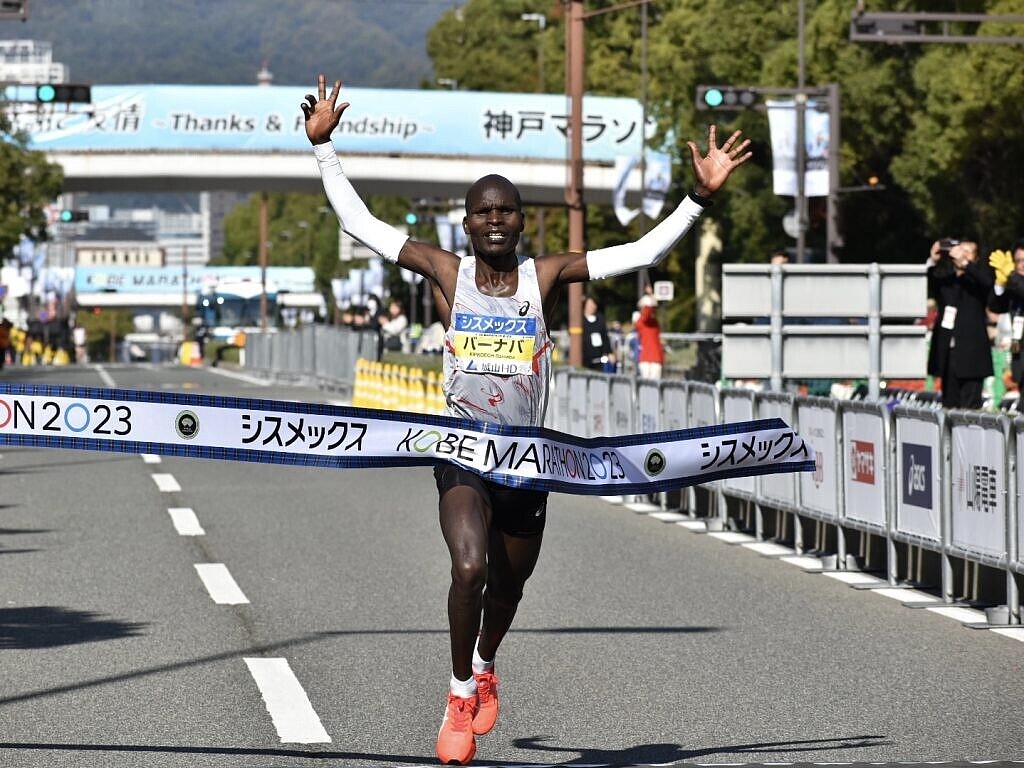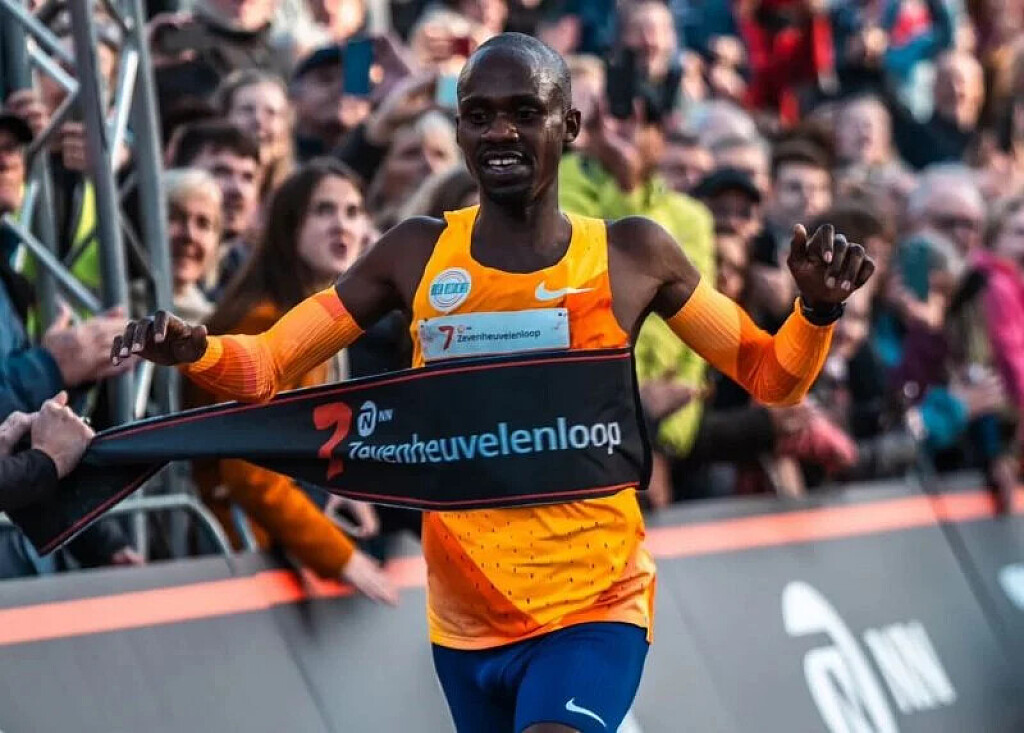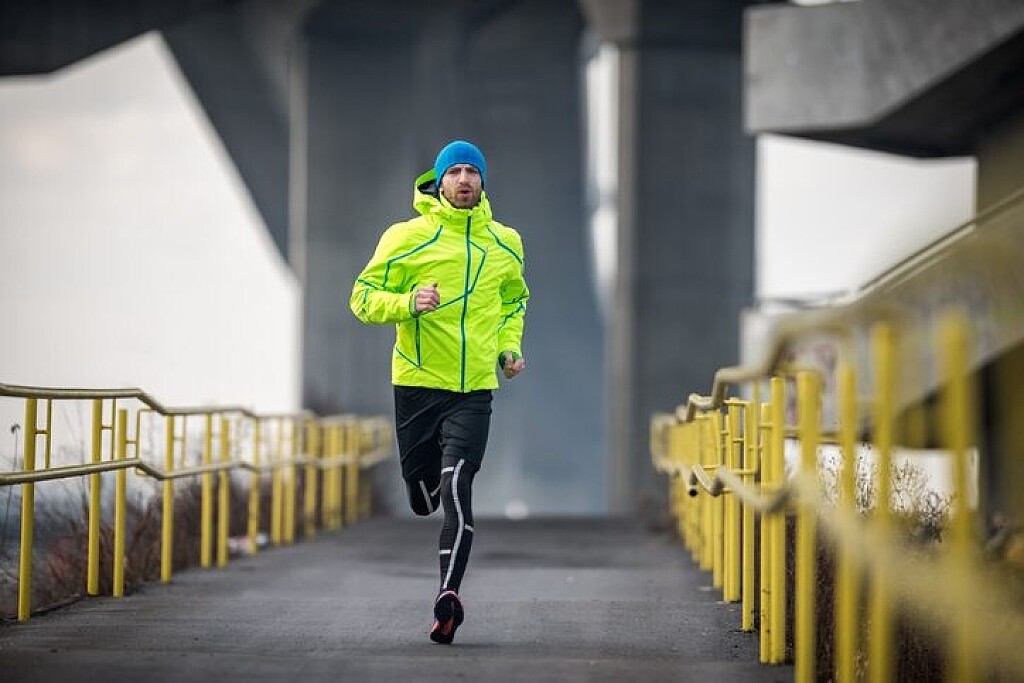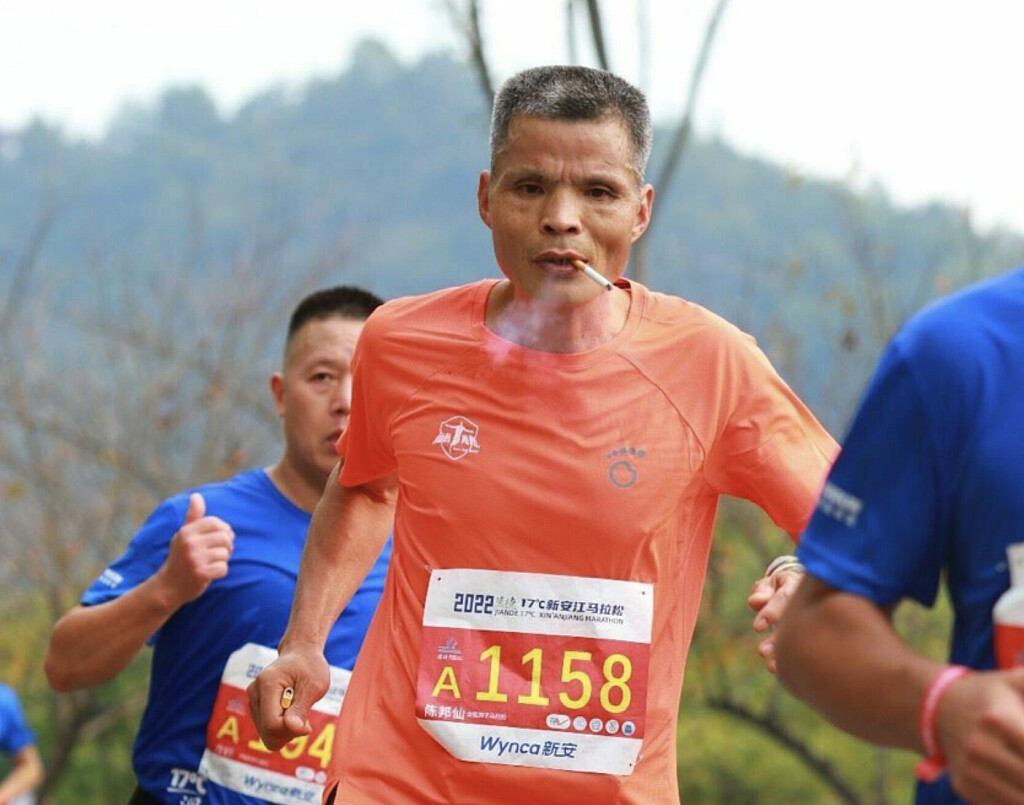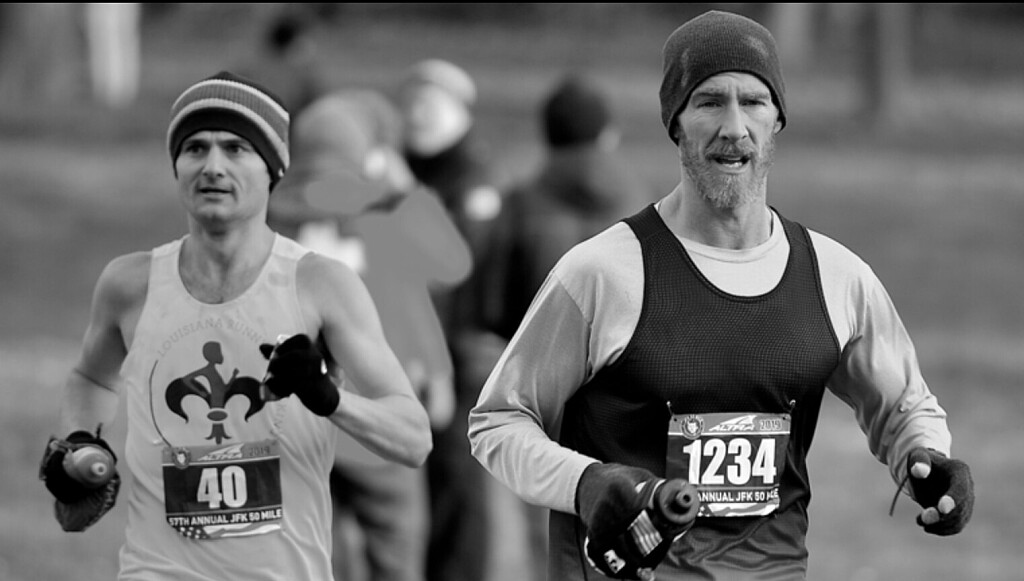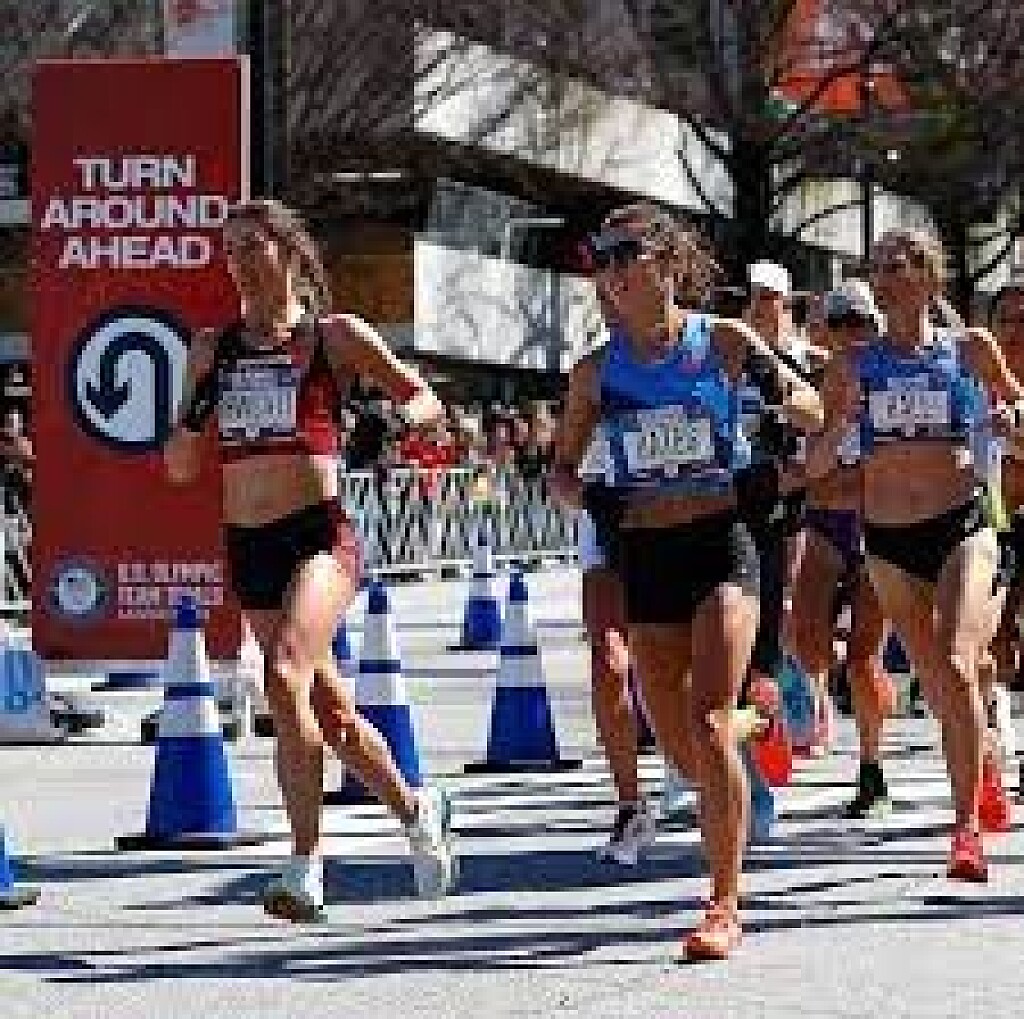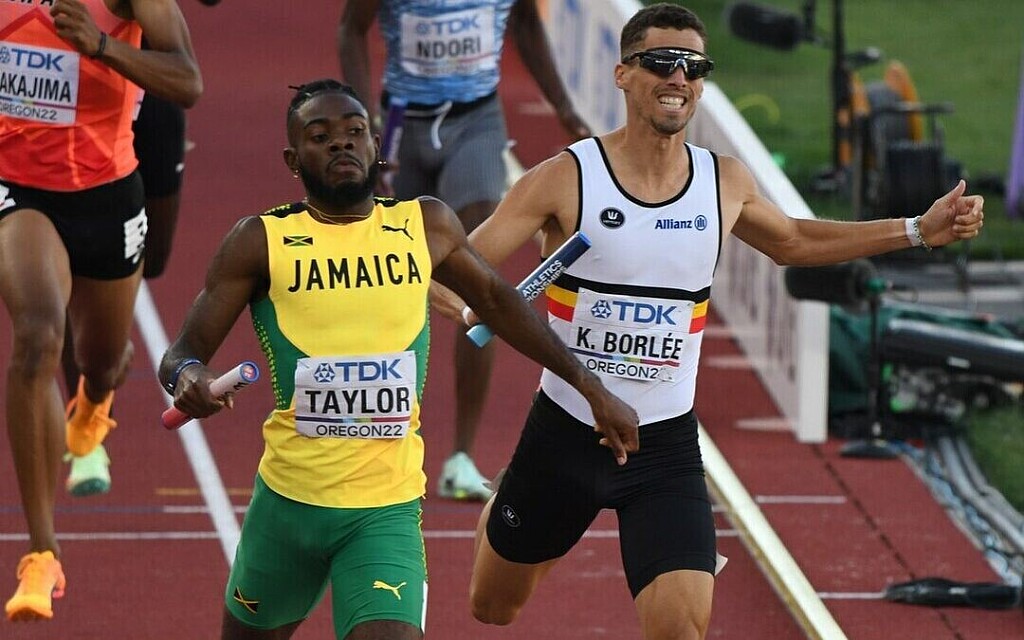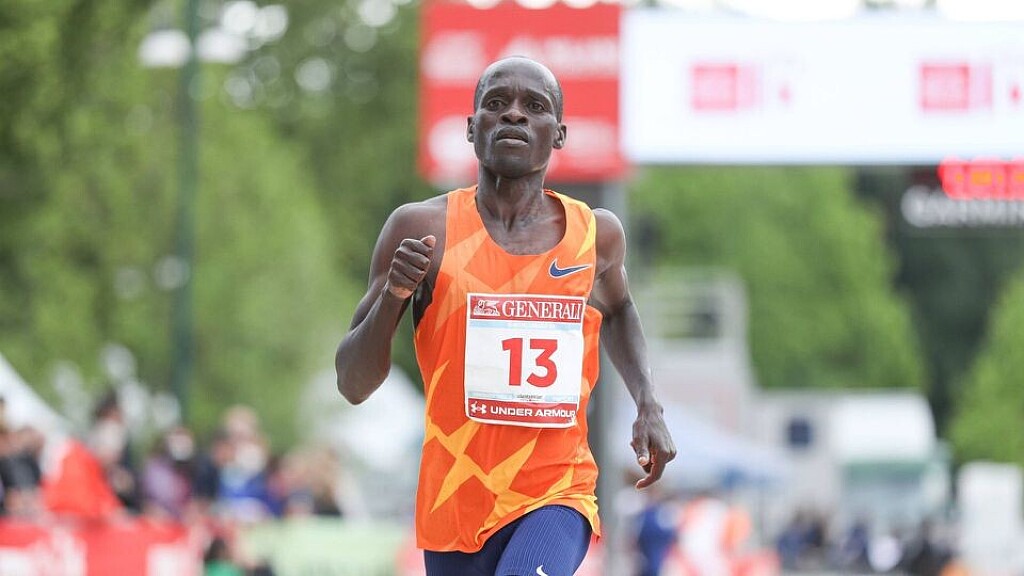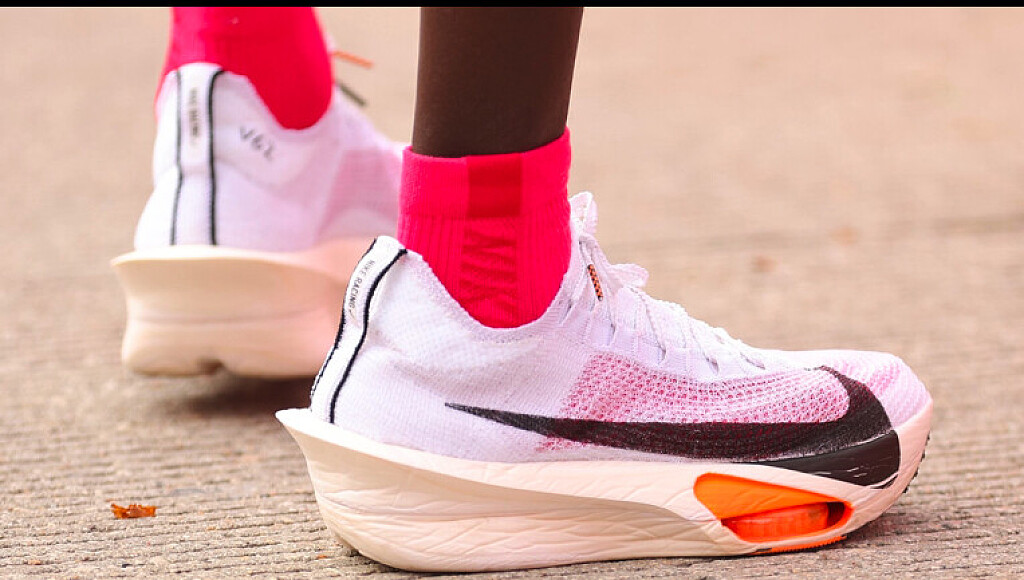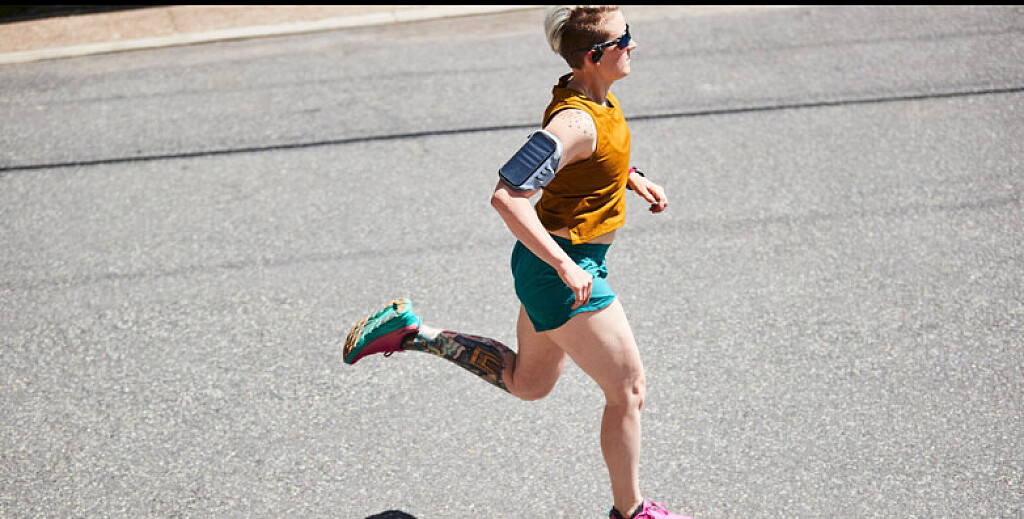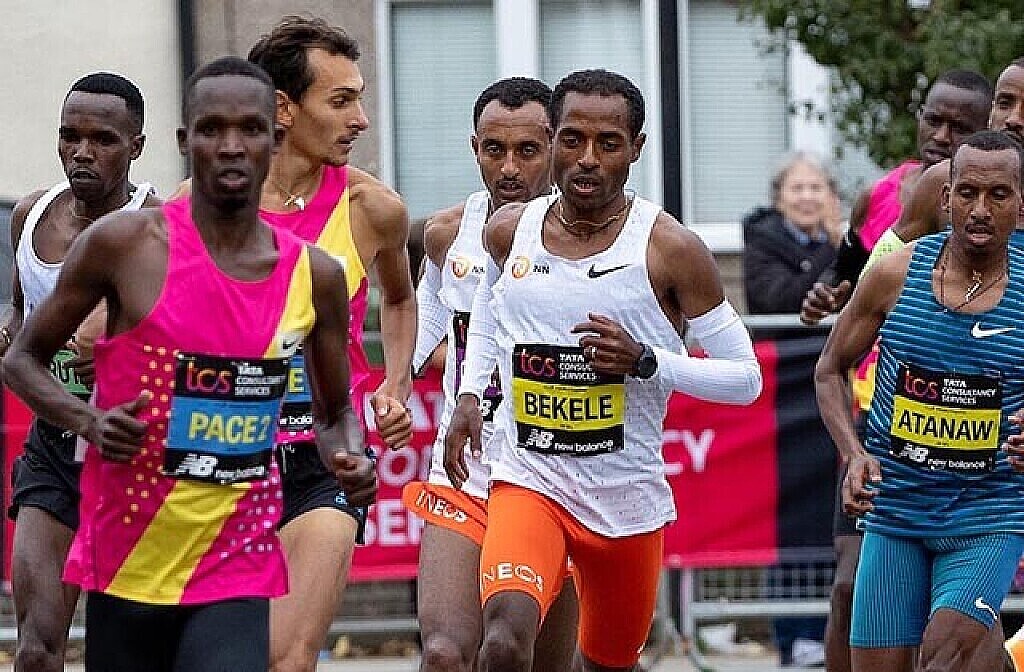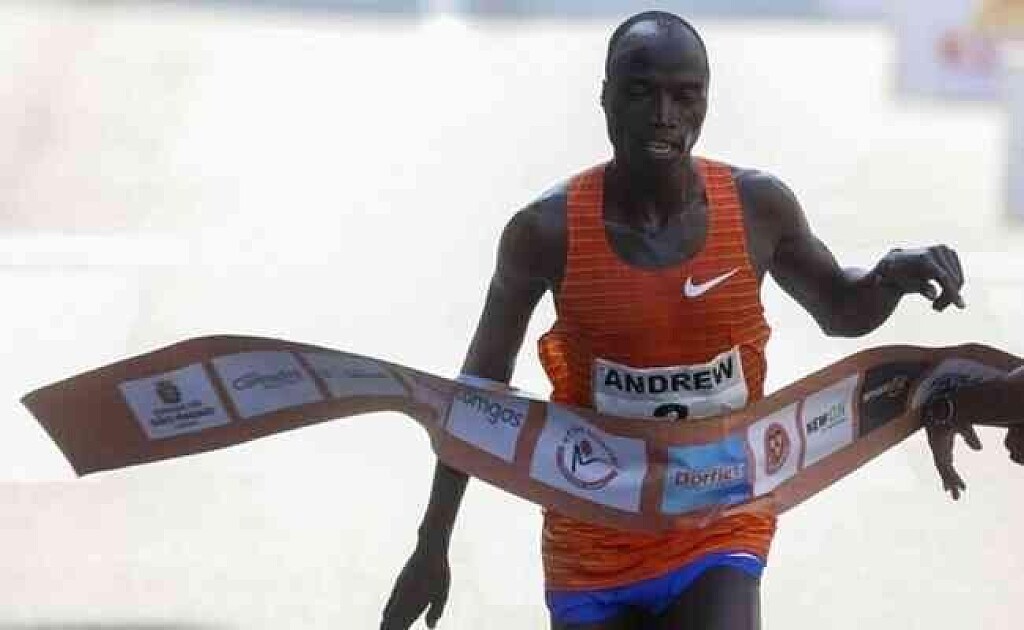Running News Daily
Running News Daily is edited by Bob Anderson in Mountain View, California USA and team in Thika Kenya, La Piedad Mexico, Bend Oregon, Chandler Arizona and Monforte da Beira Portugal. Send your news items to bob@mybestruns.com Advertising opportunities available. Over one million readers and growing. Train the Kenyan Way at KATA Running Retreat Kenya. (Kenyan Athletics Training Academy) in Thika Kenya. Opening in june 2024 KATA Running retreat Portugal. Learn more about Bob Anderson, MBR publisher and KATA director/owner, take a look at A Long Run the movie covering Bob's 50 race challenge.
Index to Daily Posts · Sign Up For Updates · Run The World Feed
Short runs have major health benefits, research says
There’s a consensus that running has positive effects on our physical and mental health, but how many miles do runners need to log before they reap rewards? Most people know those who exercise have less risk for heart disease, cancer and diabetes and tend to live longer, and it’s a commonly held belief that the more time spent pounding the pavement, the greater the benefits. Recent research suggests we don’t actually need to run very much to reap the rewards, The New York Times recently reported.
Longer doesn’t mean better

There’s a growing body of evidence that correlates even much shorter running sessions to significant health benefits, especially those regarding longevity and mental health. Dr. James H. O’Keefe, director of preventive cardiology at St. Luke’s Mid-America Heart Institute in Kansas City, Mo., says that going for a two-mile (3.2 km) run several times a week seems to give people the full benefit of running, in terms of longevity, specifically.
O’Keefe and his colleagues have published multiple studies on running for health and longevity. In one study, he analyzed long-term health and exercise data gathered from 5,000 adults ranging in age from 20 to 92. People who ran between one and two and a half hours per week at a slow or moderate pace seem to have the biggest boost in longevity–even greater than in runners who run more, faster.

Less time training still boosts mental health
Exercise makes us feel better, but more exercise doesn’t necessarily mean more mental health benefits. A recent research review on exercise and depression reported that adults who managed to exercise for the two-and-a-half hours of physical activity per week recommended by most guidelines gained a 25 per cent lower risk of depression when compared to non-exercisers.
Can’t manage to meet the recommended guidelines? Those who completed only half of the recommended two-and-a-half weekly hours still benefited from an 18 per cent lower risk of depression compared to non-exercisers.
“The growing consensus in the field is that the benefits of running start to accrue within minutes,” said Dr. Rajesh Vedanthan, an associate professor of population health at New York University’s Grossman School of Medicine.
If you’re a newer runner easing into regular exercise, or simply can’t fit in longer running sessions, don’t stress: you’re still adding years to your life, reducing your risk of many diseases and bolstering your mental health.
(11/29/2023) ⚡AMPby Keeley Milne
David Rudisha explains significance of Olympic Games in his glittering career
David Rudisha has explained why the Olympic Games are special to him and will forever be in his story.
World 800m record holder David Rudisha will forever hold the Olympic Games close to his heart because of the memories he made.

Rudisha first broke the world record on August 22, 2010, at the ISTAF World Challenge meeting in Berlin where he clocked 1:41.09 to win the race.
He then went ahead to break his own world record, clocking 1:40.91 during the 2012 London Olympic Games which still stands to date. The two-time World champion then defended his title at the Rio Olympic Games in 2016.

“Olympics are very special to me and one of the greatest stages one can compete on…I have so many memories of the event.
"That is where I made history in London 2012 where I won the 800m and broke the world record. I also defended my title in Rio in 2016.
"It is a special event and will always remain in my mind and will be a story for the rest of my life because that is where I hit the top,” Rudisha said.
The 34-year-old is also bubbling with excitement ahead of next year’s Olympic Games scheduled for Paris, France where he will particularly be following the 800m.
Rudisha revealed that he is expecting a good outcome since there are strong athletes who have come up in the two lap race.
He singled out world 800m champion Mary Moraa and silver medallist Emmanuel Wanyonyi, noting that he expects them to do wonders.
“The 800m is close to my heart since it was my specialty during my prime. I’m very keen and will be looking forward to seeing young guys like Wanyonyi who did very well at the World Championships.
"We hope he will be more experienced and will be the one to watch. Moraa will also be trying her best to clinch Kenya a gold medal since it’s missing in her trophy cabinet,” he concluded.“The 800m is close to my heart since it was my specialty during my prime. I’m very keen and will be looking forward to seeing young guys like Wanyonyi who did very well at the World Championships.
"We hope he will be more experienced and will be the one to watch. Moraa will also be trying her best to clinch Kenya a gold medal since it’s missing in her trophy cabinet,” he concluded.
(11/29/2023) ⚡AMPby Abigael Wuafula
Track and Field Historian Mike Fanelli Dies of Cancer at 67
Mike Fanelli, the owner of one of the largest track and field memorabilia collections in the United States, died on Saturday after a battle with glioblastoma, an aggressive form of brain cancer. He was 67 years old.
For over 50 years, Fanelli collected running-related memorabilia, which he stored in the “Track and Field Garage” at his home in Sonoma County, California. The expansive collection features over 4,000 artifacts, including the meet program from the first indoor track meet held in the United States in 1868, as well as every issue of Track and Field News and Runner’s World.
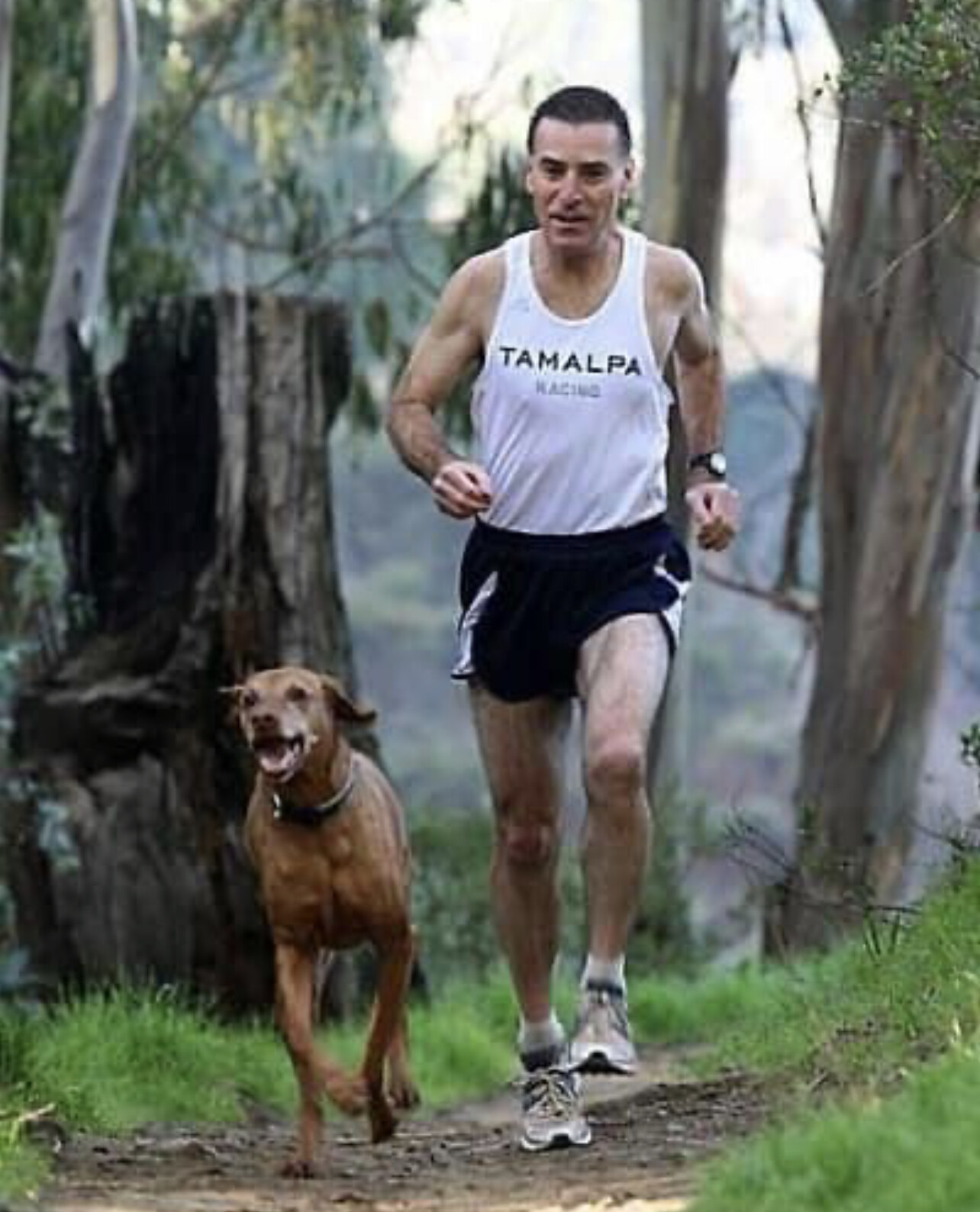
Fanelli made his mark on the sport of track and field throughout his life. He represented athletes as an agent, coached the Impala Racing Team, and served as the USATF National Cross-Country chairman in the 1990s. He’s also the namesake for the Mike Fanelli Track Classic, held at his alma mater, San Francisco State University, each spring.
But Fanelli’s impact, perhaps, is best exemplified by the connections and friends he made along the way. Until just days ago, Fanelli would routinely post track and field trivia facts to an audience of over 4,000 Facebook friends. If you look closely, you’ll find legends of the sport reminiscing about old races or giving their two cents in the comments.
Fanelli’s wife, Renay Weissberger Fanelli, released a statement on Monday announcing his passing: “It is with unbearable sadness that I share with you that Michael has passed away from brain cancer, at home, surrounded by loved ones. While he was a public figure in many ways, he was also a very private person. Because of that, he chose not to share his diagnosis broadly, preferring to live his life as if he was living, not dying.”

Fanelli lived his life fully up until his last moments. Last month, he completed his goal of running 115,000 miles in his life, dutifully logging each run in composition notebooks.
In 2021, Fanelli told Runner’s World why he feels cataloging running history, with the help of his track-nerd friends, is so important. Running history, he noted, is not particularly well recorded.
“I refer to it as ‘cultural storytelling,’” he said. “When a particular culture wants to pass down their history over the years, and it’s not something that can be transcribed otherwise, this is our opportunity to do that.”
(11/28/2023) ⚡AMPby Runner’s World
Nike and Alberto Salazar settle $20 million lawsuit with Mary Cain over alleged abuse
On Monday, Nike, disgraced coach Alberto Salazar and distance runner Mary Cain reached a settlement in the $20 million lawsuit filed by Cain, as reported by The Oregonian.
The lawsuit accused Salazar of emotional and physical abuse towards Cain and highlighted Nike’s alleged failure to provide adequate oversight during her time with Salazar. Cain, who ran for Nike’s Oregon Project from 2012 to 2016, spoke out in 2019 about abuse within the program, exposing broader cultural issues at Nike, including a reported “boys’ club” atmosphere.

Salazar, once celebrated for coaching Olympic medallists Mo Farah, Galen Rupp and Matt Centrowitz, faced a permanent ban from working with U.S. track and field by U.S. SafeSport for alleged sexual assault and a doping scandal. Nike disbanded the Oregon Project in 2019, and Salazar’s name was removed from a building on the company’s campus following the ban.
Cain’s allegations against Salazar included controlling behavior, inappropriate comments about her body and humiliating practices, which led to depression, an eating disorder and self-harm. Nike was implicated in the lawsuit for allegedly not taking sufficient action to protect Cain, a sponsored athlete. Salazar denied the allegations, emphasizing his commitment to athletes’ well-being. Cain filed the $20 million lawsuit in 2021.

Numerous runners have come out and criticized Nike for its lack of support for female athletes. In 2018, U.S. Olympian Allyson Felix called out the brand for allegedly asking her to take a 70 per cent pay cut during her pregnancy, prompting Felix to leave Nike and join the female-powered brand Athleta before the Tokyo Olympics.
(11/28/2023) ⚡AMPby Marley Dickinson
Jamaican Olympic bronze medalist in the 110m hurdles, Ronald Levy faces potential 4-year ban
Jamaican Olympic bronze medalist in the 110m hurdles, Ronald Levy, faces a significant setback in his athletic career as the B-sample from his recent drug test has returned positive for two banned substances.
The initial discovery of these substances was made in his A-sample during an out-of-competition test conducted last month by the World Anti-Doping Agency (WADA) lab in Canada.

As a result of the positive B-sample, Levy now faces a hearing and the possibility of a four-year ban from competitive athletics. Such a ban could have far-reaching implications, potentially ruling him out of participating in the upcoming Paris Olympics in the summer of next year, as well as the World Athletic Championships scheduled for 2025 and 2027.
Banned Substances Identified

According to Radio Jamaica Sports sources, the two banned substances detected in Levy’s sample are GW501516-Sulfoxide and GW501516-Sulfone. The presence of these prohibited substances raises serious concerns about Levy’s adherence to anti-doping regulations.
Earlier this month, the athlete confirmed the adverse finding through his Instagram page, disclosing that he had been notified of the test results on November 3. However, he did not initially reveal the names of the specific drugs that led to the adverse finding.
The development casts a shadow over Levy’s athletic career and places his future participation in major international competitions in doubt. It also underscores the importance of strict adherence to anti-doping protocols and the consequences of violating anti-doping regulations in the world of sports.
(11/28/2023) ⚡AMPby Ben McLeod
Noah Lyles reveals what he would have become if not for athletics
Noah Lyles' sponsor Adidas have appreciated him over a recent clip where he revealed that if he had not been an athlete he would have been an artist.
Triple world champion Noah Lyles has disclosed that if he would not have carved out a career in athletics, he would be an artist.

During a ‘Never Have I Ever’ game with Meta endurance news, Lyles disclosed that he has done many different types of art and he would definitely be somewhere painting or singing if he would not be an athlete.
“I was going to be an artist before being an athlete…I’ve done many different types of art. Actually, I went to a school for the arts when I was in middle school. I was really going to be an artist,” Lyles said.
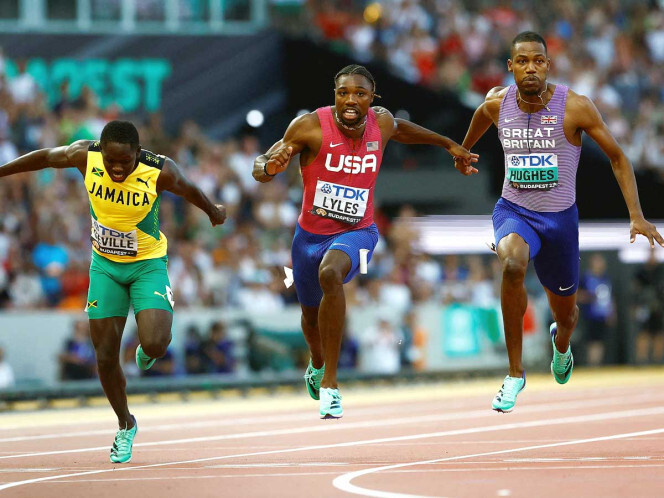
In the video posted on Instagram, Adidas commented saying: “Lucky for us all, he turned out to be a world champion.”
Meanwhile, Lyles has made headlines this season where he was unbeaten in the 200m. Lyles also bagged double gold, in the 100m and 200m, at the World Championships in Budapest, Hungary. The American also propelled the 4x100m relay team to victory at the Hungarian capital.
He finished second behind compatriot Christian Coleman in the 100m at the Diamond League Meeting final, Prefontaine Classic.
Aside from showcasing his talent on the track, Lyles has also modeled for top brands including Hugo Boss, and has managed to earn millions from his stunning sense of fashion.
(11/28/2023) ⚡AMPby Abigael Wuafula
Noah Lyles
Kenyan runner could face harsh penalty after winning race during doping suspension
James Karanga was provisionally suspended earlier this month and he reportedly competed and won a race, an incident that might place him in hot soup.
Marathoner James Karanja has landed himself in hot soup after competing and winning a race despite being provisionally suspended by the Athletics Integrity Unit (AIU).
However, as reported by the Canadian Running Magazine, Karanja breached the AIU rules and went ahead to compete and win the Tropical Rainforest Run, a trail half-marathon in Tawau Hills, Malaysia, on Sunday.
According to the AIU, all athletes are prohibited from competing during a provisional suspension, while they investigate the case.
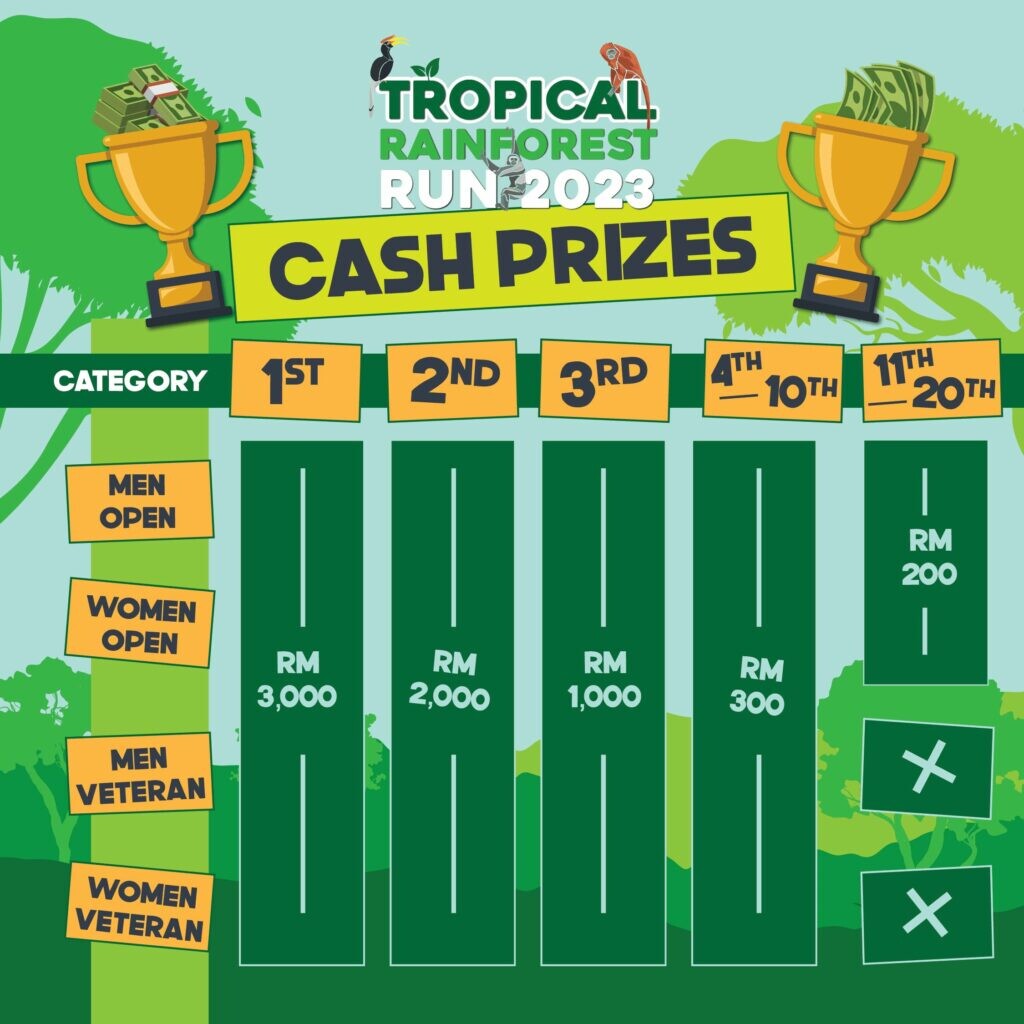
The southeast Asia-based athlete won the 21.1K trail race with 800m of vertical outright in two hours and six minutes. He was awarded 3,000 Malaysian ringgit for his win, which is roughly Ksh 99,000.
Meanwhile, earlier this month, Karanja was provisionally suspended after testing positive for the use of a prohibited substance at the 2023 Kuching Marathon in Malaysia.
According to the AIU, Karanja tested positive for the prohibited substance Norandrosterone during an in-competition test at the 2023 Kuching Marathon, where he finished fourth and was eligible for prize money.
Norandrosterone is a metabolite of the anabolic steroid nandrolone, which is used to enhance performance, increase muscle, and expedite recovery.
Even if Karanja is found innocent, he could face up to four years for competing while suspended.
According to the race website, the deadline to register was before his suspension was made public, but a considerable time after Karanja was notified. The Tropical Rainforest Run’s website makes no mention of anti-doping.
(11/28/2023) ⚡AMPby Abigael Wuafula
Canadian ultrarunner Priscilla Forgie loves this super-quick soup
It can be tricky to fit both healthy eating and regular running into an already jam-packed schedule, especially during the holiday season. This lightning-quick soup recipe, a favorite of Canadian ultrarunner Priscilla Forgie, is full of nutritious vegetables (easily tailored to your taste), with a lentil protein boost and lasagna noodles to up your carbohydrate game. It’s the perfect meal-in-a-pot to cook up in mere minutes after a nippy winter training session.
Forgie, an Edmonton-based ultrarunner, is coming off a stellar 2023 season, with a top-ten finish at Western States 100, and 12th place at CCC (100K) by UTMB. She enjoys experimenting with plant-based recipes (Forgie is vegan) to fuel her adventures, and for this soup, notes: “I always add extra nutritional yeast for added cheesiness.” While the recipe comes together in moments in an Instant Pot (or other pressure cooker), it can easily be made on the stovetop and left to simmer (leave the noodles out until shortly before you are ready to eat).

Instant Pot Lasagna Soup
(adapted from Vegan Richa)

Ingredients
1 tsp oil
1/2 onion chopped
1 cup chopped veggies (can be a combo of peppers, carrots, zucchini or whatever you prefer)
1/4 cup red lentils (uncooked)
1 cup tomato puree (or marinara or tomato sauce)
1-1.5 cups diced tomato
2 tsp Italian seasoning (1 tsp basil, 1/2 tsp oregano and parsley, with a generous dash of thyme/sage and rosemary)
1/4 tsp each onion powder, garlic powder
1/2 to 3/4 tsp salt (use less if there is salt in the tomato sauce)
2 cups water or veggie broth
5 oz lasagna sheets, broken into small pieces (or pasta of choice)
Black pepper and red pepper flakes to taste
1 Tbsp nutritional yeast
1 cup packed spinach (optional)
Directions
Heat oil in Instant Pot on sauté mode. When hot, add onion, garlic and a pinch of salt. Cook for two minutes, stirring occasionally.
Add veggies and stir in. Add red lentils, tomato purée, tomato, salt, Italian seasoning, onion powder and garlic powder and mix in. Add lasagna sheets and water or broth, mix in well (use smaller pieces for the Instant Pot).
Close the lid and pressure cook on manual high for three minutes. Let the pressure slow-release for 10 minutes, and if there is still pressure left in the pot, manually release it carefully to open.
Mix in the black pepper, pepper flakes and nutritional yeast. Taste and adjust salt and flavor if needed.
Fold in the spinach if using. Let sit for a few minutes before serving, and add vegan cheese (or regular cheese, if you prefer) for a more lasagna-like flavor. Enjoy!
(11/27/2023) ⚡AMPby Keeley Milne
Said El Otmani brings Italy back to the throne of the Firenze Marathon
It is finally Mameli's anthem that resonates on the occasion of the 39th Firenze Marathon . On the top step of the podium the national tricolor flies thanks to the blue Said El Otmani , king of this edition who wins in 2h12'39" twenty years after Angelo Carosi's last success in 2003. The athlete of Moroccan origins has improved the previous personal best of 2h13'23" set in Siena Ampugnano in 2021.
The leading group made up of Edwin Kipleting, Mohamed Baybat, Said El Otmani, Hillary Biwott Chemweno and Hillary Abdo Hussain passed the 5km in 15'44”. The positions remained unchanged at 10 km in 31'18” and at 15 km in 46'56”. Baybat took the lead together with El Otmani at the 25km mark in 1h17'36”. Baybat and Otmani consolidated their position at the 30km passage 1h32'25” with a twelve second lead over Chemweno. El Otmani made the decisive break at 35 km, passing alone in 1h47'47” with a minute and 18 seconds advantage over Chemweno.

“ I had a good race until km 39, then I had some intestinal problems but I held on, I understood that I could win. I prepared well by training also at altitude but I didn't expect to be able to win, I'm very happy. I thank the Army for their constant support, after more than a year of recovery from various injuries. I also had surgery for a hernia in my groin. My dream is to be able to give continuity and grow, next year there are the European Championships in Rome, I would like the blue jersey for the half marathon."
The women's race

In the women's race, victory in 2:25'54" for the Rwandan Clementine Mukandanga (GS Orecchiella Garfagnana), already third in 2018 and 2022 and who improves her personal best by approximately 3', the previous record of 2h28'00".
“I live in Siena where I train by running up to 120 km a week, especially quality work. I am very happy to have achieved my personal best and to have won this race in which I had been on the podium other times", said the winner.
Silver medal for the Kenyan Rebecca Cheptegei , who reached the finish line in 2h27'08” followed by the Tanzanian Failuna Abdi Matanga , third in 2h28'58”. First for Italy, Maria Gorette Subano (CUS Pro Patria Milano) who, on her distance debut, concluded her efforts in 2h45'22”.
The leading trio of Rebecca Cheptegei, Failuna Abdi Matanga and Purity Jeptoo Cheromei took the lead at the fifth kilometer in 17'04” passing a few meters ahead of Merci Jeptoo Tuitoek and Clementine Mukandanga.
The leading group passed the 10km mark in 34'20”. The positions remained unchanged at 15 km with a passage in 51'44”. Cheptegei, Matanga and Cheromei broke away at the 21km mark in 1h12'36”. Matanga and Cheptegei increased the pace and passed in 25km 1h25'56”. The two leading athletes remained firmly in the lead until the passage to the 30 km mark in 1h43'11”. The twist occurred in the following kilometers when Mukandanga began the comeback from fifth position.
The Rwandan reached Matanga and Cheptegei and took the lead at 35 km. Mukandanga climbed to the top step of the podium of the Florence Marathon for the first time after two third places in the 2018 and 2022 editions. The African athlete resident in Siena improved her previous personal best of 2 by almost three minutes: 28:00 achieved in Florence in 2022. Rebecca Cheptegei, athlete credited with a personal best of 2h22'47" in Abu Dhabi in 2022, placed second in 2h28'08" ahead of Matanga (2h28'58") and Cheromei Jeptoo (2:31'30”).
(11/27/2023) ⚡AMPby Diego Sampaolo
Firenze Marathon
This is Firenze (Florence) Marathon! Along the way you will be surrounded by centuries of art, history and culture, a unique emotion that can only be experienced by those who run in Florence. Thousands of sports people and enthusiasts from all over the world come to participate in this classic race on the last Sunday in November. The route takes...
more...Three acceleration drills to unleash your maximum velocity
Have you ever watched an efficient runner pick up the pace, with a smooth, seemingly effortless drive forward as their legs and arms slice smoothly through the air? Acceleration is a skill that can be practiced and perfected, and will improve running performance, even if you don’t plan on racing the 100-meter dash.
Renowned speed coach and editor of the book Developing Speed, Ian Jeffreys, explains that whole-body acceleration involves subtle coordination. “Although acceleration technique may vary from athlete to athlete because of size and other physical characteristics, there are coachable technical factors that all athletes can develop.” Add a few sets of these drills into your workout after your warmup, or devote a whole short speed session to them.
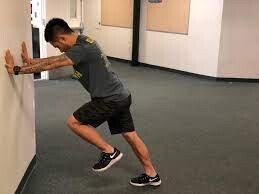
Wall drive drill
This drill helps you master your forward lean, perfect if you’re practicing for short distances or want to be able to really drive your race home. Jeffreys suggests starting this one with slow, controlled movements, and increasing speed as you build competence.

Stand facing a wall with feet shoulder-width apart, and place your hands on the wall at chest height.
Step back, extending one leg behind you.
Strive to keep your body in a straight line from head to heel while you drive your front knee forward, pushing off the back foot.
Alternate legs, focusing on bringing that front knee up with explosive power.
Sprint starts from the ground
Because you start on the ground for this one, as rise up from the facedown position you will naturally begin striding with your body low to the ground, pushing back and assuming a forward lean. This drill is perfect for practicing on grass; try an indoor track or turf in the colder months, or modify by taking a crouch position to start.
Lie right on the ground with hands planted.
Have a friend give a command to get you started, or count down from three on your own. Push yourself up to sprint as fast as possible to a set point straight ahead. Keep your sprint short in this one, from five to 30 meters.
Focus on powerful, explosive movements off the start, driving off your back leg to shoot forward.
Incline Sprint
Jeffreys says the added resistance of the incline here provides a safe and effective way to stress the strength and power demands of acceleration drills, while the upward slope will promote an increased awareness of knee drive and full extension. These are perfect to take indoors to the treadmill.
You’ll need a low incline or hill (five to 10 degrees). Keep these short–20 seconds at maximum.
Stand with a slight forward lean at the base of your hill, and sprint up the incline, emphasizing powerful strides.
Pump your arms vigorously to maximize momentum, and focus on that forward-leaning posture for optimal acceleration.
Repeat a few times, walking back to the start in between to recover.
Remember to focus on quality over quantity in these acceleration drills–maintaining strong, efficient form is essential, so keep your repeats short, fast and effective.
(11/27/2023) ⚡AMPby Keeley Milne
Kenya's Philimon Kiptoo Kipchumba set an event record in the men's race at the Shanghai Marathon
Kenyan runner Philimon Kiptoo Kipchumba emerged victorious from a three-man battle in the last kilometers at the Shanghai Marathon on Sunday, setting an event record time of two hours five minutes and 35 seconds.
His winning mark surpasses the previous record, set by his compatriot Paul Lonyangata in 2015, who completed the 42.195-kilometer race in 2:07:14.

"The weather was fine today. I could see many people giving me motivation. At the end, it was very competitive, so I tried to push at the 42nd kilometer, and that is how I managed to be position one," said Kipchumba.
Alphonce Felix Simbu of Tanzania finished just four seconds behind, claiming second place.

Ethiopia's Siranesh Yirga Dagne, completing the race in 2:21:28, clinched the women's title.
Having participated in the Shanghai Half Marathon previously, Dagne is quite familiar with the city. "During the race, the spectators on both sides of the track are very enthusiastic. I kissed the ground [after winning the competition.] The scenery of the city is also very beautiful," she said.
Wu Xiangdong was the first Chinese runner to finish the men's race, clocking in at 2:11:53. Zhang Deshun led the Chinese female runners with a time of 2:28:16.
In 2020, the Shanghai Marathon became the first marathon event on the Chinese mainland to be recognized as a Platinum Label Road Race by World Athletics.
According to the organizers, about 12 percent of the 38,000 participants in the 2023 event are from overseas. Among the Chinese runners, more than 10,000 come from outside Shanghai.
(11/27/2023) ⚡AMPShanghai International Marathon
Shanghai International Marathon has established itself as the marquee running event on China’s Marathon calendar. Every November, tens of thousand participants run passing the many historical places of this city such as Bund Bull, Customs House, Shanghai Museum, Shanghai Grand Theater, Shanghai Exhibition center, Jing’an Temple, Nan Pu Bridge, Lu Pu Bridge, Long Hua Temple, Shanghai Stadium. The course records...
more...Can You Harness Anger to Reach Performance Goals?
Focusing on a mix of emotions, including negative ones, could have an effect on your running, according to a recent study.
A series of studies show that anger, despite people viewing it as a negative emotion, can actually help you tackle challenging goals.
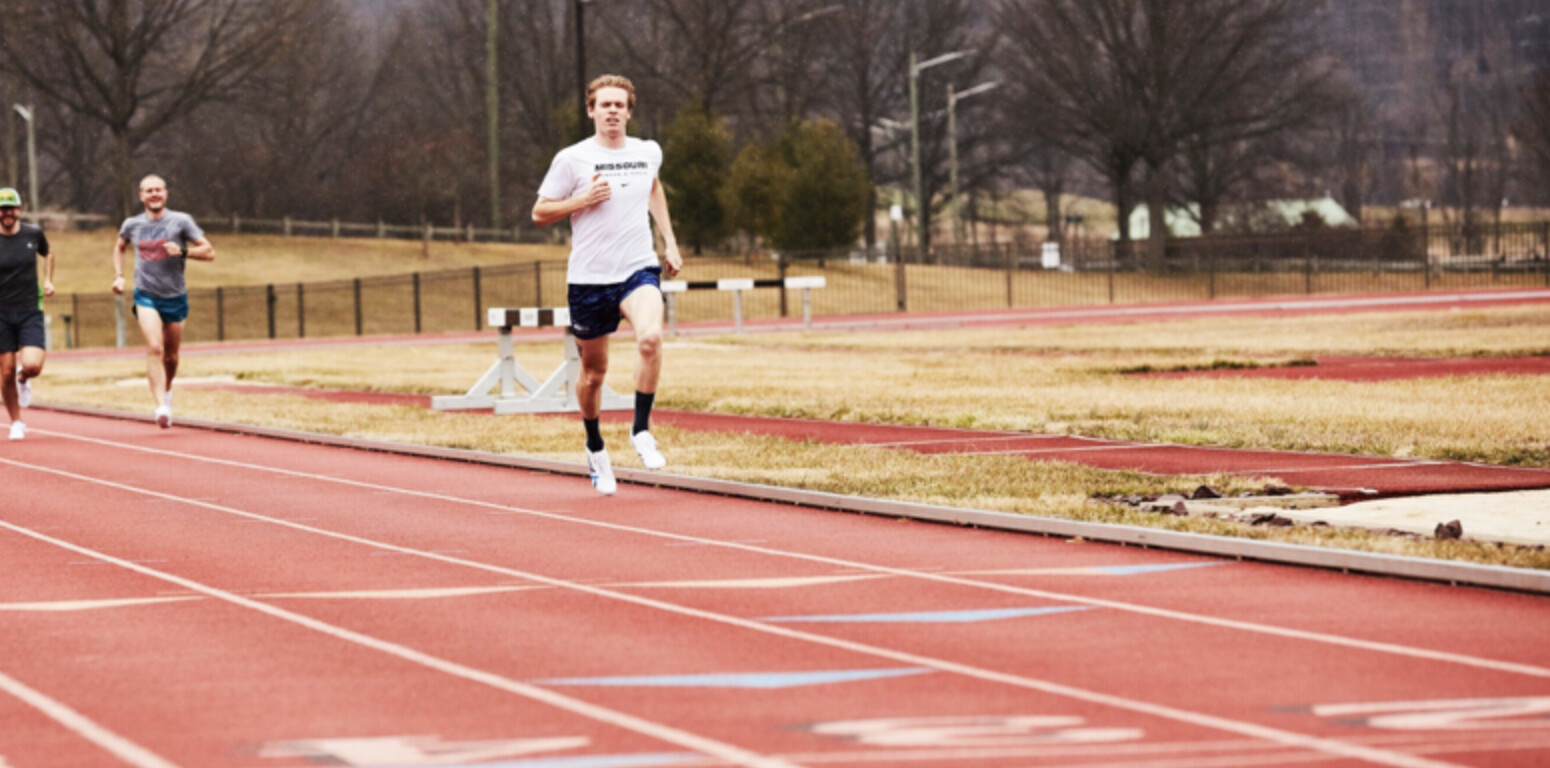
Experts suggest instead of trying to combat anger by thinking positive, using that feeling as fuel for your runs.
Tapping into emotional health and visualization isn’t a new concept in sports science. For example, one study published in 2020 suggests positive emotions, like hope, can give athletes a better sense of control and less anxiety during competition. But recent research suggests it isn’t just the uplifting feelings that can make a difference. Even emotions considered negative, like anger, may have a place in reaching performance goals.
The new investigation published in the Journal of Personality and Social Psychology notes that people often believe a state of happiness is ideal, but recent studies have shown that a mix of emotions that include negative states can result in the best outcomes.
To better understand how this blend might work for reaching goals, including athletic aims, researchers reviewed experiments on emotions that involved more than 1,000 participants and those that involved eliciting an emotional response or a neutral state. Emotions ranged from amusement and desire to anger and sadness.
After identifying their emotional state, participants would do a specific task, such as solving word puzzles or trying to achieve a high score on a skiing game. In all of the experiments, anger consistently improved performance compared to a neutral condition or more positive emotions, according to lead author Heather Lench, Ph.D., professor in the department of psychological and brain sciences at Texas A&M University.
That seemed to be true most often when the goals were especially challenging. For example, when two versions of the skiing game were used—one with a single, easier task like doing a jump and another that involved avoiding flags on a difficult slalom course—anger didn’t affect jump performance, she told Runner's World. But when it came to mastering the tougher course, anger seemed to spur participants into being more focused, and even having faster reaction times.
“The results here demonstrate that anger may increase effort toward attaining a desired goal, and that could result in greater success,” Lench said. “Another takeaway is that it may be helpful to change your perception about the use of negative emotions.”
She said that many people see negative emotions like anger as maladaptive—such as a feeling that allowing yourself to be angry during a run will cause you to be distracted or to slow down—but the opposite could be true. Harnessing that emotion and using it to spur your athletic pursuits could be a way to maintain motivation and to tackle particularly challenging goals, according to Lench.
One important distinction here is between anger and aggression, although those are sometimes perceived as synonyms. Anger is an emotion, while aggression is a behavior or action that can be destructive or violent, according to Gregg Henriques, Ph.D., clinical psychologist and author of A New Unified Theory of Psychology.
He told Runner’s World that it can be tricky to feel the emotion without having it fuel the behavior. A technique for that is to simply identify an emotion as it’s happening and visualize using that for a specific goal (like running a quick pace for your next workout!) rather than a catalyst for hostility, he suggested.
“Sometimes, anger is a response if you perceive obstacles to be overwhelming or insurmountable,” added Lench. “Using that anger instead of trying to cover it with positive emotions may be a better strategy for overcoming those obstacles and reaching your goals.”
(11/26/2023) ⚡AMPby Runner’s World
Selly Chepyego highlights Shanghai marathon
Selly Chepyego highlights the Kenyan contingent at Sunday's Shanghai marathon, a World Athletics Platinum Label road race.
The trio of Betty Chepkwony, Emily Arusio and debutant Sandrafelis Chebet are also in the mix as Kenya's quest for glory takes them to the Asian continent.

The quintet of sub-2:21 runners will be gunning for the course record of 2:20:36 set by Ethiopian Yebrgual Melese in 2018.
The 22-year-old Tadu Teshome of Ethiopia, owning a PB of 2:17:36, is the favourite in Shanghai.
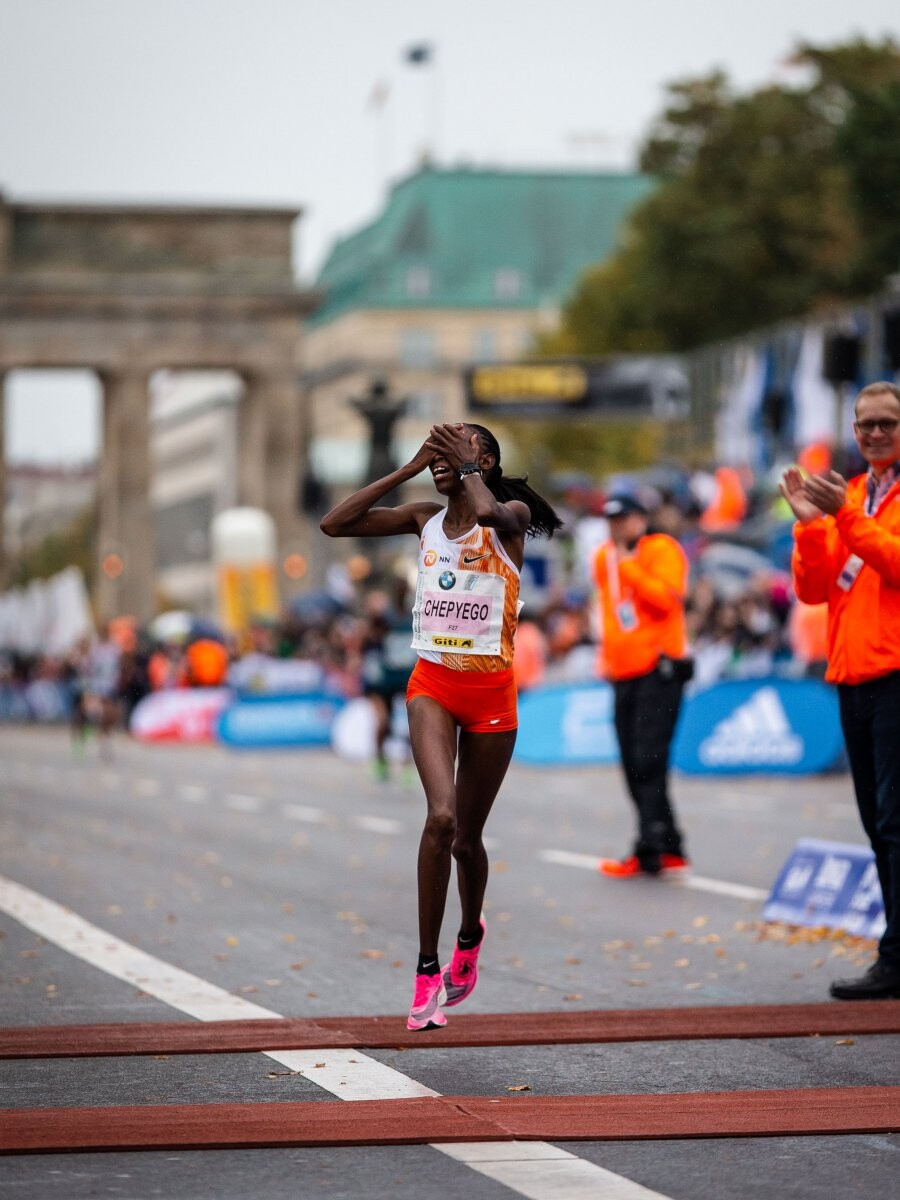
The 2022 Copenhagen Half Marathon champion, who is also a former winner of marathons in Barcelona and Riyadh, achieved her career-best mark last year in Valencia. She clocked 2:20:04 to finish fifth last month in Chicago.
Bahrain’s national record-holder Eunice Chumba and Chepyego could be the biggest threats to Teshome.
The 30-year-old Chumba, a 2:20:02 performer, has remained unbeaten after two races in 2023, clocking 2:20:31 to win in Rotterdam in April and winning the gold medal at the Asian Games in Hangzhou early last month.
Apart from her victory in Hangzhou, Chumba has gained vast experience of winning in China, claiming titles in Dongying and Liupanshui, and at the 2019 Military Games in Wuhan.
Now aged 38, Chepyego is still making progress. The 2014 World Half Marathon bronze medallist set a PB of 2:20:03 to finish second in Barcelona in March and clocked 2:27:09 to place seventh at the World Athletics Championships in Budapest.
Other title contenders include Ethiopian Etagegne Woldu, who set her PB of 2:20:03 last year in Valencia, and Eritrea’s Nazret Weldu, who finished eighth, one place behind Chepyego, in 2:27:23 in Budapest. Before that she improved the national record to 2:20:29 to finish fourth at the World Championships in Oregon in July 2022.
Defending champion Zhang Deshun of China is also toeing the line. Last year Zhang produced a 2:28:17 victory in Shanghai. In March, she improved her PB to 2:24:05 to finish fourth in Nagoya before finishing second behind Chumba at the Hangzhou Asian Games in 2:27:55.
(11/25/2023) ⚡AMPby Evans Ousuru
Shanghai International Marathon
Shanghai International Marathon has established itself as the marquee running event on China’s Marathon calendar. Every November, tens of thousand participants run passing the many historical places of this city such as Bund Bull, Customs House, Shanghai Museum, Shanghai Grand Theater, Shanghai Exhibition center, Jing’an Temple, Nan Pu Bridge, Lu Pu Bridge, Long Hua Temple, Shanghai Stadium. The course records...
more...A guide for reflecting on your year in running
As the year comes to an end, it’s natural for runners to start thinking about setting goals for next year. We’re big believers in goal setting–but not without first pausing to reflect. Before diving head first into setting goals for the coming year, you should take stock of and celebrate your achievements from the past year. Not only will it help you set realistic goals for the upcoming year, but reflecting on the progress you’ve made will give you a boost of motivation as you gear up for your next training block. Follow these four steps to take stock of your year in running to set yourself up for success in the new year.
Review your running data

This one is for all of the data junkies out there. Take some time to gather your running data from the past year. This includes your race times, distance logs, Strava (if you use it), personal bests and any other relevant metrics. Reviewing this data will give you a clear picture of your progress throughout the year and help you appreciate all the things you achieved this year.
Reflect on your achievements

Beyond the numbers, reflect on any personal achievements or triumphs from the past year. Did you conquer a new road distance, or a challenging trail race? Complete your first marathon or half-marathon? Reach a new level of mental or physical toughness? Rehab an injury? Travel to a new place and explore it via running? Or maybe you met someone who had a positive influence on your relationshp with running. Acknowledge these triumphs and be proud of every little accomplishment or positive thing you experienced, no matter how small. (And remember that running is about more than just race results.)
Learn from your setbacks
Every runner faces setbacks and challenges; it’s how we bounce back that defines our growth. Reflect on any hurdles you encountered during the year—whether it was dealing with injuries, race disappointments or missed training opportunities. Use these experiences to identify areas for improvement and develop strategies for overcoming similar hurdles in the future.
Set realistic and meaningful goals for the future
After embracing your year of running, you’ll be better equipped to set goals for the upcoming year. However, ensure your goals are realistic, attainable, and aligned with your passion for running. Aim for a healthy balance between challenging yourself and avoiding burnout. Consider the lessons learned and areas of improvement identified earlier to guide your future goals. Remember, it’s about the journey as much as the destination.
(11/25/2023) ⚡AMPby Brittany Hambleton
Elisha Rotich to lead Kenya's medal hunt at Shanghai marathon
Elisha Rotich will lead the Kenyan charge for medals at the Shanghai Marathon on Sunday where assaults on both the men's and women's course records are expected.
The Shanghai Marathon is a World Athletics Platinum Label road race.

A total of 12 runners in the men’s field have personal bests inside the 2:07:14 course record set by Kenya’s Paul Lonyangata back in 2015.
Rotich has a personal best of 2:04:21. He will have Nicholas Kirwa (2:05:01), Moses Kibet (2:05:20), Eric Kiptanui (2:05:47), Enock Onchari (2:05:47) and Kenneth Keter (2:06:05) for company.

Others are Solomon Kirwa Yego (2:06:24), Victor Kipchirchir (2:06:54) Philimon Kiptoo Kipchumba (2:07:28), Moses Kemei (2:09:26) and Sammy Kosgei (2:11:54)
Kinde Atanaw of Ethiopia is the fastest entrant courtesy of his 2:03:51 PB set four years ago in Valencia, where he staged a convincing victory in his debut over the classic distance.
The 30-year-old went on to register two sub-2:06 marks in 2021 and 2022 respectively, including a fourth-place finish at the London Marathon last year, but he failed to finish the race in London this year in what has been his only outing of 2023 so far.
Rotich, 33, won the Paris Marathon two years ago with a career-best of 2:04:21 and he also has five other marathon victories to his name, but he has yet to prove his shape so far in 2023.
Ethiopia’s Abayneh Degu, a 2:04:53 performer, will chase his first career marathon title in Shanghai. He clocked 2:08:28 in Osaka in February and finished fifth in China’s Lanzhou in 2:12:57 five months ago.
Fellow Ethiopian Tadu Abate is one of the most in-form runners in the men’s field. He has achieved sub-2:06 results in both of his two races of the year so far, including improving his PB to 2:05:38 to finish sixth in Tokyo.
Like Abate, Kenya’s Enock Onchari will also arrive in Shanghai with high spirits. The 24-year-old achieved his PB of 2:05:47 in Seville in February and celebrated his first-ever marathon victory in 2:07:52 one month later in Wuxi.
The field also includes three other sub-2:06 runners, all from Kenya: Nicholas Kirwa (2:05:01), Moses Kibet (2:05:20) and Eric Kiptanui (2:05:47).
The field of local athletes is headed by Jia Erenjia, the third-place finisher in Shanghai last year and winner of the 2020 race. He improved his PB to 2:09:54 in Berlin two months ago.
(11/25/2023) ⚡AMPby Evans Ousuru
Shanghai International Marathon
Shanghai International Marathon has established itself as the marquee running event on China’s Marathon calendar. Every November, tens of thousand participants run passing the many historical places of this city such as Bund Bull, Customs House, Shanghai Museum, Shanghai Grand Theater, Shanghai Exhibition center, Jing’an Temple, Nan Pu Bridge, Lu Pu Bridge, Long Hua Temple, Shanghai Stadium. The course records...
more...Runner stumbles upon bear with cubs and hen mama bear charged
A runner turned a blind corner on a narrow mountain trail in Southern California and came face to face with a mother bear and her two cubs, tense video shows.
The runner posted on Instagram a series of videos showing the encounter on Mt. Wilson in the San Gabriel Mountains. The trail is about 15 miles northeast of Los Angeles.

“While I was trail running alone, I was about 5 inches from hitting momma bear after turning a tight blind corner,” the runner, identified on Instagram as Laura Gold, says in the Nov. 8 video’s caption. “To prevent myself from hitting her, I stopped as fast as I could and almost slid down the mountain doing so. I had already seen the cubs, so I knew I wasn’t safe.”
The bear glancing back at Gold as the runner turns the corner and spots both cubs on the trail. In the next video, the momma bear turns and briefly charges toward Gold as the runner backs up the way they came on the trail.
Gold explains how they “used every trick in the book (except bear spray)” to try to scare the bears off, but the momma bear kept coming.
Gold even let out a guttural roar at one point before following up with a whistle, several outlets reported.
Eventually, another hiker came up from behind and helped Gold scare the bears off down a different trail.
“I think she’s trying to get down the mountain. Not sure if there’s another way,” someone said, adding they were shocked the bear didn’t attack the runner for stalking them.
Others said the runner was wise to keep their calm, especially as the bear bluff charged.
One person said they encounter bears every time they go to Mt. Wilson, and there’s so much foot traffic in the area “bears aren’t bothered” by people’s presence anymore.
“The reason they are walking towards them is because that’s how (you) get them to go away,” they said.
Still, others questioned what they called a bold and risky strategy that could have endangered the bears had the momma bear attacked after all.
“You put these bears in danger,” someone said. “Stay off the trails if you don’t know how to respect wildlife.”
What to do if you see a bear
Bear attacks in the U.S. are rare, according to the National Park Service. In most attacks, bears are trying to defend their food, cubs or space.
There are steps people can take to help prevent a bear encounter from becoming a bear attack.
Identify yourself: Talk calmly and slowly wave your arms. This can help the bear realize you’re a human and nonthreatening.
Stay calm: Bears usually don’t want to attack; they want to be left alone. Talk slowly and with a low voice to the bear.
Don’t scream: Screaming could trigger an attack.
Pick up small children: Don’t let kids run away from the bear. It could think they’re small prey.
Hike in groups: A group is noisier and smellier, the National Park Service said. Bears like to keep their distance from groups of people.
Make yourself look big: Move to higher ground and stand tall. Don’t make any sudden movements.
Don’t drop your bag: A bag on your back can keep a bear from accessing food, and it can provide protection.
Walk away slowly: Move sideways so you appear less threatening to the bear. This also lets you keep an eye out.
Again, don’t run: Bears will chase you, just like a dog would.
Don’t climb trees: Grizzlies and black bears can also climb.
(11/25/2023) ⚡AMPMary Moraa dreaming of breaking 800m world record soon
Mary Moraa has promised that she will attack the 800m world record very soon.
Reigning World 800m champion Mary Moraa has promised to go for the 800m world record very soon.

In a post on her Facebook page, Moraa shared a throwback photo of herself and double world record holder Faith Kipyegon. She was in awe of Kipyegon’s record-breaking spree and noted that she is an inspiration to many people.
She said: “When you step out in style with the world's middle distance track finest Faith Kipyegon. A great inspiration. Hii 800m World Record tutavunja siku moja...hivi karibuni (We shall one day break this 800m world record…very soon).”

The women’s world record over the 800m stands at 1:53.28 and was set by Jarmila Kratochvílová 40 years ago.
She clocked the time on July 26, 1983, at the Olympiapark Meeting in Munich’s Olympic Stadium and has remained to be the oldest outdoor world record in the book.
On her part, Moraa’s Personal Best time currently stands at 1:56.03, a time she clocked to win the race at the World Championships in Budapest, Hungary.
By winning the title, she became just but the third Kenyan woman to win the 800m on the global stage. She comes after Janeth Jepkosgei and Eunice Sum who won the titles in 2007 and 2013 respectively.
She has also been banked on severally to break the 800m world record and affirming her fans that she would surely go for it is a sign of light at the end of the tunnel.
The reigning Commonwealth Games champion is gearing up for the Olympic Games in Paris, France next year where she hopes to extend her winning streak. This season, she only lost one 800m race, the Prefontaine Classic.
(11/24/2023) ⚡AMPby Abigael Wuafula
Double amputee Oscar Pistorius granted parole in girlfriend’s murder
Ten years after shooting and killing Reeva Steenkamp through a bathroom door in their home, double amputee runner and six-time Paralympic gold medalist Oscar Pistorius, 37, of South Africa is to be paroled and will be released from prison on Jan. 5, 2024.
On Valentine’s Day in 2013, Pistorius, known as the “Blade Runner,” fired numerous shots through a bathroom door in his home, killing Steenkamp, who was inside. The South African athletics star consistently denied intending to kill her, saying he shot her by mistake, believing she was an intruder.

Pistorius was initially convicted of the lesser charge of culpable homicide and sentenced to five years in prison, but after an appeal by prosecutors, he was found guilty of murder in 2016 and the sentence increased by a further six years. In 2017, according to a report in the Globe and Mail, his sentence was more than doubled, after South Africa’s Supreme Court of Appeal decided it was too lenient. In 2021, it was announced he would soon be eligible for parole, having served half his sentence.
Pistorius competed in the 2004 Summer Paralympics in Athens, finishing third overall in the T44 100m and winning gold in the 200m; he went on to compete again in 2008, winning gold in the 100m, 200m and 400m. He wanted to compete against able-bodied runners, but the IAAF (now World Athletics) ruled that runners using prosethetic blades had an unfair advantage and could not race against able-bodied athletes. Pistorius fought this ruling and won, and the rule was revoked, clearing the way for him to try to qualify for the 2008 Olympics in Beijing. (Further studies have also concluded that prosthetic blades do not confer an advantage over able-bodied runners.)
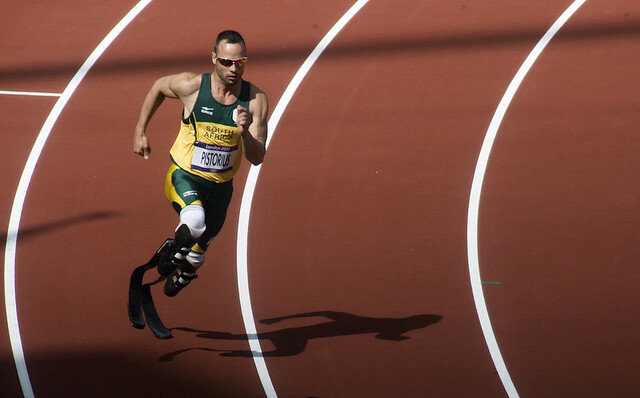
For various reasons, Pistorius did not compete in the Olympics until 2012 in London, where he became the first amputee runner to compete in an Olympic Games. He reached the semi-finals of the 400m, where he finished eighth, and competed in the 4x400m relay, where the South African squad finished eighth out of nine. Pistorius carried the South African flag in the closing ceremonies.
(11/24/2023) ⚡AMPby Anne Francis
Course records under threat at Shanghai Marathon
Assaults on both the men's and women's course records are expected at the Shanghai Marathon, a World Athletics Platinum Label road race, on Sunday (26).
A total of 12 runners in the men’s field have personal bests inside the 2:07:14 course record set by Kenya’s Paul Lonyangata back in 2015.
Kinde Atanaw of Ethiopia is the fastest entrant courtesy of his 2:03:51 PB set four years ago in Valencia, where he staged a convincing victory in his debut over the classic distance.
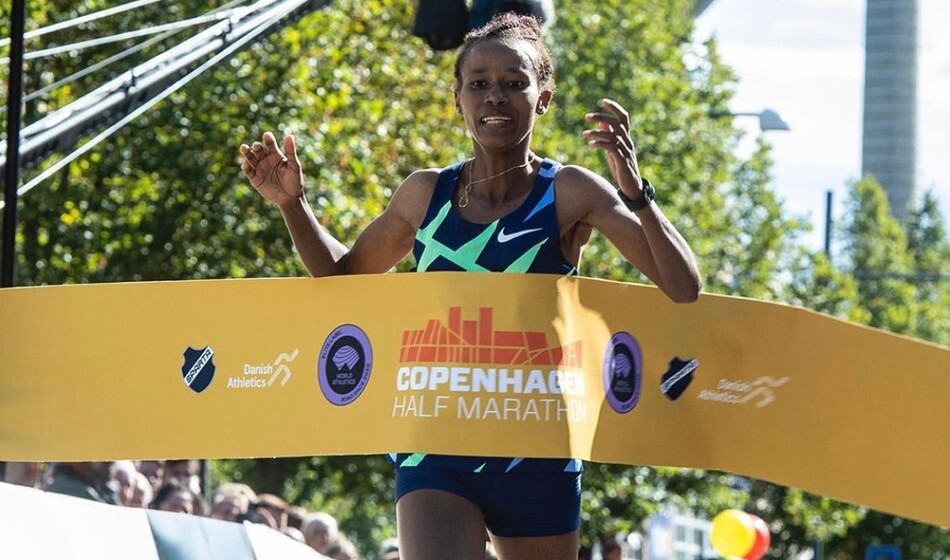
The 30-year-old went on to register two sub-2:06 marks in 2021 and 2022 respectively, including a fourth-place finish at the London Marathon last year, but he failed to finish the race in London this year in what has been his only outing of 2023 so far.
Elisha Rotich will lead the Kenyan charge. The 33-year-old won the Paris Marathon two years ago with a career best of 2:04:21 and he also has five other marathon victories to his name, but he has yet to prove his shape so far in 2023.

Ethiopia’s Abayneh Degu, a 2:04:53 performer, will chase his first career marathon title in Shanghai. He clocked 2:08:28 in Osaka in February and finished fifth in China’s Lanzhou in 2:12:57 five months ago.
Fellow Ethiopian Tadu Abate is one of the most in-form runners in the men’s field. He has achieved sub-2:06 results in both of his two races of the year so far, including improving his PB to 2:05:38 to finish sixth in Tokyo.
Like Abate, Kenya’s Enock Onchari will also arrive in Shanghai with high spirits. The 24-year-old achieved his PB of 2:05:47 in Seville in February and celebrated his first-ever marathon victory in 2:07:52 one month later in Wuxi.
The field also includes three other sub-2:06 runners, all from Kenya: Nicholas Kirwa (2:05:01), Moses Kibet (2:05:20) and Eric Kiptanui (2:05:47). The field of local athletes is headed by Jia Erenjia, third-place finisher in Shanghai last year and winner of the 2020 race. He improved his PB to 2:09:54 in Berlin two months ago.
Teshome heads women’s field
In the women’s race, a quintet of sub-2:21 runners will be gunning for the course record of 2:20:36 set by Ethiopian Yebrgual Melese in 2018.
The 22-year-old Tadu Teshome of Ethiopia, owning a PB of 2:17:36, is the favourite in Shanghai. The 2022 Copenhagen Half Marathon champion, who is also a former winner of marathons in Barcelona and Riyadh, achieved her career best mark last year in Valencia. She clocked 2:20:04 to finish fifth last month in Chicago.
Bahrain’s national record-holder Eunice Chumba and Selly Chepyego of Kenya could be the biggest threats to Teshome. The 30-year-old Chumba, a 2:20:02 performer, has remained unbeaten after two races in 2023, clocking 2:20:31 to win in Rotterdam in April and winning the gold medal at the Asian Games in Hangzhou early last month.
Apart from her victory in Hangzhou, Chumba has gained vast experience of winning in China, claiming titles in Dongying and Liupanshui, and at the 2019 Military Games in Wuhan.
Now aged 38, Chepyego is still making progress. The 2014 world half marathon bronze medallist set a PB of 2:20:03 to finish second in Barcelona in March and clocked 2:27:09 to place seventh at the World Athletics Championships in Budapest.
Other title contenders include Ethiopian Etagegne Woldu, who set her PB of 2:20:03 last year in Valencia, and Eritrea’s Nazret Weldu, who finished eighth, one place behind Chepyego, in 2:27:23 in Budapest. Before that she improved the national record to 2:20:29 to finish fourth at the World Championships in Oregon in July 2022.
Defending champion Zhang Deshun of China is also toeing the line. Last year Zhang produced a 2:28:17 victory in Shanghai. In March, she improved her PB to 2:24:05 to finish fourth in Nagoya before finishing second behind Chumba at the Hangzhou Asian Games in 2:27:55.
(11/24/2023) ⚡AMPby World Athletics
Shanghai International Marathon
Shanghai International Marathon has established itself as the marquee running event on China’s Marathon calendar. Every November, tens of thousand participants run passing the many historical places of this city such as Bund Bull, Customs House, Shanghai Museum, Shanghai Grand Theater, Shanghai Exhibition center, Jing’an Temple, Nan Pu Bridge, Lu Pu Bridge, Long Hua Temple, Shanghai Stadium. The course records...
more...AIU slap 23-year-old Esther Borura with three-year ban for doping
Esther Borura was banned due to the Presence of a Prohibited Substance (19-norandrosterone) and the Use of a Prohibited Substance (Nandrolone or Nandrolone. precursors).
The Athletics Integrity Unit has slapped Esther Birundu Borura with a three-year ban for an anti-doping rule violation.
Borura’s ban backdates to September 6, 2023, and will run to 2026. She was banned due to the Presence of a Prohibited Substance (19-norandrosterone) and the Use of a Prohibited Substance (Nandrolone or Nandrolone precursors).
The AIU also noted that the 23-year-old’s results since June 30, 2023, have been disqualified. On June 30, 2023, Borura provided a urine sample, Out-of-Competition in Iten, Kenya, which was given code 7184933.
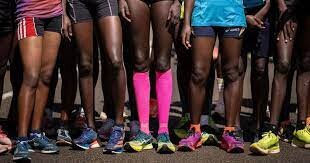
On August 22, the World Anti-Doping Agency (“WADA”) accredited laboratory in Doha, Qatar reported an Adverse Analytical Finding in the Sample.
“The AIU reviewed the Adverse Analytical and determined that Borura did not have a Therapeutic Use Exemption (“TUE”) that had been granted (or that would be granted) for the 19-Norandrosterone consistent with exogenous origin found in the Sample.
There was no apparent departure from the International Standard for Testing and Investigations (“ISTI”) or from the International Standard for Laboratories (“ISL”) that could reasonably have caused the Adverse Analytical Finding,” the AIU statement read in part.
On September 7, Borura requested for an interview with the AIU through her Athletes’ Representative.
As reported by the AIU, on September 13, they (AIU) asked the Athlete to provide a written summary of her explanation and the information that she wished to provide in the interview.
“On 15 September 2023, the Athletes’ Representative provided the AIU with the Athlete’s summary explanation, which set out that the Athlete waived her rights to have the B Sample analysed and to request the LDP, admitted to having committed Anti-Doping Rule Violations, had purchased prohibited substances in April 2023, and been injected in May 2023.
Averred that this was the only time that she had used prohibited substances. On 26 September 2023, the Athlete attended an interview with AIU representatives and provided additional information in relation to her explanation (as summarised above),” the statement further noted.
(11/24/2023) ⚡AMPby Abigael Wuafula
Sub-elite Egyptian marathoner busted for doping after winning race
A sub-elite Egyptian marathon runner, Ahmed Saber Mohamed Bakry, has been suspended for 18 months by the Athletics Integrity Unit (AIU) following a positive in-competition test for the anti-inflammatory drug dexamethasone.
Bakry tested positive after winning the 2021 Gulf Bank 642 Marathon in Kuwait, which he finished in 2:54:47, about half an hour slower than his personal best of 2:26, set at the Kuwait City Marathon in 2017. He was only tested because he won the race and was eligible for prize money.
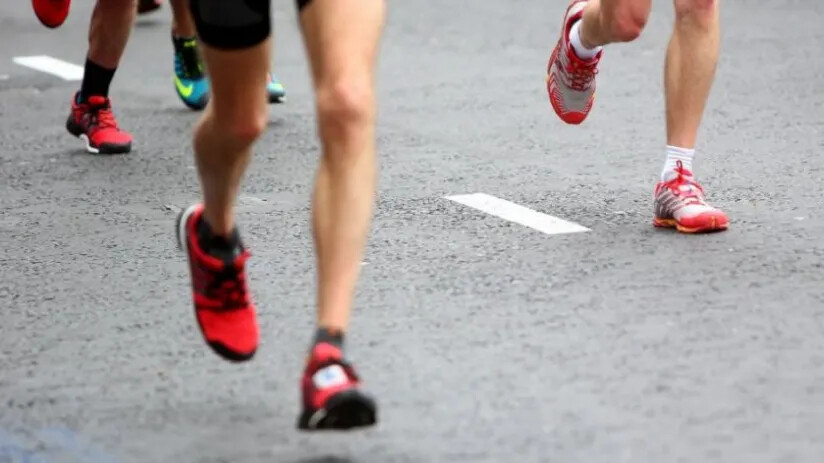
What is dexamethasone?
Dexamethasone falls under the drug category of glucocorticoids and is banned in competition only, according to WADA. That means if Bakry tested positive for it out of, or before, a competition, he would not be banned. Dexamethasone is commonly used by long-distance athletes like cyclists and marathon runners when they are competing at high altitudes; it can be used to treat/prevent altitude sickness and can give the athlete a competitive edge.

The marathon course in Kuwait City is low-lying, with the highest point only being 306 metres (1,004 ft) above sea level.
Bakry’s argument
According to the AIU, Bakry indicated that he had been prescribed the drug to treat an injury and had received weekly injections for a period of six weeks, including an injection on the evening of Nov. 19, 2021, less than 12 hours before the marathon. The AIU reviewed his positive test and new information, recommending that he should apply for an (r-TUE) retroactive Therapeutic Use Exemption. Bakry applied, but was eventually denied after failing to provide the AIU with an explanation as to why he was taking the drug the night before competing.
Bakry argued that the anti-doping rule violation was not intentional, but the AIU said his actions were a violation of Anti-Doping Rule 2.1: “The presence of a prohibited substance in the athlete’s sample constitutes an ADRV, and it is not necessary for the AIU to demonstrate intent, fault, negligence, or knowing use by the athlete.”
The 38-year-old’s race results from Nov. 20, 2021, to May 19, 2023, have been disqualified, and he is required to return his prize money from his win in Kuwait City.
Three more athletes penalized by AIU
Bakry was one of four athletes issued a period of ineligibility by the AIU on Wednesday. World Championship and Olympic steeplechase finalist Ethiopia’s Zerfe Wondemagegn was provisionally suspended (for testosterone), Athlete Refugee Team steeplechaser Fouad Idbafdil was provisionally suspended (for EPO), and Ugandan 1,500m runner Janat Chemusto issued a four-year ban (for nandrolone).
(11/23/2023) ⚡AMPby Marley Dickinson
Morgan Beadlescomb, Weini Kelati win the Manchester Road Race
The Manchester Road Race men’s race has a new champion. Morgan Beadlescomb dethroned defending champion Connor Mantz at the line.
Mantz, who won the 2022 Manchester Road Race, came in second place.

"The course was awesome. It's like a cross-country course on the road," Beadlescomb said after the race. "We've got the hills, it's a challenge. The wind was a little bit high today, but it was a great race."
Beadlescomb time on Thursday came in at 21:12, about 6 seconds from the record.

Before the race, Beadlescomb said he wanted to win after coming in second place behind Mantz by fewer than 1 second.
"I am already excited for next Thanksgiving. I love coming here," he said. "I came here last year. I had a great time. The energy is amazing."
In the women’s race, two-time defending champion Weini Kelati won her third consecutive Manchester Road Race, smoking the competition around her.
"This is amazing," Kelati said after the race. "To come back here is amazing."
Much like in her last two races, Kelati went out fast, pacing herself with the elite men’s competition and no other woman could match her pace. She said that as an aggressive racer, she enjoys that the men and women race at the same time because she can use it to her advantage.
"I took the opportunity to follow the guys and it worked," Kelati said.
Kelati won with a time of 23:21, beating her time from 2022. She still holds the record for the fastest course time of 22:55, which she set in 2021.
Annie Rodenfels, of Newton, Massachusetts, came in second place with a time of 23:59. Emily Durgin, from Flagstaff, Arizona, came in third with a time of 24:06.
The race within the race – the King and Queen of the Hill competition – was won by Mantz and Kelati, who won an extra $1,000 each.
(11/23/2023) ⚡AMPby Lucia Suarez
Manchester Road Race
The Manchester Road race is one of New England’s oldest and most popular road races. The 86th Manchester Road Race will be held on Thanksgiving Day. It starts and finishes on Main Street, in front of St. James Church. The Connecticut Sports Writers’ Alliance recently honored the Manchester Road Race. The CSWA, which is comprised of sports journalists and broadcasters...
more...Namibian sprinter Christine Mboma cleared for return after temporary suspension
Namibian sprinter Christine Mboma is cleared by World Athletics to return to the 100m and 200m events after a temporary suspension.
Namibian sprinter Christine Mboma is set to make a triumphant return to the track after receiving clearance from World Athletics (WA).
The Olympic Games silver medalist's temporary suspension, imposed by the WA Council in March 2023, has now been lifted, allowing her to compete once again in the 100m and 200m events.

This news, confirmed by her coach Henk Botha, marks a significant milestone in Mboma's career, as she navigates the complex world of regulations concerning testosterone levels in female athletes, particularly those with Differences in Sex Development (DSD).
"She is cleared for the 100 and 200 meters initially, with the potential for further expansion to the 400 meters within the next two years. Eventually, all events will be accessible to her," said Mbotha.
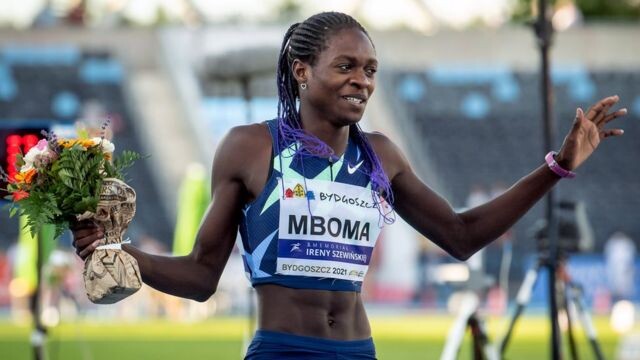
World Athletics started implementing stringent regulations governing testosterone levels for athletes in various categories nine months ago.
These regulations include a two-year reduction in testosterone levels for those competing in the 400, 800, and 1500-meter events, and a six-month requirement for others.
Navigating these new regulations has been a challenging journey, described by Botha as uncharted territory for both Mboma and World Athletics.
"It's been a rollercoaster ride, but we've managed to navigate it successfully. Christine has shown remarkable dedication and positivity during her training, gearing up to rejoin the global stage," the coach added.
Mboma's impending return to competitive racing represents a significant milestone in her career.
The Namibian had catapulted herself into the global athletics consciousness when breaking the 400m world under-20 record in 2021, before doing the same in the 200m a few months later to win an eye-catching Olympic silver in Tokyo.
World Athletics rules state that all athletes with DSD, who have 46 XY chromosomes with internal testes rather than ovaries, cannot compete in female sports unless they reduce their high testosterone levels for a minimum of six months and in some cases 24 months.
(11/23/2023) ⚡AMPby Festus Chuma
Turbocharge your legs with these short sprint sessions
Logging repetitive runs can get tedious. If you’re following the same route at the same pace day after day, getting out the door can be a challenge. Switch things up with an occasional sprint workout, and your running performance will benefit, no matter what distance you’re training for. You’ll improve stride efficiency, increase leg turnover and develop explosive power, all while becoming a more resilient and adaptable athlete.
Try one of these short, simple workouts to get started: if you’re newer to running, reduce the number of intervals or take longer recovery breaks.
200-meter challenge

While this workout is easiest done on a track, measuring out a rough distance on a road or trail works too. Work on finding a pace that you can withstand for the entire length of the interval–it may take a few repeats before you get the hang of it.
Warm up with 10 minutes of easy running.

Run 10 x 200 meters with 60 seconds of rest (walking, if you can still move) in between sprints.
Cool down with 10 minutes of easy running.
Progressive 400-meter repeats
This workout is a more challenging version of the last one, with a catch–aim to pick up the pace on each repeat. Begin running at a pace that is challenging but manageable (think 10K pace), and make each interval slightly faster than the last.
Warm up with 10 minutes of easy running.
Run six x 400 meters, with 90 seconds of rest between intervals.
Cool down with 10 minutes of easy running.
The anytime, anywhere workout
Throw this into your training when you need to get moving but you’re short on time. The point of this session is to elevate your heart rate, and then to let it come down–it’s that simple, so you can make it a full-blast effort or a gently rolling one.
Warm up with five minutes of easy running.
Run 12 x one-minute repeats, with one minute of easy running to recover.
Cool down with five minutes of easy running.
Explosive hill sprints
Hills are a great way to build strength and power–and you don’t need to worry about your pace. Throw out the data for this one and go by effort, aiming for a seven out of 10 on the RPE scale. Take note of where your first sprint ends, and try to go a little bit farther with each repeat.
Warm up with 10 minutes of easy running.
Run eight x 45-second uphill sprints, walking or jogging slowly down to recover.
Cool down with 10 minutes of easy running.
Make sure to follow one of these workouts with a rest day or a day of very easy running.
(11/23/2023) ⚡AMPby Keeley Milne
Philadelphia Marathon finisher’s Olympic dreams shattered after water bottle rule violation
A formal complaint from a race official brought attention to the water bottle infraction, disqualifying Ethan Hermann from the results.
In running, seconds can make or break dreams. The 2023 Philadelphia Marathon brought a mix of triumph and heartbreak, especially for one of the top American men’s finishers, Ethan Hermann.

The Philadelphia native finished the marathon in sixth overall, running an impressive 2:17:03 in his debut marathon, nearly a minute under the 2024 U.S. Olympic Marathon Trials qualifying mark of 2:18:00. However, hours after Hermann crossed the finish line, his dreams were shattered when his result was disqualified due to his coach handing him a water bottle at a water station.
According to Citius Mag, which first reported the story, Hermann’s coach, in a well-intentioned act of support, handed him a water bottle at a water station. However, according to USATF rules, because Hermann did not personally grab the bottle, it constituted a violation due to the “inequality of resources offered to athletes.”
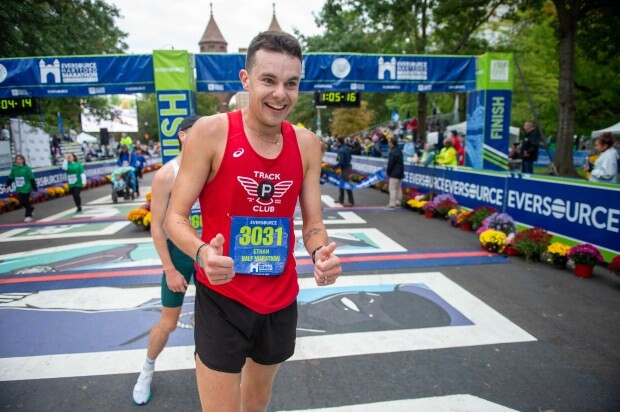
Hermann’s time has been removed from the official Philadelphia Marathon results, and it will not count for the 2024 Olympic Trials qualification.
Speaking to Citius Mag about the situation, Hermann said he does not fully agree with the rule, but understands it. “I just have to learn from it and move forward, and take on the next challenge in time,” he said. Despite the disqualification, Hermann remains positive about his result, stating, “I’m at peace and walking away knowing that my mission of qualifying for the Olympic Trials was accomplished–even if the start list will say otherwise.”
A formal complaint from a race official brought attention to Hermann’s infraction, leaving race organizers in a challenging position, due to the specificity of the USATF Competition Rule 144. “No competitor taking part in competition shall be allowed, without the permission of the Referee or Judges, to receive assistance or refreshment from anyone during the progress of the competition.”
“I had a special day and ran my heart and legs out, but I was not as educated as I thought about everything. Not all the right things happened the way they needed to, and I was ultimately given a disqualification from the race,” wrote Hermann.
The bottle rule only applies to USATF races and U.S. athletes. At the 2022 Berlin Marathon, the notorious Bottle Claus helped Eliud Kipchoge lower the marathon world record to 2:01:09 at the time, personally handing him bottles at every water station.
In a world where one false start results in automatic disqualification and triathletes face penalties for rule violations, the severity of Hermann’s case has been questioned on social media. What is the time value of a water bottle handed to a runner throughout a marathon? And how much time does it save a marathoner compared to picking it up from the elite table?
A hashtag #FreeEthan has been pushed by Citius Mag and the U.S. running community to permit Hermann to run at the 2024 U.S. Olympic Marathon Trials scheduled for Feb. 4 in Orlando, Fla.
(11/22/2023) ⚡AMPby Marley Dickinson
Philadelphia Marathon and Half
Have the time of your life in 2022 completing 13.11 miles! Runners will start along the Benjamin Franklin Parkway in the cultural Museum District and wind through Philadelphia’s most scenic and historic neighborhoods. From the history-steeped streets of Old City, through one of the liveliest stretches of Center City, across the Schuylkill River...
more...Mountain Runner Stephanie Perriard: 9-Year Suspension
Swiss mountain runner Stephanie Perriard, already suspended for three years for using of prohibited substances, has been given an additional six-year ban for falsification by Swiss Sport Integrity.
During an initial procedure, the mountain runner admitted to possessing and using prohibited substances to enhance her athletic performance, including trafficking in Sustanon (a banned steroid commonly used to increase muscle mass).
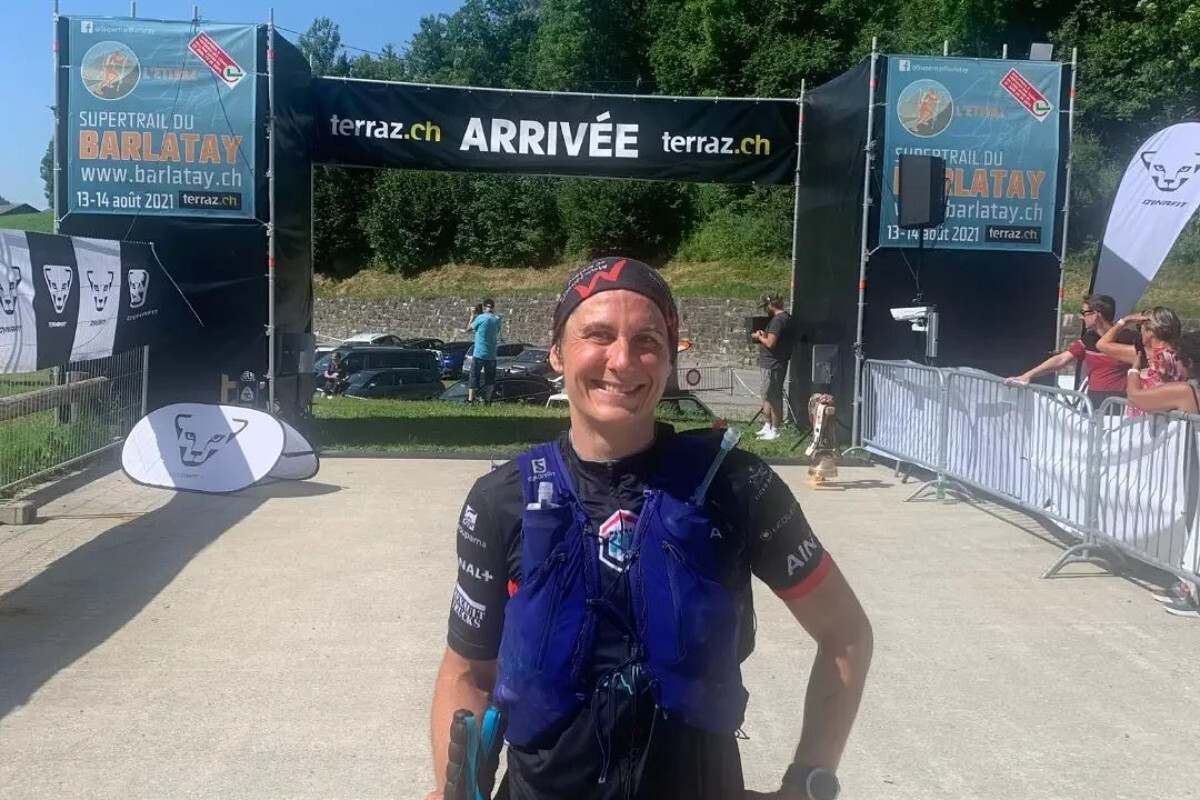
While in the process, the athlete had agreed to a proposal by Swiss Sport Integrity, under Article 10.8.1 of the Anti-Doping Statute, which involved a three-year suspension (instead of four years) and a fine of 120 francs as an additional sanction. However, it did not conclude there.
Following decisive information provided to Swiss Sport Integrity by third parties, the suspicion of a possible breach of the suspension was confirmed. The accused attempted to unduly influence the investigation in her favor, misled authorities and made false statements, thus violating Article 2.5 of the Anti-Doping Statute by participating in "falsification of any element of doping control by an athlete or any other person."

Faced with this new development, Swiss runner Stephanie Perriard has once again decided to accept an agreement proposed by Swiss Sport Integrity under Article 10.8.1 of the Anti-Doping Statute. The new penalty is a six-year ban (instead of seven years) and a fine of 1,500 Swiss francs, in addition to the 3-year ban already imposed.
It's important to note that the penalties or sanctions enforced by Swiss Sport Integrity apply to all sports activities broadly, not only as an athlete but also as a coach, for instance, across all types of sports, and in all countries subject to the regulations of the Anti-Doping Statute or the World Anti-Doping Code.
(11/22/2023) ⚡AMP
by Raúl Daffunchio Picazo
Two ways to get better at embracing the suck, here's how to master the art of suffering
Improving your running performance involves a bit of suffering. While you shouldn’t actually be in physical pain when you’re training, being uncomfortable as you challenge new paces or work harder is part of the process–something endurance athletes often call “embracing the suck.” The good news: you can learn to get better at it.
Simon Marshall and Lesley Paterson, endurance coaches and authors of The Brave Athlete, call this type of suffering “exertional discomfort: the personal sufferfest that comes from increasing exercise intensity.” Paterson and Marshall clarify that when they refer to suffering they mean the feelings caused by the intensity of the running, and not pain caused by actual tissue damage.

Paterson and Mitchell suggest a two-pronged attack to become better at suffering. Here’s how to improve your ability to embrace the suck.
Get more experience

“Think about the suffering you’re not very good at and then force yourself to experience it more often in training,” Paterson and Mitchell say. New research suggests we can train our brains to reduce our perception of discomfort. While every running session shouldn’t send you to the pain cave, consider putting yourself in the path of physical and mental discomfort weekly.
Not sure how, exactly, to practice suffering? The possibilities are endless. Simply “enduring the burn” of anaerobic activity counts; so does dealing with the fatigue of a hard training block or a really tough race. Riding out the frustration or disappointment you feel when you don’t smash your goals is a form of suffering, and so is heading out the door on days when you feel unmotivated.
Learn coping strategies
You don’t need to plunge right into pain–there are strategies that will make your suffer-practice easier, or at least manageable.
Feedforward
Marshall and Paterson suggest trying “feedforward” as a method of building your acceptance of pain. “Feedforward is akin to mental time travel to think about the pain before it occurs,” they say. A form of advance planning, feedforward involves immersing yourself in the experience as if you were already there. “Cognitive neuroscientists have revealed that feedforward is a very effective tool for learning to cope with adversity because it helps us plan for all possible outcomes, rather than just hope everything turns out well.”
Segmentation
Our brains prefer things to be in manageable chunks. Marshall and Paterson suggest breaking down the pain you’re approaching into pieces–don’t think about the entire tough 60-minute workout; instead, focus on the ten-minute chunk that you’re in. “The neurological beauty of segmentation is that once the segment is completed, you get a mini-squirt of dopamine that resets the coping clock,” they explain. Run the mile you’re in.
Thumb-tapping
Sure, it sounds odd, but it’s worth a try–”in pain management land, thumb tapping is simply a behavioral strategy to control attention and occupy working memory,” Marshall and Paterson say. Make two relaxed fists, similar to holding a pen in each hand, and gently tap the side of your index finger as though you were pressing the clicker on a pen. You can tap both thumbs in time with your leg turnover, or use it to set your cadence; “the rhythmic repetition also provides a metronomic cue for the legs or arms to keep moving,” Marshall and Paterson say. Thumb tapping is ideal when you’re moving through “short bursts of hell–a hill repeat, the last mile of a race, or moments when it’s really hurting.”
Remember that consistently injecting periods of suffering into your training will help you get better at moving through it. You’ll soon be a pro at navigating the home stretch of a tough race, or blasting through the final nasty interval in a hard training session.
(11/22/2023) ⚡AMPby Keeley Milne
Catherine Reline eyeing Olympic glory next season
21-year-old Catherine Reline will be eyeing a debut at the Olympic Games after a fruitful 2023 season.
21-year-old Catherine Reline will be hoping to extend her good fortunes to the 2024 season as she eyes the Olympic Games in Paris, France.
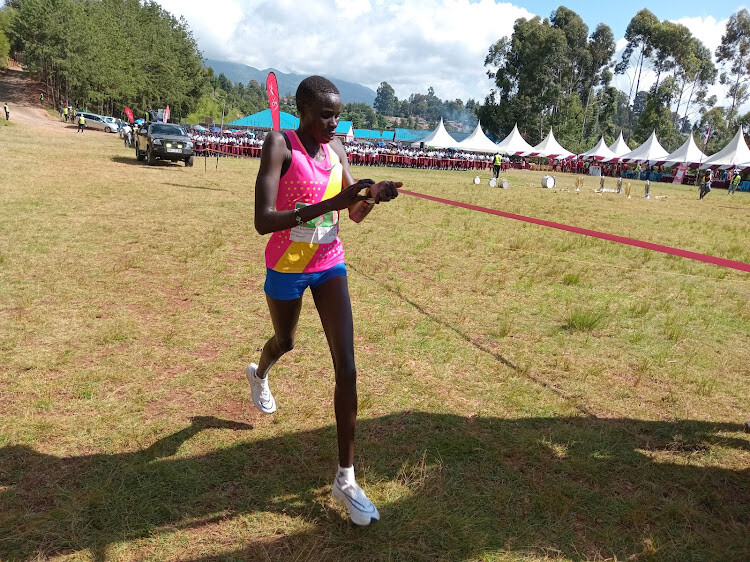
Reline has enjoyed a great 2023 season, securing a podium place in most of her races. The highlight of her career this season was finishing third in the Half Marathon at the World Road Running Championships.
She also won the Chemasusu Dam Half Marathon and also finished second at the Trunsylvania International 10K where Agnes Ngetich broke the world record.
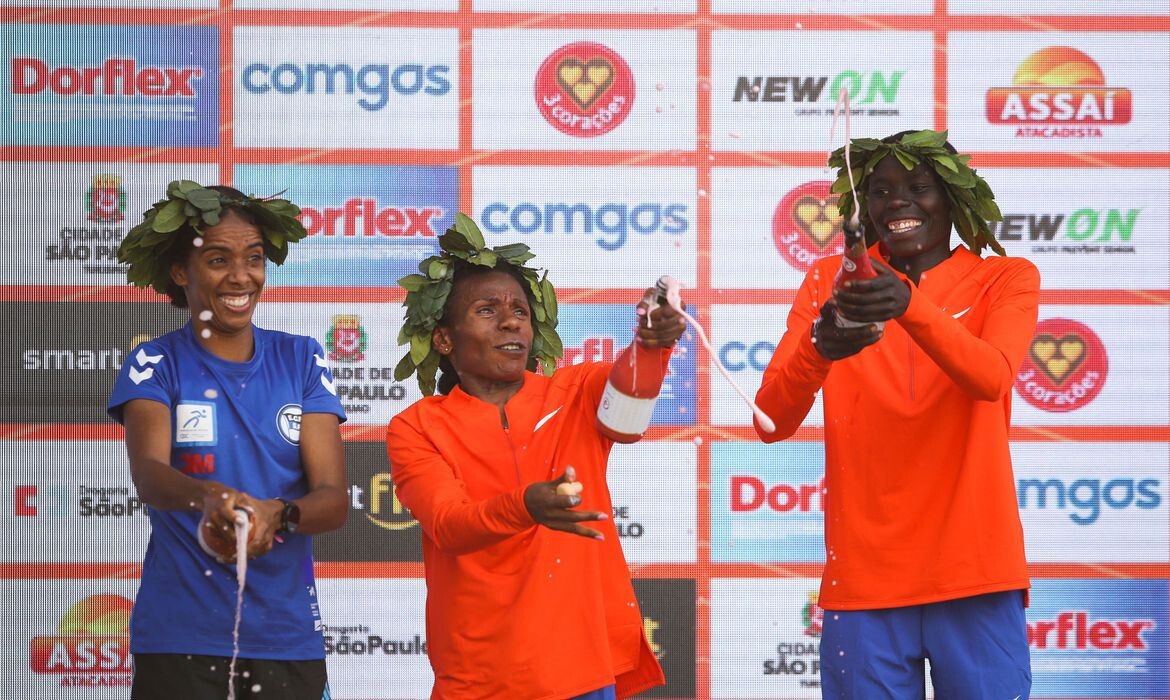
However, Ngetich’s world record was not ratified since the course did not meet the standards of World Athletics.
“I have another race in Brazil then after that, I will come back home to prepare for the Olympic Games where I intend to make Team Kenya for the 10,000m,” she said.
Speaking about her preparations ahead of the Chemasusu Dam Half Marathon, Reline said she did not prepare well for the race since she was just from the World Road Running Championships in Riga.
“I had not prepared well for the race since I was just from competing at the World Half Marathon.
I rested for a bit and then went to compete…I wanted to try the half marathon because my body was not very tired and I felt like I had the strength to run another race,” she said.
Courtesy of her win, she walked away with Ksh 100,000 and she expressed her excitement about walking away with the money noting that the economic times are hard.
(11/22/2023) ⚡AMPby Abigael Wuafula
Paris 2024 Olympic Games
For this historic event, the City of Light is thinking big! Visitors will be able to watch events at top sporting venues in Paris and the Paris region, as well as at emblematic monuments in the capital visited by several millions of tourists each year. The promise of exceptional moments to experience in an exceptional setting! A great way to...
more...Jakob Ingebrigtsen is injured and will miss the rest of 2023 season
For the first time in seven years, Norway’s Jakob Ingebrigtsen will not defend his continental cross-country title at the European XC Championships in December.
Norway’s TV 2 reports that Ingebrigtsen will miss this year’s European Cross Country Championships and the remainder of the 2023 season, due to injury. According to Norwegian news NRK, Ingebrigtsen has suffered an injury around his sacrum, but the severity of the injury is undisclosed.

Espen Skoland, the spokesperson for the Ingebrigtsen brothers, reports that Jakob wants to focus on recovery and training after a long and hard season, and that he has an important year ahead of him.
Ingebrigtsen has dominated the European XC Championships since 2016, winning the 2021 and 2022 senior championships and also claiming the 2016, 2017, 2018 and 2019 U-20 European cross-country titles.

It has been an eventful year for Ingebrigtsen, who defended his world 5,000m title at the World Athletics Championships in Budapest, and finished runner-up to Great Britain’s Josh Kerr in the men’s 1,500m. He also clocked two world records, in the two-mile and the 2,000m, along with the second fastest time in history over the mile at the Diamond League final in Eugene, Ore., which he won.
Ingebrigtsen has also had a monumental year off the track, marrying his longtime partner Elisabeth Asserson, in their native Norway. The 23-year-old also went through a rocky public battle with his estranged father and coach, Gjert. In October, the brothers released a statement accusing their father of aggression, control and physical violence, and saying he took the joy out of the sport they once loved.
Ingebrigtsen hopes to compete for Norway at the 2024 World Indoor Championships in March, the European Track and Field Championships in June and ultimately, the 2024 Olympic Games in August.
Ingebrigtsen’s older brother and coach, Henrik, has been named to the Norwegian team for the Dec. 10 championships in Brussels.
(11/22/2023) ⚡AMPby Marley Dickinson
Canadian ultrarunner Adam Campbell’s tips for returning to running after injury
Alberta’s Adam Campbell has been a professional endurance athlete for more than 25 years. These days Campbell enjoys exploring his limits in beautiful places. Over his decades of experience, Campbell has dealt with numerous injuries, from overuse niggles to life-threatening trauma.
During periods of injury, Campbell says he shifts his focus to trying to get back to doing the things he loves as quickly as possible, without compromising the recovery process. Here are his tips for returning to running after an injury.

Don’t “test” the injury
Make sure you are in fact OK to run, rather than heading out to see if your injury has healed yet. “The best bit of advice I’ve heard was from the legendary [triathlete] Mark Allen: ‘When you feel better, wait a day.’ It is sound, long-term advice.”
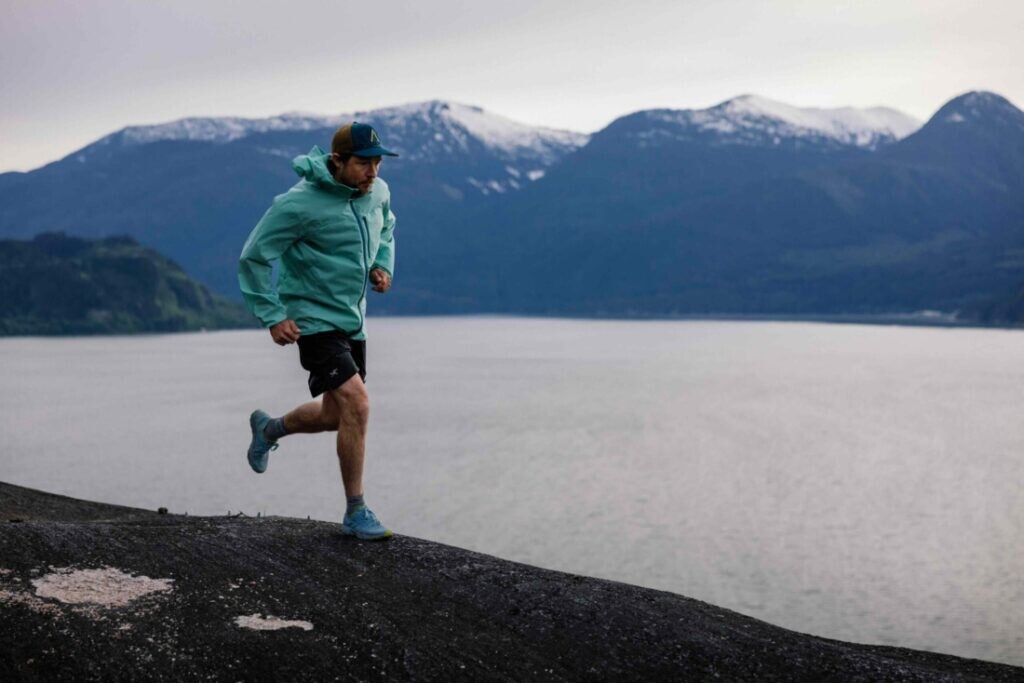
Have a return-to-run plan, and stick to it
Follow your return-to-run plan, even if you’re tempted to add more to your training schedule. Campbell suggests supplementing with complementary non/low impact aerobic work, if you must. The point here is not to build fitness, it’s to regain your ability to run pain-free, correct imbalances and avoid compensation injuries. From that you can build back your ability to train.
Do your first few runs back in a controlled environment (and solo)
A treadmill, a track or a grass field are great options so that you can stop or return home immediately if things start to act up. “Don’t run with a group, where you may feel pressure to run at a certain pace or distance,” suggests Campbell. A coach or physiotherapist watching you is fine.
Don’t run with ear pods
Running with no distractions helps you to tune in to your body, which is important when you have taken some time off. Campbell explains that running may feel weird at first. “Try to visualize good form, and run that way,” he suggests. “At the same time, don’t analyze your body into a state of creating or holding onto injuries. Bad neural connections can form when we are afraid of getting injured again.” Campbell suggests filming yourself running, and analyzing the video with your support network.
Warm up properly
Campbell suggests some easy running paired with active mobility to make sure your body is limbered up before you start your run. “Think about good form, and stick to your plan,” he says. Walk breaks are a good option if needed. “Walk/runs are great ways of getting back into running,” Campbell says.
Post-run, be honest with yourself about how it went. “If things still feel off, take more time off running,” Cambell suggests. If things do go well, Campbell recommends building back progressively. “Don’t jump back into your pre-injury miles or paces; work your way back up to them.”
Stay diligent with a rehab and prehab routine
“Don’t get lazy with that, just because things feel better,” Campbell says. Keep doing what helped you heal your injury as you move forward through the return-to-run process.
(11/21/2023) ⚡AMPby Keeley Milne
Kenyan's Peter Mwaniki Nueru wins Philadelphia half marathon in record time and Bernard Kiptoo Koech wins marathon
Kenya’s Bernard Kiptoo Koech flirted with the course record at the 30th edition of the Philadelphia Marathon held on Sunday (19) in Philadelphia PA his fifth marathon with no win managed to handle a nagging injury that he got two weeks ago when he won his first ever marathon in 2:14.26 missing out on the course record with one minute two seconds.
“I wasn’t expecting anything because I know the field was really competitive. But luckily, I don’t know what happened, unfortunately, they didn’t appear, so I was lucky to win,” said Koech.
Koech was followed by Joseph Whelan of United States in 2:14.98 with Sammy Rotich from Kenya closing the podium three finishes in 2:16.33.
United States Will Loevner and Pierre Billerot finished in fourth and fifth in respective time of 2:16.51 and 2:16.54.
Dennis Kipkosgei of Kenya who was making his debut over the distance and runs under the International Elite T.C stable that is managed by Keith Olson, finished in tenth place in 2:16.54.
The race course record of 2:13.28 set two years ago by Mike Chesire from Kenya remains standing.
Koech took home a cool Kshs 1,525,000 ($10,000) as prize money.
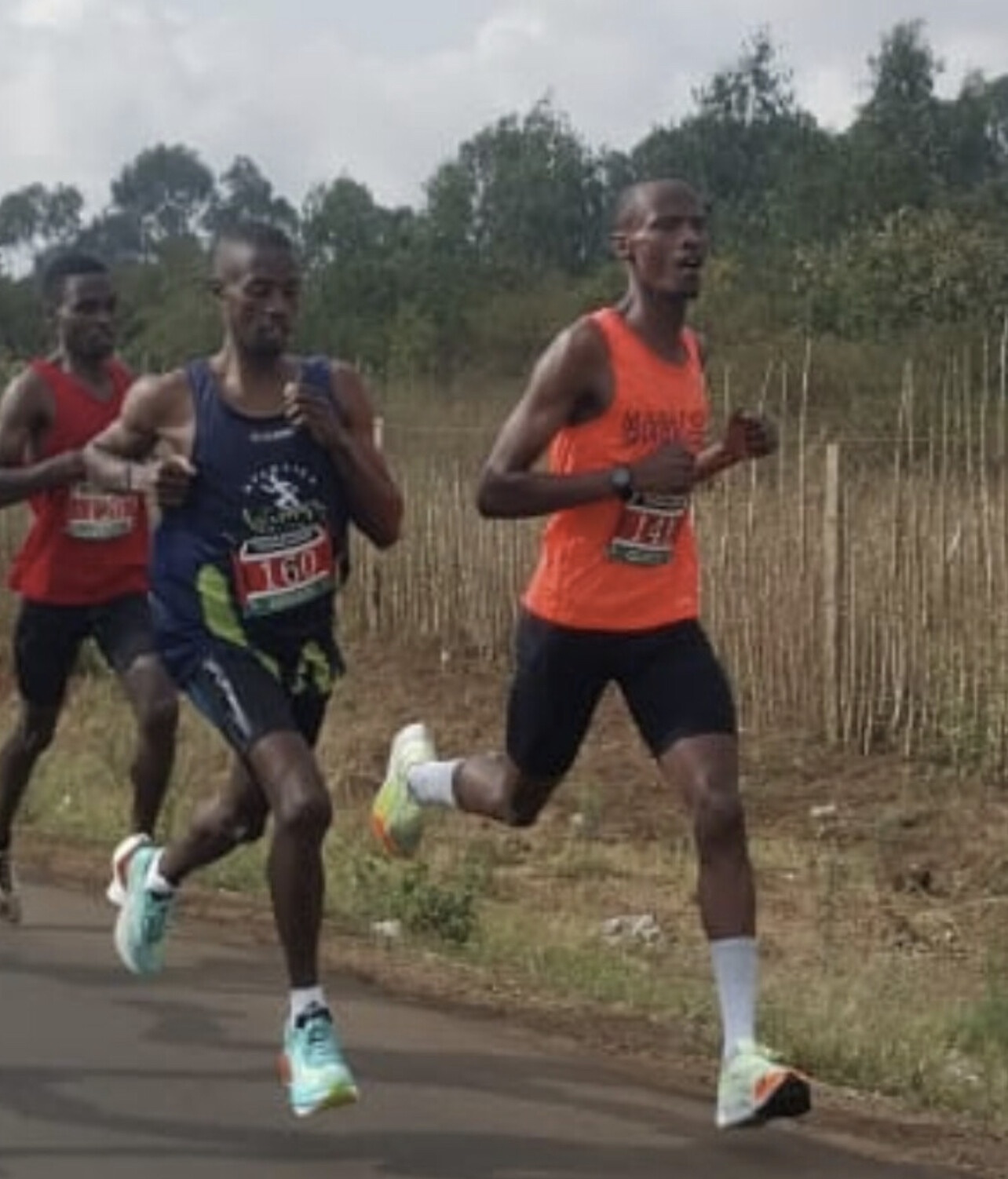
Peter Mwaniki Nueru, 25 set a new course record and won the half marathon on Saturday by nearly two minutes. He clocked 1:02:15. Peter trains at KATA (Kenyan Athletics Training Academy) in Thika Kenya (second photo in orange jersey). Lawrence Kipkoech placeed second clocking 1:04:04 and Travis Mahoney finished third in 1:04:10.
Everlyn Kemboi was first female clocking 1:11:02.
Athletes ran along the Benjamin Parkway in the cultural Museum District and wind through Philadelphia’s most scenic and historic neighborhoods. From the history-steeped streets of Old City, through one of the liveliest stretches of Center City, across the Schuylkill River into University City, up through the bucolic trails of Fairmount Park, and back down to canvas the banks of the river before finishing in front of the renown Philadelphia Museum of Art . The course is also sanctioned by USA Track & Field.
The half marathon was added to Philadelphia Marathon Weekend in 2006 and has seen an increase in athletes every year since. Whether as a test-run for first-time marathoners or as a challenging race along a scenic course, the Dietz & Watson Philadelphia Half Marathon has given thousands of athletes the opportunity to take on the Philadelphia Marathon Weekend on their own terms.
(11/21/2023) ⚡AMPPhiladelphia Marathon and Half
Have the time of your life in 2022 completing 13.11 miles! Runners will start along the Benjamin Franklin Parkway in the cultural Museum District and wind through Philadelphia’s most scenic and historic neighborhoods. From the history-steeped streets of Old City, through one of the liveliest stretches of Center City, across the Schuylkill River...
more...Joshua Cheptegei defends his choice of Eliud Kipchoge as the greatest marathoner
Joshua Cheptegei has shared why he thinks Eliud Kipchoge is the greatest marathoner as he gears to emulate the Kenyan at the Valencia Marathon.
Reigning world 10,000m champion Joshua Cheptegei is keen to follow in the footsteps of former world marathon record holder Eliud Kipchoge as he eyes an Olympic return and debut at the Valencia Marathon.

Cheptegei will be keen to apply some of the tactics he has gathered from Kipchoge, who is his role model. Kipchoge also made a switch from the track to the marathon and he has since been successful in his races.
Cheptegei will also be keen to follow in the footsteps of his compatriot Stephen Kiprotich who is a gold medallist in both world and Olympic marathons.

“For me, Eliud is the greatest…he's one of the guys that inspired me a lot when I was starting up my career and up to now, his legacy still inspires me a lot.
"We normally share whenever there’s an opportunity and I'm always grateful that his words have shaped me over the years, and he is always keeping an eye on me and guiding me in a good way.
"I wanted to shift from the track after the 2020 Olympic Games, but Stephen told me to stay longer.
"Stephen has been one of the guiding pillars, of the timing for the marathon, and this year he gave me the green light.
"He (told me) you can test yourself in a race and if you have challenges, you can bounce back on the track again after maybe six or seven months,” Cheptegei said as per Olympics.com.
After making his debut at the Valencia Marathon, Cheptegei intends to make a comeback to the track at the Paris Olympics next year following his new challenge.
He made his debut at the Olympic Games in Rio, where he finished sixth in the 10,000m and eighth in the 5000m.
He then returned to the delayed 2020 Tokyo Olympic Games where he won the 5000m and finished second in the 10,000m.
“It looks like I'm almost done on the track, but not yet done. I am still in love with the 10,000m and still want to go to Paris and win the 10,000m.
"And maybe the outcome in Valencia will (determine) if I do the 10km and the marathon…It could be something to venture into,” Cheptegei said.
(11/21/2023) ⚡AMPby Abigael Wuafula
Philadelphia Marathon issues apology after race runs out of medals
Thousands of runners gathered in the City of Brotherly Love for the 30th year of the Philadelphia Marathon weekend. The participants enjoyed ideal conditions and achieved fast times, but unfortunately, the race ran out of finisher’s medals, leaving more than 500 runners without one.
Nearly 17,000 runners finished the half marathon and 8K on Saturday, but some of the half-marathon finishers who were over two hours and 30 minutes did not receive a medal at the end of the race.
“This was deeply upsetting to find out there were no medals left,” one finisher wrote on Instagram. “This race has been around for 30 years. How does one underestimate medals by that much? X participants = X medals. #notacceptable.”

“There were a lot of people that didn’t get it near the end and it’s kind of disappointing when you’re a slow runner,” another finisher wrote.
Philadelphia Marathon organizers said in a statement that they received record-breaking registration numbers and expected fewer runners to actually show up–a very high-risk, low-reward scenario. They sent an apology to all participants on Sunday, admitting the error and ensuring each finisher would eventually get a medal.
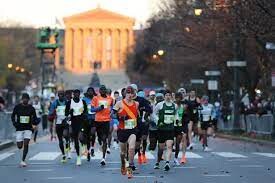
“This year, we witnessed phenomenal weather, with record-breaking registration and an unprecedented number of day-of-race participants. However, with great numbers comes great responsibility, and we acknowledge that we fell short in ensuring every runner received a medal today. We understand the disappointment of not receiving a medal after your hard work. Please know that we are committed to rectifying this and dedicated to making this right for you.”
The race also promised to send a discount code to medal-less finishers for next year’s race.
(11/21/2023) ⚡AMPby Marley Dickinson
Philadelphia Marathon and Half
Have the time of your life in 2022 completing 13.11 miles! Runners will start along the Benjamin Franklin Parkway in the cultural Museum District and wind through Philadelphia’s most scenic and historic neighborhoods. From the history-steeped streets of Old City, through one of the liveliest stretches of Center City, across the Schuylkill River...
more...Kiptum, 23, predicts how long his athletics career will last after experts' concerns
Kelvin Kiptum has shared his ambitions of making sure he continues running for the next 10 or 15 years and win as many races as he can.
Reigning world marathon record holder Kelvin Kiptum is not afraid of the longevity in his marathoning career.
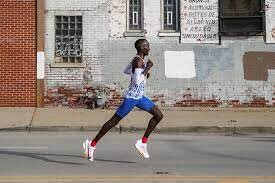
Many experts have revealed that since he started his career at a young age, 23, his longevity in the sport is not guaranteed but Kiptum thinks otherwise.
The Valencia Marathon champion explained that he plans to keep running for the next 10 to 15 years and win as much as he can.
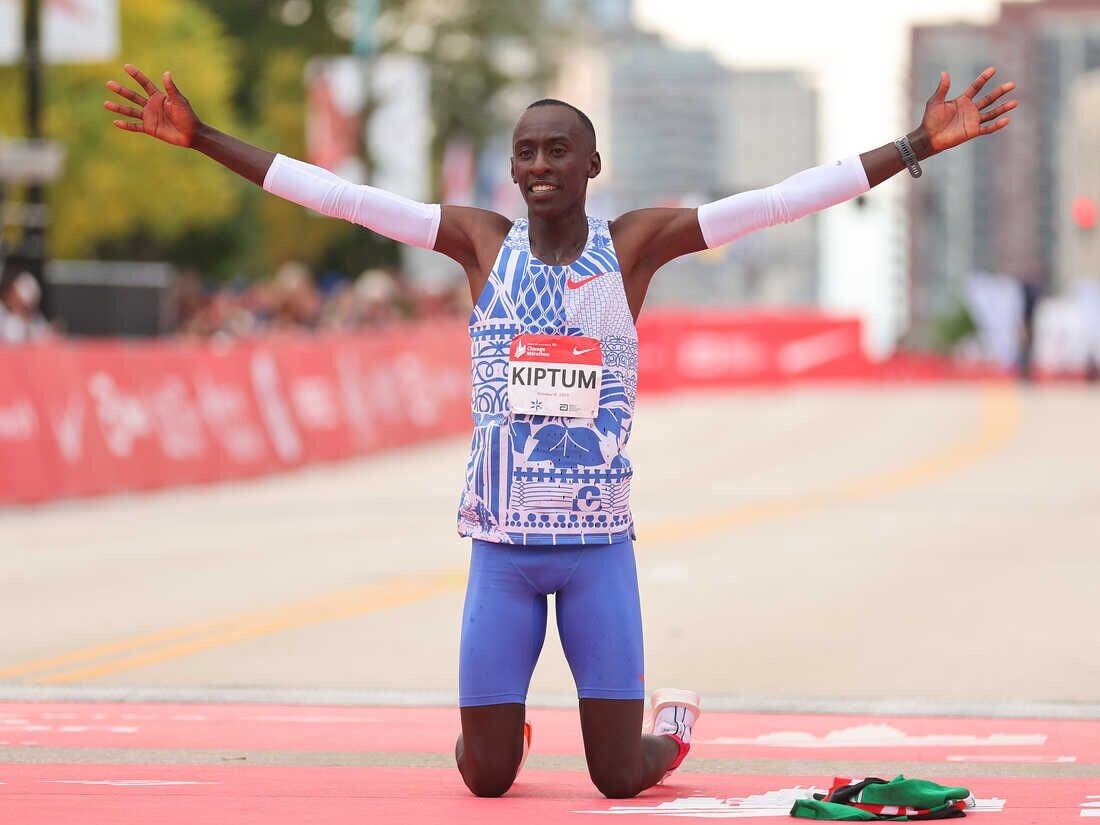
“My ambition is to run at the top of the marathon in the next ten or fifteen years and win as much as possible. But nothing guarantees that.
"My secret is training, running many kilometers a week. I'm not afraid of that, but you can always get injured. What then? Besides, I don't walk alone.
"Tamirat Tola (an Ethiopian runner) won the New York Marathon in 2 hours, 4 minutes and 58 seconds. The course there is very difficult, so that was a great time. You never know how good he will be in Paris,” Kiptum said as per De Tijd.
Just at 23, Kiptum has already made history in all the marathons he has competed in. He made his debut at the Valencia Marathon last year where he clocked the fastest time in a debut to win the race.
He then proceeded to the London Marathon earlier this year and clocked the second-fastest time in history to clinch top honours. Kiptum then shattered Eliud Kipchoge’s world record time of 2:01:09 at the Chicago Marathon after cutting the tape in 2:00:35.
In April next year, he will take part in the Rotterdam Marathon and then, most importantly, the Olympic Games in Paris.
If he wins gold there, he will have achieved most of his goals and there will most likely be no challenge for him but he promised that he will continue running despite having achieved great milestones already.
(11/21/2023) ⚡AMPby Abigael Wuafula
Agnes Ngetich clocks second-fastest time in history with dominant win in France
Agnes Ngetich clocked 29:26, the second-fastest time in history, to win the 10km trail road race in Lille, France.
Reigning World Cross-country bronze medalist Agnes Ngetich was in a class of her own as she reigned supreme in the 10km road race in Lille, France on Saturday, November 18.
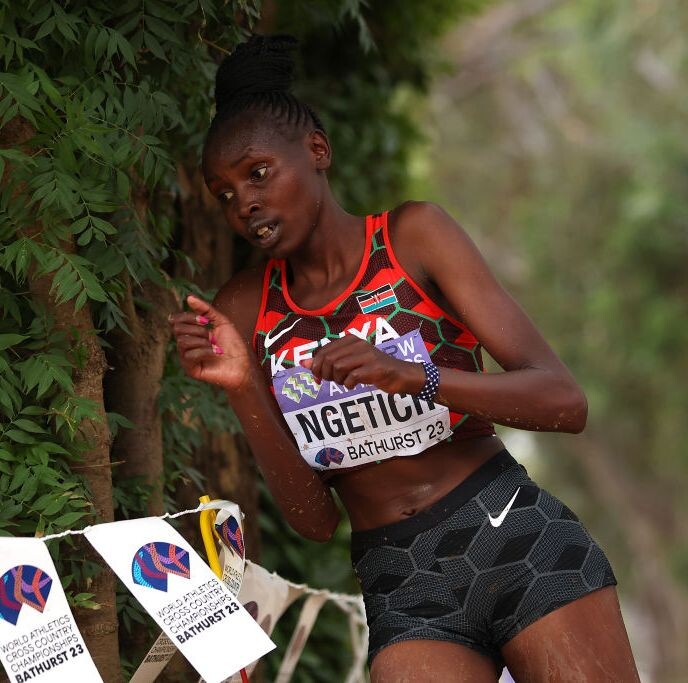
Ngetich clocked 29:26, the second-fastest time ever to win the race ahead of Emmaculate Anyango who clocked a Personal Best time of 30:01 to finish second. Christine Njoki completed the podium, clocking 30:41 to cross the finish line.
The 22-year-old has been in stellar form this season and will be keen to continue the winning streak to next year’s Olympic Games in Paris, France, where she intends to compete in the 10,000m.

Ngetich previously clocked a world record time of 29:24 at the Brasov Running Festival in Romania but the record was not ratified by World Athletics since the course did not meet the required standards.
She is also fresh from reigning supreme at the Athletics Kenya Cross-Country Meet held at Kyongong Grounds, Bomet County.
She clocked 31:55 to win the race ahead of Cynthia Chepngeno and Sandra Chebet who finished second and third in respective times of 31:59 and 32:11.
Ngetich’s time is the second-fastest time by a woman in history. She now comes behind former London Marathon champion Yalemzerf Yehualaw, who clocked a world record time of 29:14 to win the women's event in Castellón, Spain earlier this year.
(11/20/2023) ⚡AMPby Abigael Wuafula
Lille Urban Trail 10 KM
The Lille Urban Trail is an annual world-class race taking place in Lille. Professional runners, friends wishing to stretch their legs: the Lille Urban Trail welcomes people of all levels for nighttime events to discover the city's most beautiful monuments. Every year in November, the schedule of outings in Lille sees the arrival of one of the most anticipated races...
more...Kenya’s Barnaba Kipkoech took the top honors at the 12th edition of the Kobe marathon
Barnaba Kipkoech took the top honors at the 12th edition of the Kobe marathon held on Sunday (19) in Kobe, Japan.
The 30 year-old who came to this race with the fastest time on paper of 2:08.21 that he got last year at the Malaga Marathon where he took the honors, live up to the race expectations as he cut the tape first in a time of 2:11.19 with the Reigning Oceania 10,000m champion, Tim Vincent of Australia who was making a debut over the distance, coming home in second place in a personal best of 2:12.05.

The 2019 Morocco’s 10,000m national champion, Hassan Toriss, who finished in twelfth place last year, made a great improvement this year, as he managed to be on the podium when he clocked 2:13.06 to wrap up the podium three finishes.
Last year’s thirteenth place finisher Ayoub Dardar of Morocco also made a significant improvement as he came home in fourth with Kenya’s Mathew Kibiwott finishing in fifth in respective time of 2:13.38 and 2:15.25.

The race course record of 2:08.46 set four years ago by Uganda’s double 5000m National Champion, Geofrey Kusuro remains standing.
(11/20/2023) ⚡AMPby John Vaselyne
Kobe Marathon
Do you know the first marathon competition in Japan was held here in Kobe? In other words, Kobe is the birthplace of marathon in Japan! The first marathon in Japan took place in 1909, in Meiji period. Since the 42.195 km standard distance had not been fixed yet, the race was approximately 32 km long. (By the way, the standard...
more...Jacob Kiplimo continued his return to racing with a stunning performance at the NN Zevenheuvelenloop
World cross-country champion Jacob Kiplimo continued his return to racing with a stunning performance at the NN Zevenheuvelenloop in Nijmegen on Sunday (19), equalling the world 15km best with 41:05.
The Ugandan was forced to miss the World Championships in Budapest and World Road Running Championships in Riga through injury, but returned to action at the end of last month with a convincing win at the Cross Country Tour Gold meeting in Atapuerca.
Today he notched up another victory, winning by 99 seconds to equal the world best set five years ago by his compatriot Joshua Cheptegei.

He started out at a relatively conservative pace, mindful of the fact there was a big climb to come between 3.5km and 5km. He reached 3km in 8:42 – 23 seconds down on Cheptegei’s pace from 2018 – and got to 5km in 14:24, by which point compatriot Rogers Kibet was already struggling to stay in touch.
Shortly after, Kiplimo was out in front alone and he passed through 8km in 22:31 with a 24-second leading margin. He hit the 10km checkpoint in 27:49, the exact same split Cheptegei recorded during his landmark run. From that point on, Kiplimo’s pace fluctuated slightly; sometimes ahead of course record pace, sometimes behind it.
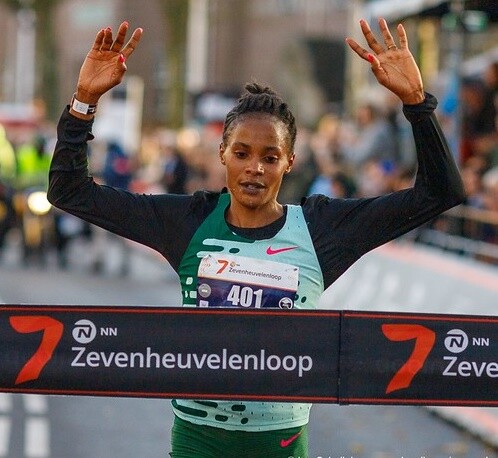
A 2:31 final kilometer – his fastest of the race – brought him home in 41:05. Kibet held on to second place in 42:44, securing a Ugandan 1-2.
Although 41:05 is the fastest ever performance in a standalone 15km race, Kiplimo recorded a 15km split of 40:27 en route to his half marathon world record in Lisbon in 2021.
World steeplechase record-holder Beatrice Chepkoech was a convincing winner of the women’s race, crossing the line in 47:12 to finish 43 seconds ahead of Israel’s Lonah Salpeter.
(11/20/2023) ⚡AMPby World Athletics
The NN Zevenheuvelenloop
The NN Zevenheuvelenloop, also known as the nation's most beautiful and the world's fastest 15 kilometer race this year.The NN Zevenheuvelenloop has undergone a lot of development in the past 32 years.From a 'walk' with 500 men has grown into an event where almost 40,000 people register for it.This makes it the largest 15km race in the world and with...
more...Three winter running workouts to keep fitness at the max
These workouts will keep your fitness level high even if your mileage is low.
Many of us find it challenging to get out the door when the ground is covered in snow, or when the temperature dips so low we have to load up on layers. These workouts are short enough that your toes won’t get cold, but challenging enough to keep fitness at a max, even if your mileage is lower than usual.

1.- Surge sets
The short pace-pickups will keep your legs feeling peppy without overloading them.

Warm up with 10 minutes of easy running
Run pickup intervals (short, fast intervals), with each set of intervals at a slightly faster pace or effort: two x 90 seconds at 10K pace, with 90 seconds of recovery between each interval, four x 60 seconds at a slightly faster pace, with 60 seconds recovery between each interval, four x 30 seconds hard running with 30 seconds recovery between each interval, and finally four x 15 seconds at your hardest effort (with 15 seconds of recovery between each interval).
Cool down with 10 minutes of very easy running.
2.- 5-4-3-2-1
This fartlek-style countdown workout targets endurance and boosts your ability to run on tired legs.
Warm up with an easy 20-minute run, and then run harder intervals of five, four, three, two and one minute(s), each followed by a recovery jog of the same duration.
Cool down with 20 minutes at a steady pace to finish the session.
There’s no need to focus on hitting particular paces during your intervals in this one–simply focusing on progressively picking up the pace midrun will build fatigue resistance and improve your ability to focus midrun.
3.- One-to-one workout
This is a great simple workout, easy to tweak to make more or less challenging. Feel free to shorten your intervals to 30 seconds each, or, after you’ve mastered the one-to-one session, kick it up to two minutes on and off.
Warm up with 10 minutes of easy running.
Run one minute “on” at a faster pace, and one minute “off” at a recovery pace, repeat for 20 minutes.
Progressively increase the speed of the harder sections so that you’re running at 10K effort or pace by the end of the run.
Cool down with five-10 minutes of easy running.
Remember to follow a speed session with an easy running day or a rest day.
(11/20/2023) ⚡AMPby Keeley Milne
Heinz is Encouraging Runners to Start Fueling with Ketchup but is it a Bad Idea
The average marathoner would need to down over 60 packets to make it to the finish line.
We all have our favorite go-to gels and snacks to keep handy during a long run, but recently, one company has proposed turning to a different kind of packet to refuel during your runs—and you might have a drawer full of them in your kitchen.

Earlier this month, Heinz released an advertisement claiming that “Runners everywhere are using Heinz ketchup packets on their runs.” The ad announces new ketchup-themed running routes available on various running apps. The routes, shaped like the iconic bottle of the famed ketchup, will point out which restaurants in cities like Toronto, Chicago, and New York City carry packets of Heinz, just in case you need to restock during a run.
But is ketchup the best thing to power you through miles? New York-based nutritionist Amy Stephens would like to squash that idea.
“Ketchup packets are not an efficient fuel source for distance runners,” Stephens told Runner’s World. “Too much sodium and not enough carbs.” With just 10 calories and two grams of carbs per packet, Stephens notes that it would take a lot of ketchup to fuel the typical runner’s caloric needs. “Athletes need about 30 to 60 grams of carbs per hour during a long workout,” she says. “That’s 15 packets at a minimum per hour.”
But what about a marathon? The average marathon time, according to RunRepeat, is 4:32:49. That would mean the average runner would need to down at least 60 packets over the course of 26.2 to meet their nutritional needs. That’s a lot of tomato.
“I’ve used a couple [of packets] on a burger, but the thought of eating 60 for a marathon is not appealing,” Stephens said. She noted that while the packets still contain electrolytes like potassium, they don’t make up for the lack of carbohydrates.
Stephens says that while the ease of finding ketchup through running apps sounds appealing, the packets could be a gateway to other, less useful products for a run. “While Heinz promotes the ease of finding packets in fast food chains, you might stop in to grab some ketchup and end up with a burger or fries,” she said.
Additionally, the condiment could have an adverse effect on some runners.
“Ketchup can cause reflux, and many runners are particularly susceptible to GI issues,” Stephens said. “During a hard, sustained effort, the gut has a harder time digesting foods. That’s why gels and sports fuels are specifically designed to contain easily digestible sugars from glucose and fructose.” She added that she wasn’t sure how quickly the body can convert tomato puree and high fructose corn syrup into usable energy.
If you’re looking for alternatives to ketchup but still want to maintain a budget, Stephens recommends packets of honey for a quick boost of energy and, barring that, a quick handful of dates.
(11/19/2023) ⚡AMPby Runner’s World
One year later: the phenomenon of Uncle Chen and his chain-smoking marathon
It’s been a year since Canadian Running broke the story of Uncle Chen, who ran a 3:28 marathon while chain-smoking cigarettes. To celebrate the anniversary, here’s some behind-the-scenes information on how the story came about, the aftermath, and where Uncle Chen is now.
How it came about
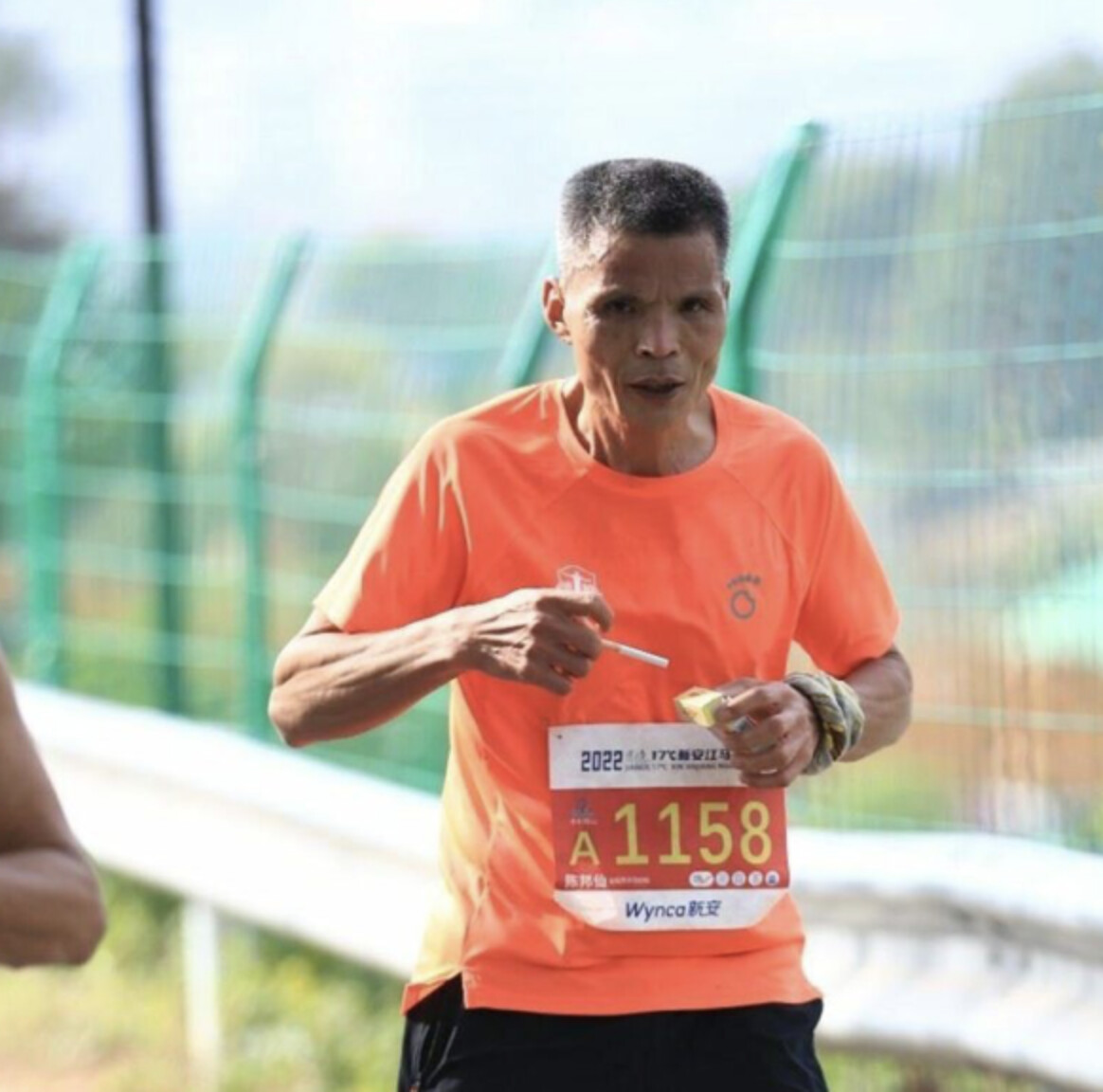

Usually, come November to January in the running season, events and races in North America have slowed down, and as a writer, I am always looking for the next big story to entertain our readers. I saw that China had a few marathons in early November, so I decided to search for the word “marathon” in simplified Chinese on the popular social media app Weibo.
Within seconds, I saw a post of a man lighting a cigarette in the middle of the Xin’anjiang Marathon, gathering hundreds of comments and shares. At the time I thought it was funny, but I had no idea what would come of it. I had the same reaction as you (probably) when you first read the story. The concept of a runner smoking cigarettes during a marathon and running well is hilarious and incredible. I had to investigate.
I discovered it wasn’t the first time Uncle Chen had been lighting it up mid-marathon. I spent the day translating documents and results from simplified Chinese to English and found his name, previous photos and physical results of him smoking during races prior to the 2022 marathon. That’s when I knew we had something special on our hands.
The aftermath
When the story was published on Nov. 14, 2022, it began to make its rounds on Facebook and Twitter and within a day or two it was on every news site you could think of: Business Insider, Golf Digest, Barstool Sports, New York Post, Global News and more. I had several news agencies contacting me to speak to Uncle Chen, who seemed to be bothered by the popularity his stunt got in North America.
I reached out to Chen and his niece. Chen did not respond, and his niece sent us a message via translation that it was frowned upon to have this popularity in foreign media–that it was viewed in China as setting a bad example.
Within two weeks of the story being released, the Chinese Athletic Association (C.A.A) issued a proposal recommending that all Chinese marathons ban smoking. The proposal was put in place to promote healthy participation and to stop people from smoking at road-running events. The C.A.A. wrote that those who fail to comply with the competition rules should be disqualified.
Where is Uncle Chen now?
Uncle Chen has been flying under the radar since breaking the Internet last year, but to our knowledge, he is still very involved in his local running scene. Chen serves as the co-founder of the Zhejiang Xianju Road Running Association and the Zhejiang Provincial Marathon in his hometown of Taizhou City. According to Chinese media Nandu, Chen still loves to smoke and run, but it is his personal choice to do so.
Local media reportedly tried to contact Uncle Chen several times, but he has declined to chat about smoking or his marathons, hopes his fame will fade over time and did not want to delay things by speaking about his accomplishment.
(11/19/2023) ⚡AMPby Running Magazine
America’s Oldest Continuously-Held Ultramarathon Is Only Looking Forward
After 60 years, the JFK 50 Mile Race is sticking to its community-centered approach, and people keep showing up
Mike Spinnler cries nearly every time he recounts memories as a runner and long-time race director of the JFK 50, the oldest continuously run ultra in the country.


Such memories include the time he first ran the iconic Maryland race when he was 12 years old, or the year he cheered on his 60-year-old wife as she crossed the finish, or memories of watching his two sons racing. For him, this race is a member of the family.
In 1993, five years after his tenth JFK finish, Spinnler became the race’s second race director, where he’s been ever since. By then, he’d set the course record (5:53:05) in 1982, and added another win in 1983, for a total of five top-five and six top-ten finishes.
Thirty years later, it’s still his pride and joy. He’ll immerse in the magic of the event again on Saturday, November 18, as more than 1,000 runners take the journey through the historic route that’s so dear to his heart.
“It just keeps growing in its prestige,” he says.
The JFK 50 started in 1963, the same year President John F. Kennedy was assassinated. The president had instituted a public health program to improve the nation’s fitness, supporting the launch of a series of 50-mile races around the country. But as years went on, the only one that stuck around was the JFK 50.
“Kennedy’s mission was this: Improve your physical fitness, improve your lifestyle, improve your country,” says Spinnler. “We heeded his call and have been doing it for 60-plus years.”
The JFK 50 course is located about an hour northwest of Washington D.C., covering traditional lands of the Indigenous Massawomek and Shawandassee Tule (Shawanaki/Shawnee). One of the race’s primary appeals is that it’s a horseshoe-shaped, point-to-point course with three distinct sections: The Appalachian Trail (miles 0-15), the Canal/Tow Path (miles 15-42), and the rolling finish (miles 42-50).
The race starts in Boonsboro, Maryland, follows a few miles of paved roads before connecting with the Appalachian Trail (AT), where the course climbs more than 1,000 vertical feet in five miles, crests to the high point, and follows rocky singletrack before dropping 1,000 vertical feet halfway into the race (mile 14.5), to connect with a flat marathon distance along the C&O Canal Tow Path. The last several miles are rolling country roads, where it finishes at Springfield Middle School in Williamsport.
In 2019, Seth Ruhling, an unsponsored athlete, showed up to the JFK 50, slept in his car the night before, and won the race in a blistering 5:38:11, his debut 50-miler. Within hours of winning, he sealed a sponsorship with The North Face.
Ruhling, 29, now lives and trains in Boulder, Colorado, and he’ll be returning for his second JFK 50. Since Ruhling’s 2019 win, he has made a name for himself with a sixth place finish at the Pikes Peak Marathon in 2021, second place at Montana’s Rut 50K, first place at the Broken Arrow Skyrace 46K, and most recently, sixth at CCC 100K during the week of UTMB in Chamonix, France.
In 2020, JFK 50 was one of the only races in the country that didn’t shut down with the pandemic. Ruhling had planned on racing, but got injured. “I always wanted to go back,” he says.
Ruhling was particularly drawn into this year’s race because of its deep field of registered elites, which had at one point included 2023 Western States winner Tom Evans, Matt Daniels, Adam Merry, and Sean Van Horn—all of whom have since dropped.
His strategy for the mixed course, which requires technical trail chops as well as fast road turnover, is to attack every single section. He says that, while the JFK 50 is known more as a “track race,” it’s a mistake to discount the early trail miles. “The record is going to happen on the towpath, sure, but only if it’s set up with efficient running on the AT section,” he says.
(11/19/2023) ⚡AMPby Outside Online
The Fight Over the Olympic Trials Start Time Has Ended. But the Real Issue Runs Deeper.
Following significant athlete pushback, USA Track & Field moved the race’s start time earlier. But the governing body also needs to offer Trials host cities a better deal to prevent similar issues in the future.
It’s become a tradition of sorts that every Olympic Games needs to be preceded by stories of scandal and intrigue, so it’s perversely appropriate that the lead-up to the Olympic Team Trials marathon next February has been plagued with its own mini-fiasco.

It began this past summer, after it was announced that the 2024 U.S. Olympic Trials marathon would take place shortly after noon on February 3, 2024. Not everyone was thrilled with the late start as the Trials are happening in Orlando. For some, staging a competitive, high-stakes marathon in the middle of the day in Florida seemed like a blatant disregard for athlete health.
In September, nearly 100 Trials participants co-signed a letter from the Athletes Advisory Committee to USA Track & Field leadership requesting that the race start time be moved to 6 or 7 A.M. to protect the participants from potential heat-related illness and injury. Following a private meeting with USATF CEO Max Siegel, the Athlete Advisory Committee was initially optimistic that the start times would be changed. However, two weeks ago, the Committee publicly reprimanded the Greater Orlando Sports Commission (GO Sports), the local organization responsible for putting on the Trials race. In a letter that was shared with the public, Trials athletes expressed their chagrin that while USATF and their television partners at NBC seemed amenable to an earlier start time of 10 A.M., GO Sports was refusing to budge on a noon start, unless they were compensated to the tune of $700,000.
“It is difficult to find words capable of expressing how angry and disappointed the athletes are to hear the ultimate hurdle they face is with the Greater Orlando Sports Commission,” the letter from the athletes read. In response, the owners of Track Shack, an Orlando-based running specialty store and event management company that is co-hosting the Trials, published an open letter of their own in which they maintained that they had been unfairly “blindsided” by the eleventh-hour request to move up the start time. The local organizers had repeatedly been told by USATF that a noon start was “non-negotiable,” largely due to the economic incentives of having a live TV broadcast of the race at a desirable time slot, and had developed their business model accordingly. This week, however, USATF announced that all parties had agreed on a 10 A.M. start after all. So much for non-negotiable.
As far as scandals go, an argument over the appropriate start time of a 26.2-mile road race isn’t exactly edge-of-your-seat type stuff. When I spoke to Rich Kenah, the CEO of the Atlanta Track Club and race director for the last Olympic Trials race, he told me that while “any opportunity for our sport to be ‘above the fold’ so to speak, tends to be good, when the challenges of our business are front and center, I think it has a detrimental effect on future opportunities for the sport to grow and flourish.”
Kenah is cautious not to make too much out of the start time debacle. He says that there’s almost always some sticking point when a local organizing committee has to coordinate with USATF in a way that satisfies the needs of their Olympic and broadcast partners. For Kenah, the larger issue, and the root cause of these more minor friction points, is a Trials business model that always puts the entire financial burden on the host.
For anyone who wants a detailed analysis of why that model is not sustainable, I’d recommend Jonathan Gault’s extensive report, published last year on Letsrun.com. In brief, the problem of the current Trials model is that it appears to mimic, albeit on a vastly smaller scale, the parasitic behavior of the International Olympic Committee, which takes in billions in sponsor and television revenue, while the host city is left to bankroll the lion’s share of the Games. While the cost of hosting the Olympic Trials might “only” be around two or three million dollars, that’s a hefty price tag for a running events company like the ATC, which has few viable ways to generate revenue from the event. (The local organizer cannot secure sponsorship agreements that threaten the exclusivity of USATF and USOPC partners, which leaves them with limited options.) In addition to being on the hook for all the operational and logistical costs of staging a world-class marathon, the local organizing committee is required to pick up the bill for stuff that, one would think, could be at least partially subsidized by USATF—like athlete prize money (at more than $500,000, this is one of the larger costs of staging the event) and event promotion ($75,000 minimum). As a final insult to injury, the Trials host needs to pay USATF a $100,000 rights fee.
With both the Olympic Games and the marathon Trials, prospective hosts are of course promised that staging the event will be a boon for the local economy. (The “Request for Proposal” guidebook for the 2024 Trials estimates that the “economic impact” of the event is around $20 million for the host city.) Arguably the bigger selling point is the sheer prestige of being associated with the Olympic brand. Hosting a Trials race can potentially elevate the profile of a city’s signature marathon.
Prestige, however, is a fickle thing. It’s no secret that the chorus of pushback against the Olympics has only grown louder in recent years, as more and more prospective host cities have retracted their bids. The Trials race—frequently touted as America’s greatest marathon—seems to be in danger of a similar fate. Only two cities were ever cited as showing any interest in hosting the 2024 edition; after Chattanooga was disqualified in another mini-scandal that is still playing out, Orlando seemed to be the winner by default. This does not bode particularly well for the future.
When it comes to fixing the Olympics, one idea that is frequently proposed is to give the Games a permanent home, or to rotate it between just a few cities; the idea is that this could help reduce costs by having a pre-set infrastructure already in place. What’s more, it could eliminate the rigmarole of the bidding process. Could something similar be the salvation for the U.S. Trials marathon? At the very least, having the race in the same location each time would allow the host to fine-tune their event with each iteration-—a win for the athletes. For better or worse, we already have a de facto permanent home for the Olympic Trials in track and field, which next summer will be staged in Eugene for the fifth consecutive time.
Brant Kotch, the former race director of the Houston Marathon who oversaw the city’s hosting of the Olympic Trials in 2012, told me that when his team tried to host the event again in 2016, part of their pitch was that they wanted to “make Houston the Eugene of long-distance road racing.” When Houston hosted in 2012, the event was a massive success; they had perfect weather and big-time performances from the stars of the sport. And, thanks largely to a million dollar grant from the state of Texas to help subsidize large-scale sporting events, they were able to host the race without taking too much of a financial hit. According to Kotch, Houston had a solid bid to host the 2016 Trials (one that was apparently unanimously approved by USATF’s Long Distance Running Division), but USATF’s leadership ultimately decided to give the race to Los Angeles. When we spoke, Kotch still sounded slightly bitter about being passed over.
Houston hasn’t tried to host the race again. There are some logistical reasons for this—for one, massive downtown construction projects in the intervening years have made the 2012 course obsolete—but economics are a significant factor. As someone open to the idea of a permanent home for the Trials, Kotch says that the only way that this will work, long-term, is for the sport’s national governing body to help subsidize the race: “With respect to its Olympic Trials, USATF has to pony up some amount of money. This is distance running. You can’t sell any tickets.”
Kenah agrees. He thinks that it would be in everyone’s best interest if USATF would incite competition between prospective host cities by promising some kind of revenue share system from one of its marquee events. (USATF did not respond to a request for comment on the suggestion that it should shoulder more of the cost to host the Trials.)
“Right now, you cannot make money hosting the Olympic Trials marathon,” Kenah told me. “I don’t care who you are or where you are, it’s just not possible with the current model.”
When I floated the idea of hosting the Olympic Trials marathon in the same place every Olympic cycle, Kenah told me that he was still very much in favor of moving the event to different cities. He mentioned that his father took him to see the Millrose Games in New York City when he was a kid. There was a distinct physical thrill to witnessing professional track and field up close that made him fall in love with the sport for life. (Kenah made the U.S. Olympic Team in 2000 and ran the 800-meters at the Sydney Olympics.)
“There is nothing better than experiencing the sport in person,” Kenah says. “If we had an Olympic Trials marathon in cities around the country, big and small, we would expose the sport in a very real, experiential way that otherwise kids of the next generation would not get. But that can be only accomplished if the current business model is just blown up.”
(11/19/2023) ⚡AMPby Outside Online
World championship silver medalist suspended 30 months for evading doping test
Jamaican 400m runner and 2022 world championship silver medalist Christopher Taylor has been slapped with a 30-month suspension by the Athletics Integrity Unit (AIU) after evading an out-of-competition doping test without justification in November 2022.
After a comprehensive six-month investigation, the AIU found that Taylor violated Article 2.3 of the World Anti-Doping Agency’s (WADA) Anti-Doping Code, deeming his actions as “evading, refusing, or failing to submit to sample collection.” In November 2022, anti-doping officials attempted to conduct an out-of-competition doping test at the location Taylor had specified on his whereabouts form, but he was not present at the location and had not updated his whereabouts information.

According to the Jamaica Observer, Taylor was at the Norman Manley International Airport in Kingston when the officials arrived at his home, waiting to catch a flight to the U.S.
If an athlete is not where they say they are when anti-doping officials show up, it counts as a missed test. Typically, a first or second offense does not carry any penalty, but if an athlete misses three tests during a 12-month period, that constitutes a whereabouts violation, resulting in an automatic period of ineligibility.

Taylor was a finalist in the men’s 400m at the Tokyo Olympics and the 2022 World Championships in Eugene, Ore. He also helped the Jamaican men’s 4x400m relay team win silver at 2022 Worlds.
Twelve of the 30 months of his suspension have already elapsed; Taylor will become eligible to compete again in May 2025. His last competitive race was in August 2022.
(11/18/2023) ⚡AMPby Marley Dickinson
Barnabas Kiptum eyeing grand return at Abu Dhabi Marathon after disappointment in 2021
Barnabas Kiptum will be seeking redemption as he returns to the Abu Dhabi Marathon scheduled for December 16.
Barnabas Kiptum will be out to finish what he started when he heads to the ADNOC Abu Dhabi Marathon scheduled for Sunday, December 16.
The 36-year-old was in action during the 2021 edition of the race but unfortunately failed to finish after some challenges and he will be keen to rewrite the script when he takes on the tough opponents.

Kiptum has had a soft 2023 season, competing in one race, the New Taipei City Wan Jin Shi Marathon, and winning it. He will be hunting for his second win when he takes on the tough opponents.
He lines up as the fastest in the field with a Personal Best time of 2:04:17 and he will be banking on past experience to outshine his challengers.
The race has also attracted Uganda’s Andrew Kwemoi, also an able athlete. The Ugandan has enjoyed a great season too that saw him clinch the Miano Marathon title earlier this year.

He was also in action at the World Championships in Budapest, Hungary but failed to finish the race. However, he will use the experience from the global stage to vie for a podium finish as he competes in the marathon in the streets of Abu Dhabi for the first time.
Another athlete to watch will be Kiptum’s compatriot, Leonard Barsoton. He lines up as the third-fastest in the field with a PB time of 2:09:06 and he will be looking to outshine his opponents too.
Meanwhile, the women’s field will also bring up a huge challenge having assembled very strong women. Ethiopia’s Tirunesh Dibaba leads the charge with a PB time of 2:17:56.
The Ethiopian will be running her first marathon this year, after coming out of her maternity leave. She took a break in 2018 and has come back into competitive running this season.
She will be challenged by Kenya’s Maureen Chepkemoi who will be running her fourth marathon this season. Another one to watch will be Ethiopia’s Hawi Feysa who has enjoyed a great 2023 season and will be keen to extend her winning streak in Abu Dhabi.
(11/18/2023) ⚡AMPby Abigael Wuafula
ADNOC Abu Dhabi Marathon
The Abu Dhabi Marathon is shaping up to being first class marathon for both elite runners and average runners as well. Take in the finest aspects of Abu Dhabi's heritage, modern landmarks and the waters of the Arabian Gulf, at this world-class athletics event, set against the backdrop of the Capital's stunning architecture.The race offered runners of all abilities the...
more...How Long Do Super Shoes Last? Here’s What the Latest Data Says.
Fancy new midsole materials like PEBA make you faster, but at the cost of durability
The eternal question of how long your running shoes should last became suddenly topical a few months ago, when Tigst Assefa set a world marathon record in what Adidas billed as essentially a single-use marathon shoe. This development sparked some important discussions about sustainability, accessibility, and fairness. But it also served as a reminder of how little we actually know about the useful life of running shoes, especially in the new era of thick-foamed super shoes.
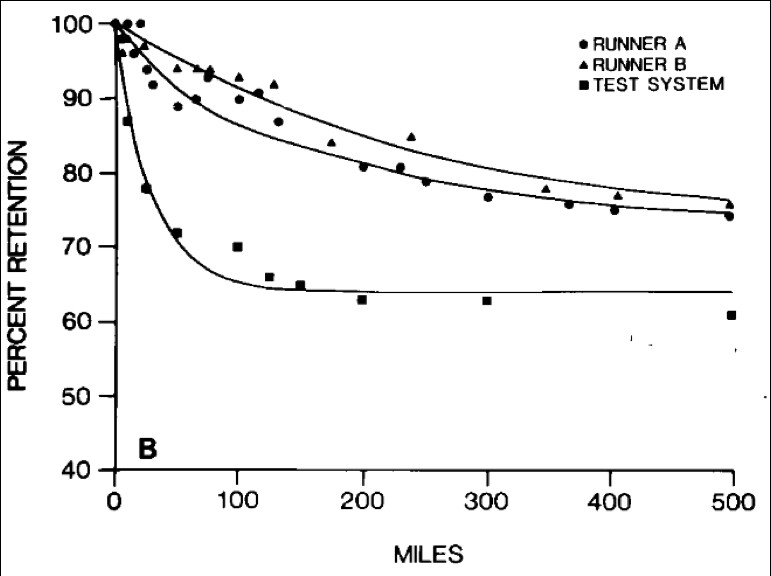
Fortunately, there’s some interesting new data in a study from researchers in Spain, led by Victor Rodrigo-Carranza of the University of Castilla-La Mancha. In the Scandinavian Journal of Medicine and Science in Sports, they compare shoes made with a modern super foam to a traditional EVA midsole before and after 280 miles, and find that the new midsole does indeed lose its magic more quickly—so much so, in fact, that the super shoe is no better than the regular shoe at that point.
Before digging into the specifics of the new study, it’s worth sketching in some context. The conventional wisdom that I’ve heard throughout my running life is that shoes typically last somewhere between 300 and 500 miles. This is based on some mix of cumulative experience and imperfect data, some of it published and some presumably locked away in shoe-company filing cabinets.
For example, there’s a 1985 study that measured shock absorption at frequent intervals between 0 and 500 miles, using a machine to simulate the impacts of running as well as two volunteers who racked up 500 real-life miles. Here’s an example of how shock absorption changed with mileage for one particular shoe:
The machine version of running obviously didn’t replicate the demands of in-person running very well, but the two human volunteers show similar patterns. Overall, the human testing found that shoes retained about 80 percent of the shock absorption after 150 miles, and 70 percent after 500 miles. You can see that the curve flattens out between about 300 and 500 miles, which is presumably where the conventional wisdom on shoe lifespan comes from. Conversely, you could argue that once you’re past 300 miles, the shock absorption isn’t going to drop much further, so if you’ve made it that far you might as well keep running in them until they (or you) fall apart. More on that below.
You might wonder whether shock absorption, as measured by a hydraulic machine, is really what matters to runners. More recent research has looked at other metrics: this 2020 study, for instance, used force-sensing insoles to measure the peak pressure on different parts of the foot, testing how it changed as a New Balance 738 shoe went from new, to 215 miles, to 430 miles. As the image below shows, the highest pressures are seen in the midfoot and forefoot:
Those pressures stayed virtually unchanged after 430 miles—but the midfoot peak pressure increased from 388 to 450 to 590 kilopascals, a 50 percent jump. It’s not clear exactly why the midfoot pressure increases. It could be that the relative lack of cushioning in the midfoot makes it less durable; it could be that the higher pressures on the rearfoot and forefoot break down the cushioning in those regions and shift load to the midfoot. Either way, it’s clear that the objective load on the foot has changed after 430 miles. And interestingly, the perceived cushioning reported by the volunteers picked up this change: those who reported feeling less cushioned in the midfoot in the worn shoes did indeed tend to have the highest peak midfoot pressures.
So the overall picture in the pre-super-shoe era was fairly muddy, but basically supported the view that shoes progressively lose their cushioning and reach bottom somewhere in that 300 to 500 mile range. Then came Nike’s Vaporfly in 2017, using a carbon fiber plate and a thick layer of cushioning to promise better running economy in exchange for a few hundred bucks—and, in the footnotes, less durability. The unsourced number that I frequently heard floating around after the Vaporfly’s release was that you should trust them for 100 miles or so.
It’s worth pausing here to say a few words about running shoe foams. Carlos Sánchez at RunRepeat has an impressive and exhaustive primer on the huge range of high-performance foams now on the market, which is worth digging into if you’re interested. A highly simplified history is that most running shoes used to use EVA (ethylene-vinyl acetate), then in 2013 Adidas’s Boost made TPU (thermoplastic polyurethane) popular, and then in 2017 Nike’s Vaporfly made PEBA (polyether block amide) the state-of-the-art. One study found that energy return was 66 percent for EVA, 76 percent for TPU, and 87 percent for PEBA.
While there’s been plenty of chatter about carbon-fiber plates, the weight of evidence is increasingly that most of the magic in super shoes comes from the foams. Unfortunately, the very property that makes them so good—their ethereal lightness—also makes them less durable. Of the more than three-dozen modern foams that Sánchez reviews, the main differences arise from the tweaks manufacturers make to trade off performance and longevity (along with price, of course). That makes it hard to issue general guidance about how long super shoes last: it depends on the shoe and the foam.
Still, one data point is better than zero, which brings us back to Rodrigo-Carranza’s study. The shoes he used were special prototypes manufactured for the study by On, almost identical except that one set had an EVA midsole while the other had a PEBA midsole. Both versions had a curved carbon-fiber plate. Twenty-two volunteers performed a running economy test to measure how much energy they burned at a given pace, once in fresh shoes and once in pre-worn shoes. (The researchers themselves ran exactly 280 miles in each pair of shoes to pre-wear them.)
One key finding: energy consumption in the new PEBA shoe was 1.8 percent lower than in the new EVA shoe. That bolsters the case that the foam itself is a big part of the magic, since both shoes had carbon fiber plates. (Not all PEBA foams are created equal, so we don’t know if On’s foam is as good as Nike’s ZoomX.) The other key finding: after 280 miles, there was no significant difference between the two shoes. The EVA shoe didn’t lose anything at all, whereas the PEBA shoe got 2.2 percent worse.
It’s not worth making any grand extrapolations from a single datapoint about when one type of shoe gets better than the other. Who knows what happens after 280 miles? For that matter, who knows what happened after 26 miles? Moreover, there are lots of other factors that might be relevant. One of the interesting claims in Sánchez’s review is that super foams maintain their properties even in frigid winter conditions, while EVA-based foams get much more rigid. In some shoes, firmness more than doubled after Sánchez’s freezer test. Maybe a worn-out super shoe is still a better bet than a newer EVA shoe for those of us who are latitudinally challenged. He also notes that shoe foams take more than 24 hours to recover from a run, and some recover faster than others, so it makes sense to alternate different pairs in order to maximize both comfort and shoe lifetime.
My own approach to shoe durability is, admittedly, not one that’s easy to generalize. I generally have two or three pairs on the go at any given time, and I run in them until they start to feel flat. It’s a noticeable sensation, especially if one of the other pairs in my rotation is relatively new and bouncy. Then, in the spirit of that graph above showing a plateau after about 300 miles, I keep running in them—but I pay more attention to how I feel during and after runs, and to whether the wear on the outer sole is changing the angle of my footstrike. Once I start to feel a few aches and pains, I retire the flat shoe. That approach works pretty well to keep me healthy, but the new data suggests that it’s probably not maximizing my performance. Anyone want to buy a pair of gently used six-year-old OG Vaporflys?
(11/18/2023) ⚡AMPResearch Compares Running Therapy to Depression Medication With Promising Results
The study author explains the major benefits of running for your mental health.
In a study that compares running therapy to antidepressants, researchers found that 16 weeks of a running program can offer similar benefits to these medications.
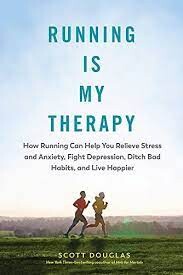

The running intervention involved expert guidance from trained therapists, as it can be harder to keep consistent.
Experts explain that several factors go into depression treatment—and medication is a crucial part of that—but lifestyle factors may also play a key role.
For better depression management, research has often suggested exercise as a way to ease symptoms and optimize therapeutic approaches—for example, one study notes that exercise may improve how you respond to antidepressants. But a recent study, published in the Journal of Affective Disorders, stacks exercise like running directly up against medications to see which is more effective.
Turns out, they have similar benefits, but running led to other physical health improvements while antidepressants had the opposite effect.
Researchers recruited 141 patients with diagnosed depression and/or anxiety and offered them the choice of either selective serotonin reuptake inhibitors (SSRIs), an antidepressant medication, or group-based running therapy for 16 weeks—45 chose medication while 96 selected running.
The running group exercised in a therapeutic setting at least twice a week, guided by mental health practitioners who were trained as running therapists. While these experts didn’t offer direct talk therapy, they did offer guidance on things like connecting to the body and physical boundaries. At the beginning of the program, the experts also discussed past experience with exercise and shared information on things like food, fatigue, injuries, sleep, and recovery.
The running sessions lasted 45 minutes, including a 10-minute warmup, 30 minutes of jogging, and a five-minute cooldown. Each participant wore a heart rate monitor and the goal was to jog at an intensity of 50 to 70 percent of heart rate reserve for the first four weeks, and 70 to 85 percent in the final 12 weeks.
At the end of the trial, around 44 percent in both groups showed improvement in depression and anxiety, but only those in the running group had additional benefits in terms of better blood pressure, heart function, and waist circumference. Those in the antidepressant group showed slight deterioration in these metabolic markers.
“The most important takeaway is that we showed running therapy and antidepressant medication are equally effective in treating depression and anxiety disorders when looking at mental health outcomes, including remission and response rates,” said lead researcher Josine Verhoeven, Ph.D., researcher in the department of psychiatry at Vrije University in Amsterdam.
Verhoeven said the exercise itself likely led to the favorable outcomes for those in the running group, but also factors like being outside, getting exposed to daylight, and setting and reaching goals also likely helped to enhance the mental benefits.
“When looking at somatic health outcomes [those relating to the body], running therapy outperformed antidepressant medication, as it had several beneficial effects for somatic health, while antidepressant medication’s side effects actually decreased somatic health variables,” Verhoeven added.
That’s because antidepressants have known side effects that include weight gain, increased blood pressure, and decrease heart rate variability, she told Runner’s World.
Despite the findings of this recent study, this shouldn’t cause people who need antidepressants to veer away from medication, which can be very helpful in treating certain forms of depression, said Lindsey Law, M.D., psychiatrist at Colorado-based Prairie Health. She told Runner’s World that many factors go into diagnosis and treatment of depression, including the role of lifestyle behaviors and the use of medication.
Also, if you’re currently on antidepressants and want to try easing off that medication with a strategy like exercise, definitely check in with your healthcare provider because you need to reduce those meds gradually rather than stop them suddenly, according to Law.
In general, doing more exercise like running can be an effective complement to depression therapy, but it’s important to tailor your approach based on your individual situation—and to get guidance from health professionals along the way.
“One interesting aspect of our research was that most patients chose running as an intervention, but many found it difficult to complete the 16 weeks,” said Verhoeven. “I think this shows how difficult it is to change behavior and that’s true for everyone, but especially when depressed. That’s why we’re now offering running therapy for patients with depression, so they have personal guidance when trying this intervention.”
(11/18/2023) ⚡AMP6 Nutrition Podcasts to Help Fuel Your Next Run or Race
Nutrition can be the toughest part of training for many runners. These podcasts offer advice you can listen to on the run.
If you’re the type who likes to listen to podcasts on your runs (or while working or performing everyday tasks), you’ve probably turned to a running podcast or two. These days, you can find podcasts that cover the sport from a range of views, including interviews with pro athletes, everyday runners, or experts dishing out advice, making it hard to narrow down your selection.

Health and wellness, specifically nutrition is no exception, as virtually every running podcast out there will touch on it in some form or another. Nutrition advice can be key to training, though, as it’s often an overlooked aspect that can help you get to the start and finish line of a race with energy.
Here, we’ve rounded up six nutrition podcasts that not only offer fueling advice for runners, but provide the info in an entertaining and easy-to-understand format.
1. If you’re looking for specific, expert-backed fueling advice...
Eat for Endurance
The Eat for Endurance podcast is not only hosted by a board-certified sports dietitian, but registered dietitians also make up the majority of the show’s guest list. Host Claire Shorenstein covers how athletes can fuel themselves for longevity in their chosen sport both by interviewing fellow experts, profiling high-performing athletes, and imparting relevant advice in solo episodes.
The show covers everything from fueling for road races, triathlons, and ultra distances to navigating peri- and post-menopause.
2. If you’re looking for nutrition advice geared toward women...
Female Athlete Nutrition
Hosted by sports dietitian Lindsey Elizabeth Cortes, whose clients include NCAA, professional, and recreational athletes, Female Athlete Nutrition caters to the needs of female athletes, as the name of the show implies.
Because nutrition needs for male and female athletes can vary drastically, especially if a female athlete has dealt with issues like low iron or an eating disorder, it can often be a game-changer for female runners to turn to an expert who is well-versed in those needs. The podcast covers all aspects of fueling for performance, as well as how things like body image and mindset can come into play.
3. If you want more entertainment with your nutrition tips...
The Run Eat Sleep Show
It’s safe to say content creator and influencer Tommie Runz has his nutrition down pat, having brought his marathon PR down to 2:46 at this year’s Boston Marathon from his first marathon, which he clocked in 3:13:30 in 2019 and after only starting to run in 2018, a year after getting sober.
As the name of his podcast implies, eating habits are a core aspect of any runner’s progress. In addition to being very open about his vegan lifestyle, he frequently interviews experts like registered dietitians in addition to professional athletes about their fueling.
4. If you want solid nutrition advice, as well as other topics...
The Running Explained Podcast
The Running Explained Podcast, hosted by RRCA Level 1-, UESCA-, and USATF Level 1-certified coach Elisabeth Scott, covers a wide variety of info about a healthy running lifestyle for athletes of all abilities and training levels. This includes nutrition—from how to fuel your overall training to preventing bone injuries—with advice coming straight from experts like registered dietitians and physical therapists.
5. If you want to focus on injury prevention...
The Injured Athletes Club
The “injured athletes club” is a club no runner wants to be a part of, but one nearly every runner can relate to at some point in their journey. This show, hosted by health and fitness journalist (and Runner’s World contributor) Cindy Kuzma and mental performance consultant Carrie Jackson, covers resources and personal stories from athletes on how to physically and mentally navigate and overcome injuries. But they also answer athlete questions and interview relevant experts to cover related topics, including how one’s nutrition can play into their injury prevention.
6. If you want a longer wellness deep dive...
The Rich Roll Podcast
With most episodes lasting around two hours long, it’s safe to say Rich Roll’s show dives deep into the wellness topic at hand, which frequently includes nutrition.
Roll, a vegan ultra-endurance athlete in his own right, knows a thing or two about sports nutrition himself, but his show serves as an extended opportunity for experts and fellow athletes alike to educate and inspire listeners through their perspectives on health and wellness topics, including nutrition.
(11/18/2023) ⚡AMPby Runner’s World
Shorter Days Often Equals More Night Running—Here’s How to Do It Safely and Successfully
Dial in your nutrition, gear, and more with this expert-approved advice. With the sun setting earlier and the shortest day of the year quickly approaching, there’s not much time left after work to get in a run. To make matters more complicated, if you’re not a morning runner or have too many pressing responsibilities first thing in the day, you might be left with little to no light at the end of the day to squeeze in some miles.
In fact, many runners opt to take their workout inside on the treadmill this time of year, and that’s understandable. In a recent Runner’s World Instagram survey of 5,200 runners, 38 percent of runners avoid running outside if it’s dark because of safety concerns or the risk of injury.


However, with the right preparation and gear, you can still get in those miles after work. And with this advice from seasoned run experts who frequently run at night and in the dark, along with a dietitian, we have all the info you need on how to make night running enjoyable, safe, and effective.5 Tips to Make Night Running Successful
1. Start With the Right Gear
Perhaps most important to successfully running at night is having the gear for it. Much like you wouldn’t go out on the hottest day without sunglasses, sunscreen, and extra hydration, there’s important gear to make night running more comfortable and safe.
“The most important thing is to be seen—any kind of light or reflective gear is useful,” says USATF level II coach, Jamie Brusa who has been leading a weekly Tuesday evening run in Bozeman, Montana since 2017.
Brusa prefers running with a lighted belt around the waist, like the Ultraspire LED waist light, and recommends to wear a headlamp so you can see (and it helps others spot you too), Brusa tells Runner’s World.
Ewen North, director and head coach of Revolution Running who leads an evening run group in Boulder, Colorado echoes the importance of gear that makes you visible and suggests a lighted vest that illuminates around the chest and back. North also suggests looking for reflective gloves—the more points you can have visible, the better, he says.Keep in mind that you could be more prone to slippery conditions like black ice when running at night, because it’s colder this time of year and obviously more difficult to see in the dark. For that reason, it’s smart to opt for a trail shoe for added grip in snowy or icy conditions. If you’re dealing with potential ice though, North recommends hobnails, which are short nails attached into the soles of shoes that increase the traction of the shoe. North also recommends the brands La Sportiva and Icebug for trail shoes.
“I use ⅜-inch flat head sheet metal screws and just drill them into the bottom of the shoes,” says Rachel Topf, UESCA Certified ultrarunning coach at The Mountain Project in Bozeman, Montana, who has always studded her shoes herself to easily adapt them for different terrain.
2. Plan Out Your NutritionYour fueling may change a bit if you’re getting your miles in at night as opposed to first thing in the morning. To make sure you’re fueled for your night run, without getting an upset stomach, pay closer attention to what you’re eating during the day.
“Eating enough at lunch time is essential for evening runners’ energy, blood sugar, and ability to complete training runs or workouts,” says Starla Garcia RDN, a registered dietitian and owner of The Healthy Shine in Houston. “The biggest concern I hear for evening runners is having enough energy for their training and avoiding stomach issues. I always recommend creating structure and choosing items that are easy to eat and take little time to heat.”
While you want to make sure you have enough to eat at lunch, avoid foods that can cause or lead to stomach issues like cramping, urgent bowel movements, and gas, Garcia says. This includes big salads, lentils, legumes, hummus, broccoli, cauliflower, kale, cabbage, and brussels sprouts. Instead, opt for foods like arugula, carrots, tofu, lean animal proteins, or go for avocado as a dip instead of hummus.
If you like fruit as a mid-afternoon snack, Garcia says to avoid apples (as they can be harder to digest and cause more gas and cramping) before your run, and instead opt for more easily digestible fruits like kiwis, berries, bananas, or an orange.
When you’re running later in the day it’s important to feel satiated before you head out so you’re not running on empty, but you also don’t want to eat too close to your run time. With that in mind, if you’re running within the hour and need a quick snack, aim for an easy-to-digest option with about 15 to 30 grams of carbs like fruit snacks, a cup of juice, two graham cracker sheets, or a sports drink.
If you have a little more time—like over an hour to 90 minutes—pair the carb with protein, like peanut butter. If your run isn’t for another two hours, you can pair up to 45 grams of carbs with protein. That might look like oats with nut butter, cereal with milk and nuts mixed in, or half a turkey sandwich, Garcia says.
Finally, you should also pay attention to your postrun nutrition. If you’re running in the evening and eating dinner late that doesn’t mean you should be eating less. “I do not necessarily recommend a smaller meal, but rather a meal that is easier to digest,” Garcia says.
Her dinner suggestions for after a night run:
Veggie soup with beans mixed in and avocado toast
An omelet with veggies and cheese, plus fruit and yogurt
A protein smoothie and turkey sandwich
Tuna or chicken salad with crackers and fruit
Chicken or tofu spring rolls and a cup of soup
Two chicken quesadillas and fruit or canned refried beans on the side
3. Find a Safe Space to Run and Have a Plan
If you’re running in the dark by yourself, Brusa recommends finding a well-lit parking lot or track to run, if you don’t feel safe on the streets or sidewalks. She typically takes her group to a parking lot on a nearby college campus (running laps makes intervals easy!), and running with a group is always a good option when clocking miles at night, too.
Also, consider driving the route you plan to run at night during the day to get a feel for your surroundings, and determine if it feels safe for you.
If you don’t have any of these options, let someone know where you’re planning to run before you head out. Many running watches also have safety features that can offer some confidence on the run, including LiveTrack and Incident Detection on Garmin and Fall Detection on Apple Watch. Strava subscription users can also use the Beacon feature, which sends your location via text to trusted friends and family so they can keep tabs on your location (they don’t need a subscription to access your whereabouts).You can also consider carrying something to protect yourself, like the Birdie Safety Alarm or pepper spray.
4. Reframe Your Expectations
When you’re heading out for a run in the dark it’s important to remember you may not be quite as speedy as you are in the daytime. Keeping an eye on your footing, especially if you’re running on trails, can slow you down, Topf says.
Brusa agrees, saying many runners notice, in general, that the first half of their run might feel slower as the body is warming up, compared to the second half, which is often even more pronounced in the winter. Regardless of temperature, though, running in the dark requires adjusting to your surroundings and you may not see quite as clearly, which can also affect pace, she adds.
If you’re not accustomed to running in the dark at night, and the cold too, remember to give yourself grace. North says just acknowledging that it’s going to be cold and dark and maybe not the best run ever takes the pressure off so you can just chase those miles.
Brusa adds that you should focus on how you feel and not if you’re running a few seconds slower per mile than you normally do in daylight. Embracing effort-based training is the way to go in this case.
5. Lean Into the Fun
Once you’ve made the decision to get out there at night, remember to have fun! Enjoy the colorful lights that are often on display this time of year, and take pleasure in seeing your neighborhood from a different perspective.
“In the winter, we try to have more fun with running, rather than it being hard and fast and serious,” North says of his running group, which averages about four to six miles on an evening run. That can mean letting go of pace, distance, and just being more mindful of enjoying the moment, and certainly being proud of yourself for braving the dark.
If you’re running with friends make a plan to grab a bite to eat after you run, and who knows, that might help you start a new routine that keeps you going out for more miles throughout winter.
“Especially in the winter, I think it can be really nice to have those dark evening runs and to see the snowy trails in a different way than during the daytime,” Topf says of the unexpected perks of night running.
(11/18/2023) ⚡AMPby Runner’s World
Ethiopian legend Kenenisa Bekele confirmed for Valencia Marathon
Kenenisa Bekele is the latest entrant into the Valencia Marathon scheduled for December 3.
Legendary marathoner Kenenisa Bekele is not hanging his spikes anytime soon as he gears up for the Valencia Marathon scheduled for December 3.
The 41-year-old has been in the game for more than 20 years and he will be hoping to maintain his legacy once he takes on the starting line of the event.

He opened his season at the London Marathon where he failed to finish the race and he will be hoping to rise from the ashes in the streets of Valencia. The 2019 Berlin Marathon champion will be facing off against a very quality field.
Uganda’s Joshua Cheptegei will be making his debut in the streets of Valencia with the hope of a podium finish.

The Kenyan charge will be led by former world half marathon record holder Kibiwott Kandie, Titus Kipruto, and Alexander Mutiso who triumphed at the Prague Marathon earlier this year.
Bekele will be joining his compatriots Sisay Lemma and Leul Gebresilase and the trio will seek to finish in the podium bracket.
Bekele will have his work cut out considering he is yet to win a race since reigning supreme at the Vitality Big Half Marathon in 2020. He finished third at the Berlin Marathon and sixth at the TCS New York Marathon.
In 2022, the Ethiopian legend finished third at the Great North Run and went ahead to finish fifth at the Berlin Marathon when Eliud Kipchoge broke the world record.
Kelvin Kiptum’s course record time of 2:01:53 that he set last year could be in danger with the quality field that has been assembled.
(11/17/2023) ⚡AMPby Abigael Wuafula
Elite runners confirmed for 5th Abu Dhabi Marathon
Abu Dhabi: Abu Dhabi Sports Council has announced the star-studded line-up of international runners for the fifth ADNOC Abu Dhabi Marathon 2023.
An estimated 23,000 runners are expected to take part in the Dec. 16 event competing in the marathon (42.195 km), marathon relay, 10 km, 5 km, and 2.5 km races.
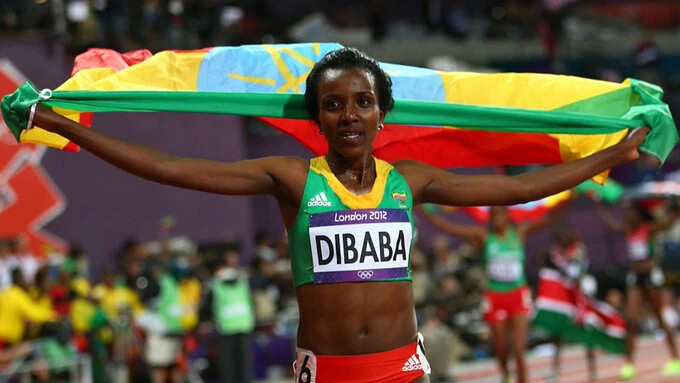
All races will commence at different locations near the ADNOC headquarters on Corniche Road and finish at the ADNOC Campus, near Bainuna public park.
Uganda’s Andrew Kwemoi, winner of the 2023 Milano Marathon — where he hit a personal best of 2:07:14 — will be joined by Kenya’s Kiptum Barnabas, who finished first in both the 2019 Hong Kong Marathon and the Buenos Aires Marathon in 2017. Barnabas’ compatriot, Leonard Barsoton, will also be competing in this year’s race, having set his own personal best of 2:09:06 in 2023.

The women’s race will feature Ethopia’s Tirunesh Dibaba, the 10 km Olympic champion 2017 Chicago Marathon winner. Joining her in the strong elite female line-up, also from Ethiopia, will be Hawi Feysa (2:23:38), and Maurine Chepkemoi from Kenya, the 2022 Enschede Marathon winner.
Suhail Al-Arifi, executive director of the events sector at Abu Dhabi Sports Council, said: “We are thrilled to welcome a group of top international runners for the upcoming fifth edition of the ADNOC Abu Dhabi Marathon next month.
“Their participation highlights the event’s significance locally and globally. The presence of well-known runners in this year’s line-up reaffirms Abu Dhabi’s and the ADNOC Abu Dhabi Marathon’s success in gaining international recognition in long-distance running.
“We’re delighted to invite people from all walks of life and diverse backgrounds to join us in celebrating physical fitness.
“Regardless of your fitness level, there’s a distance tailored just for you. We encourage everyone to be part of this enriching sports day on the streets of Abu Dhabi, the global capital of sports,” Al-Arifi added.
This year’s Marathon Village will again be located at ADNOC headquarters and will be accessible from Dec. 12 up until race day on Dec. 16.
(11/17/2023) ⚡AMPADNOC Abu Dhabi Marathon
The Abu Dhabi Marathon is shaping up to being first class marathon for both elite runners and average runners as well. Take in the finest aspects of Abu Dhabi's heritage, modern landmarks and the waters of the Arabian Gulf, at this world-class athletics event, set against the backdrop of the Capital's stunning architecture.The race offered runners of all abilities the...
more...




